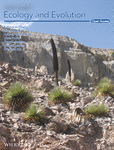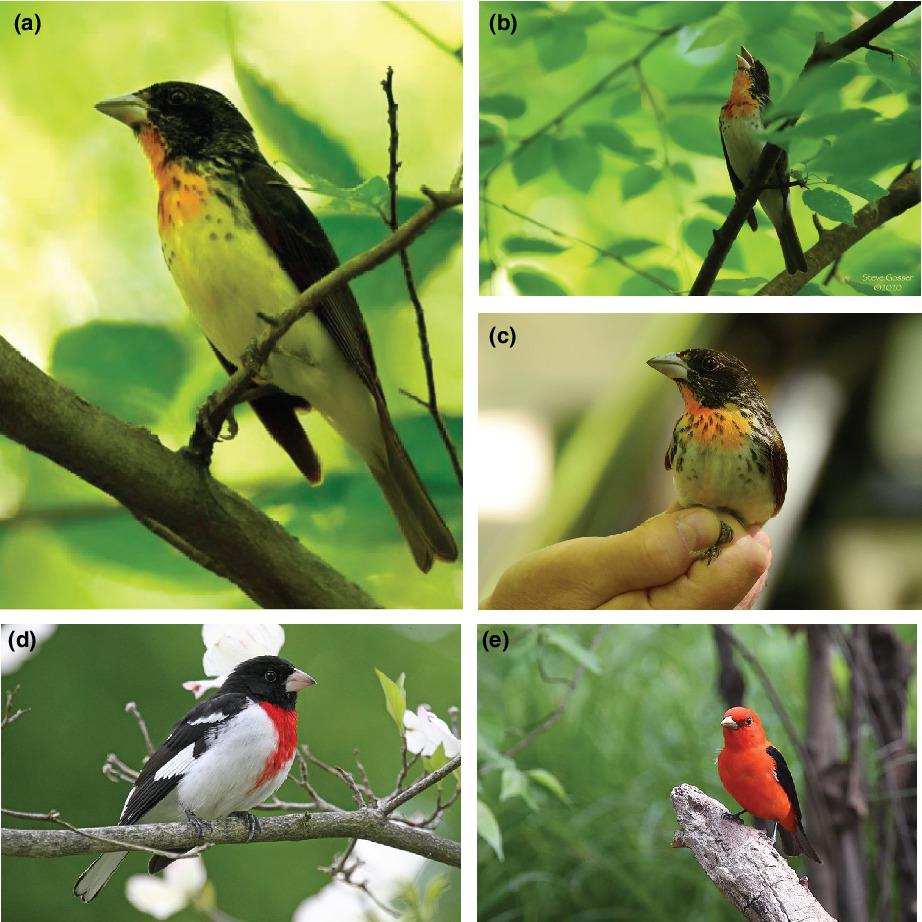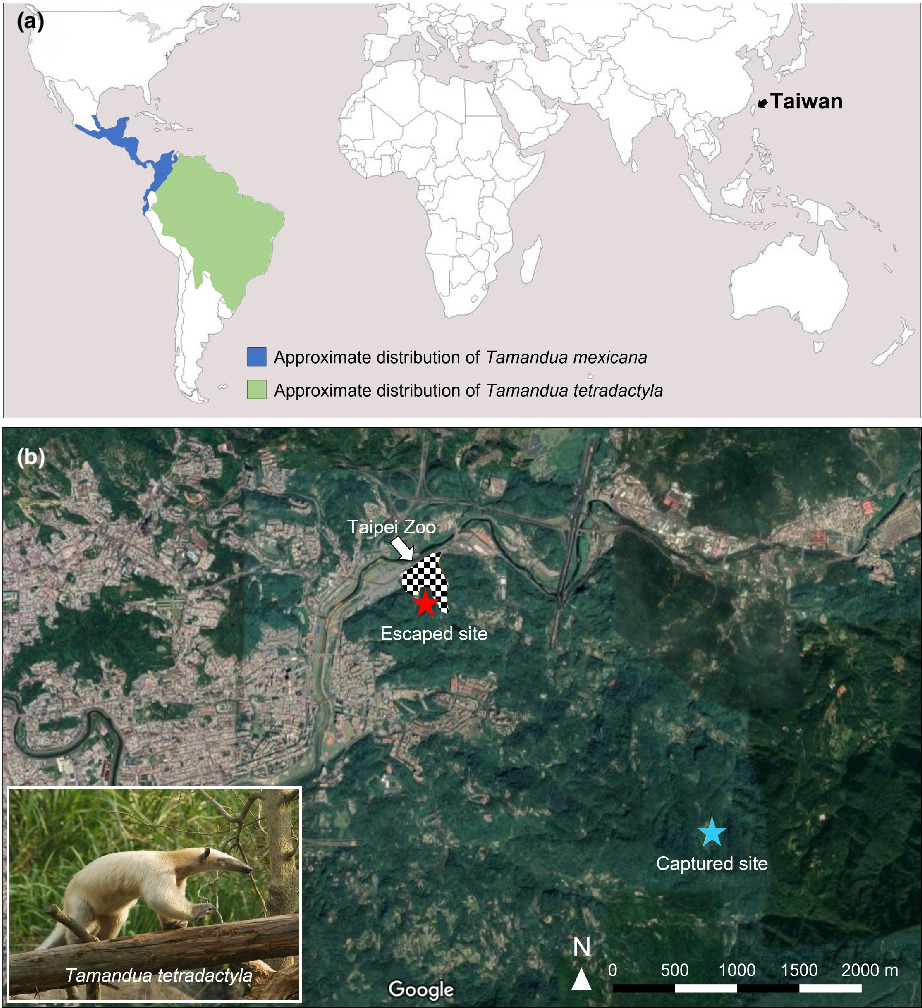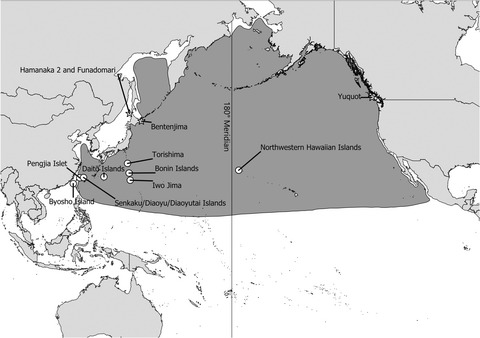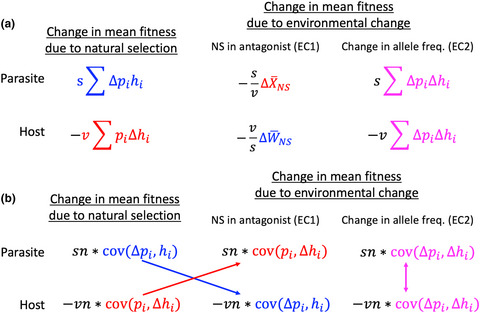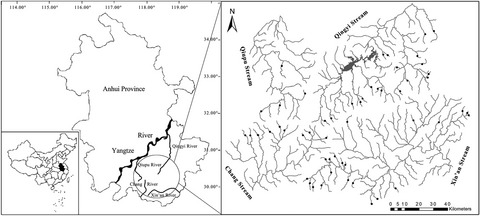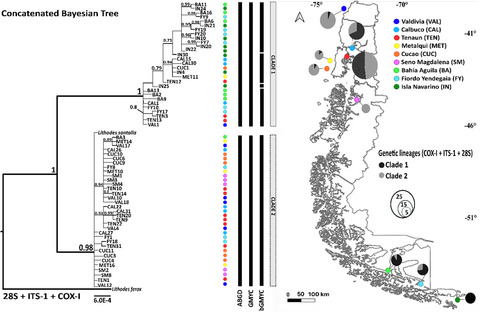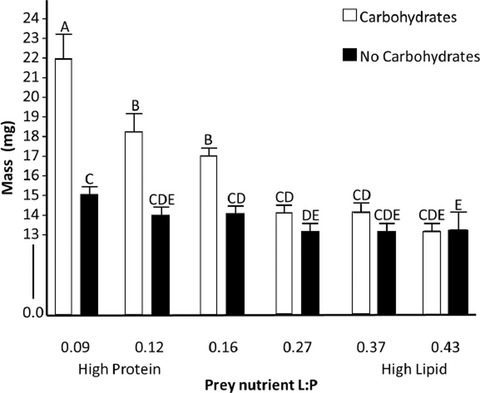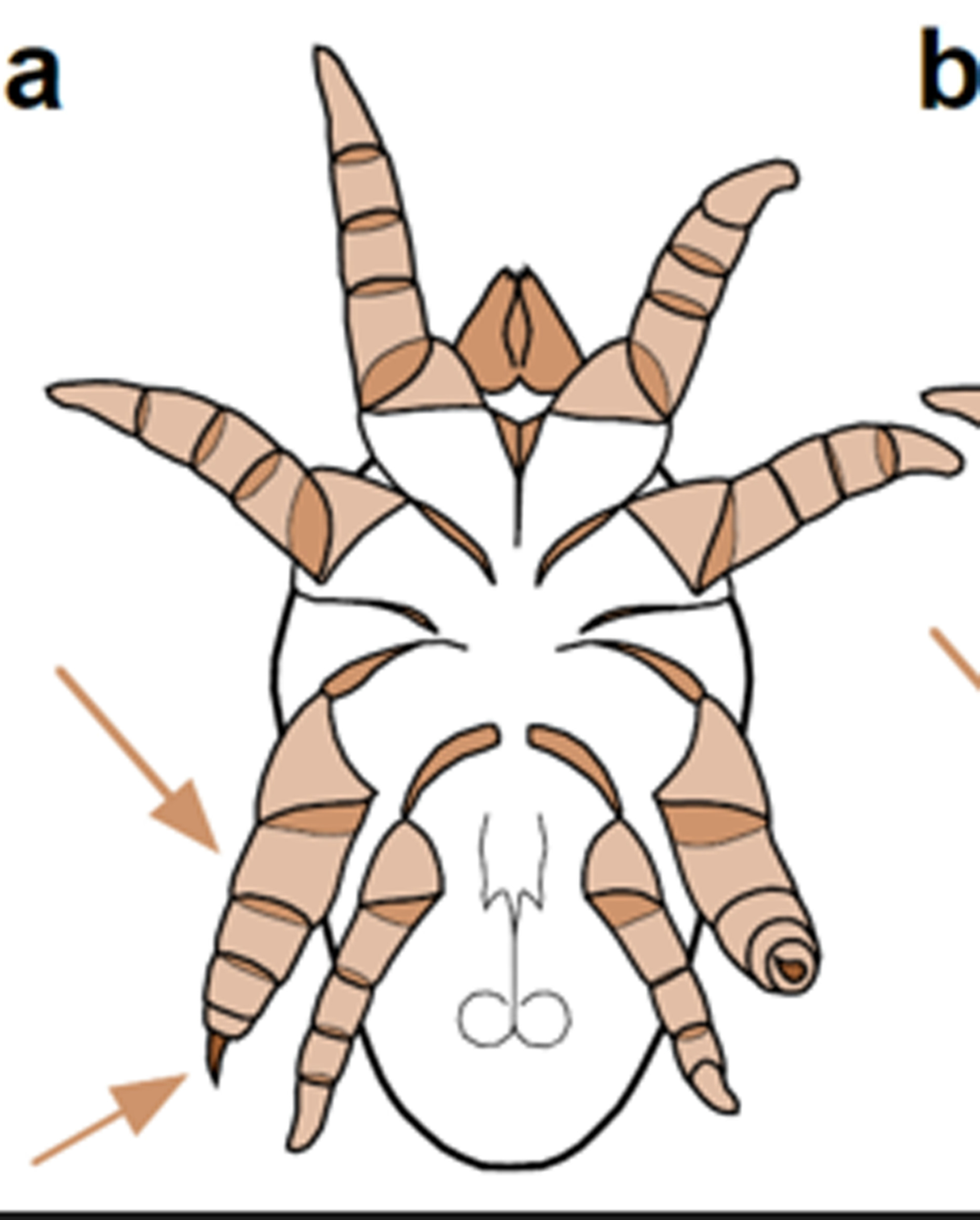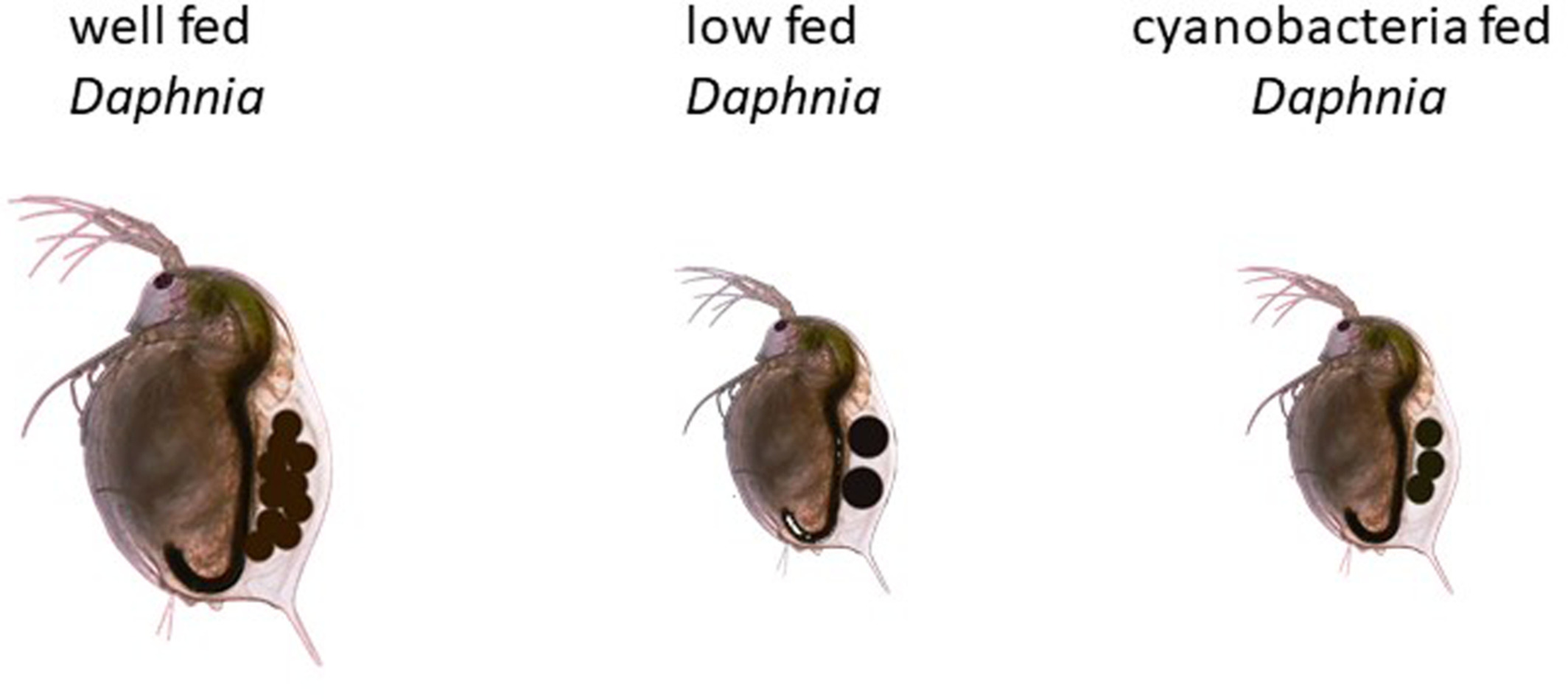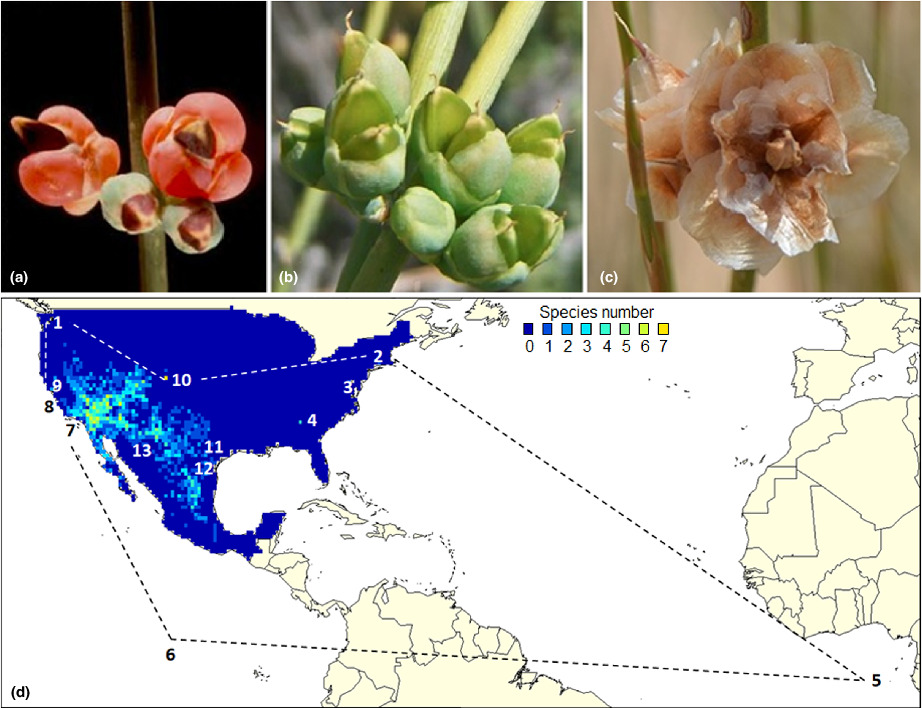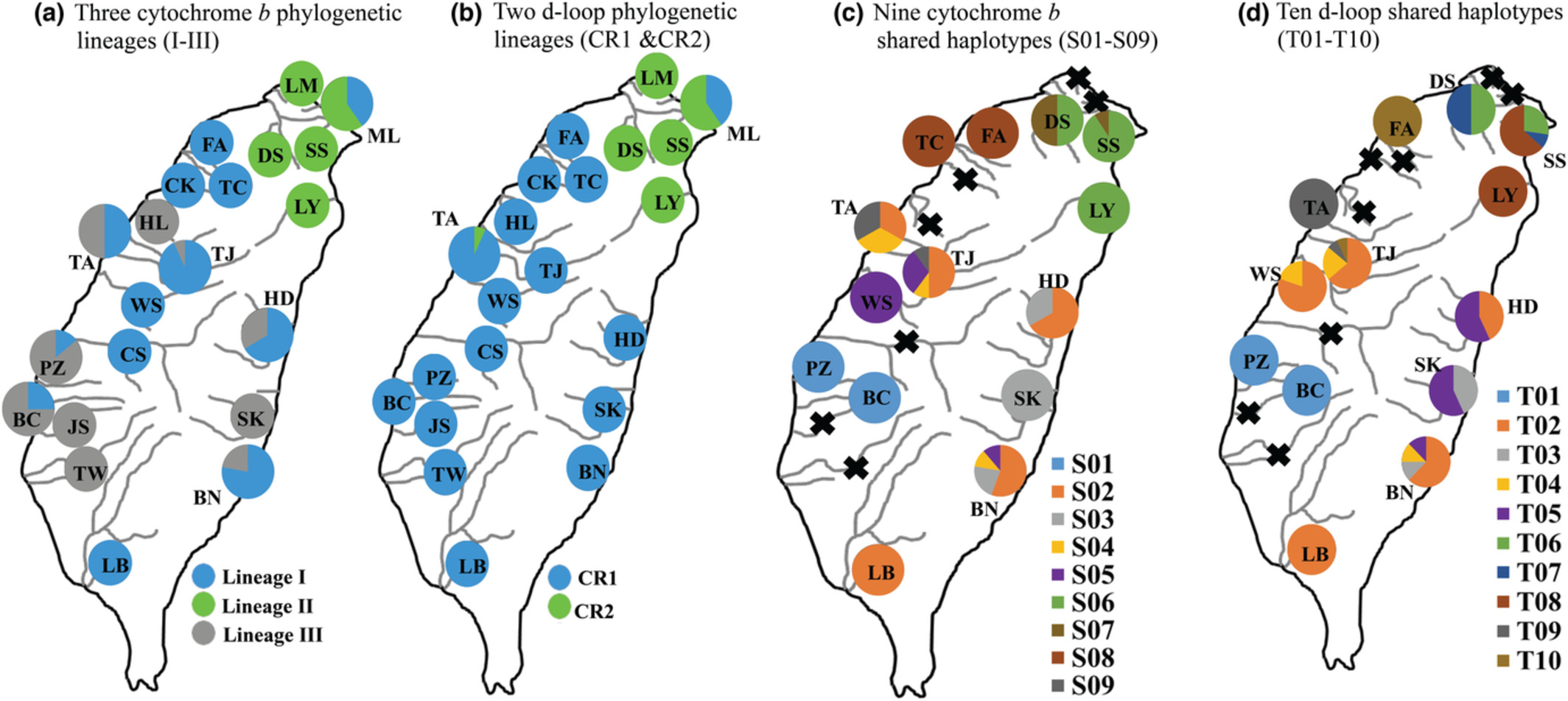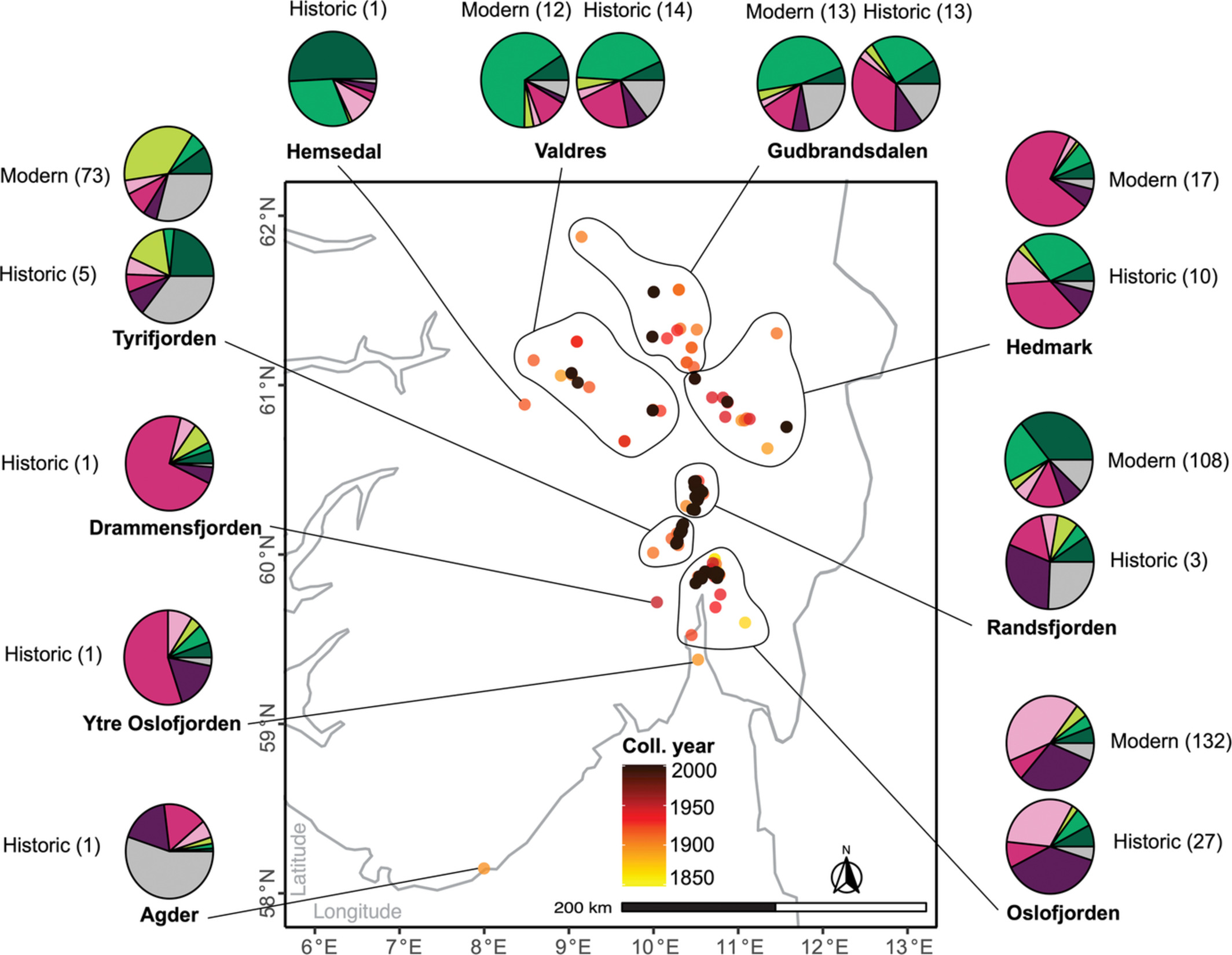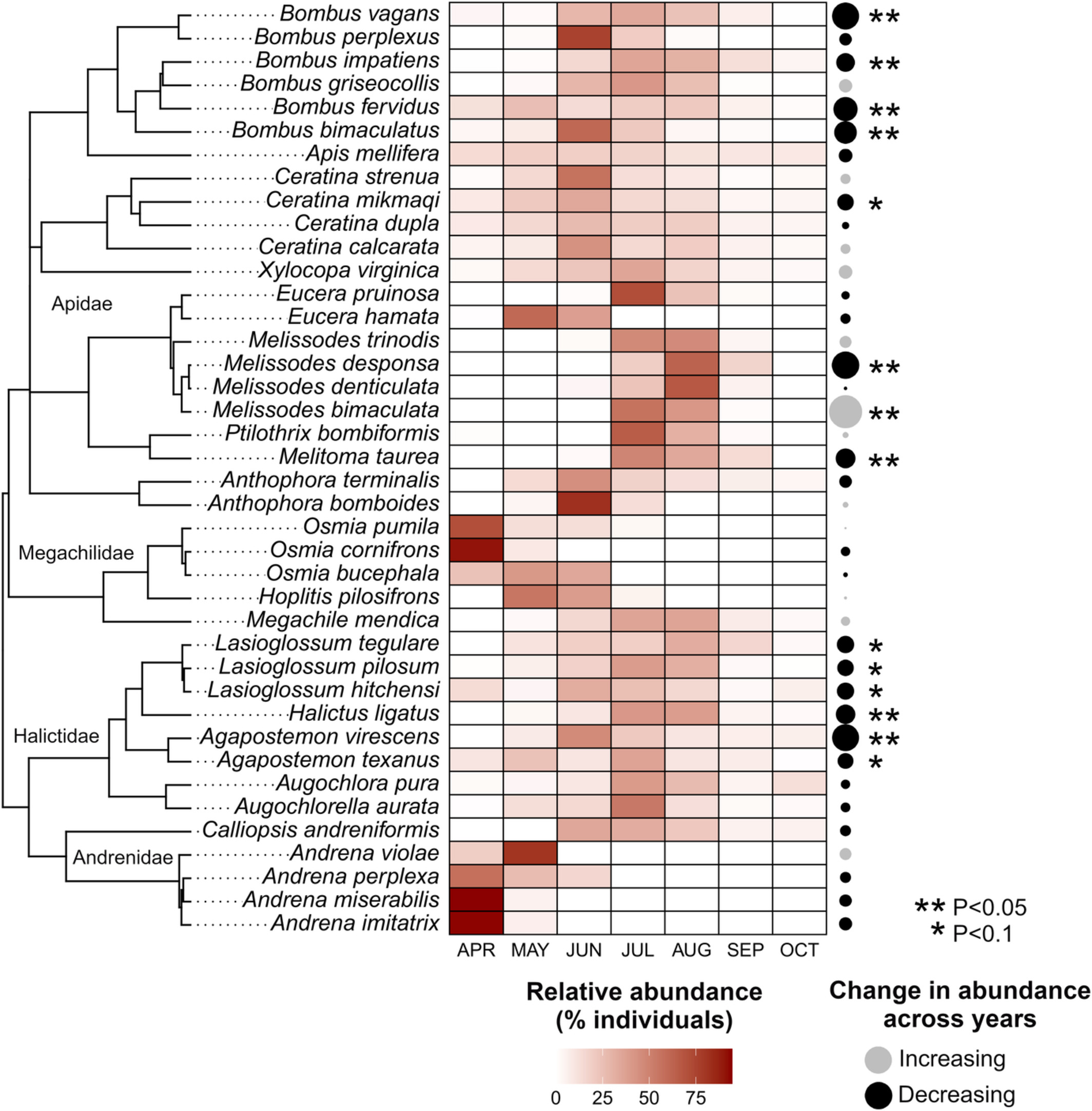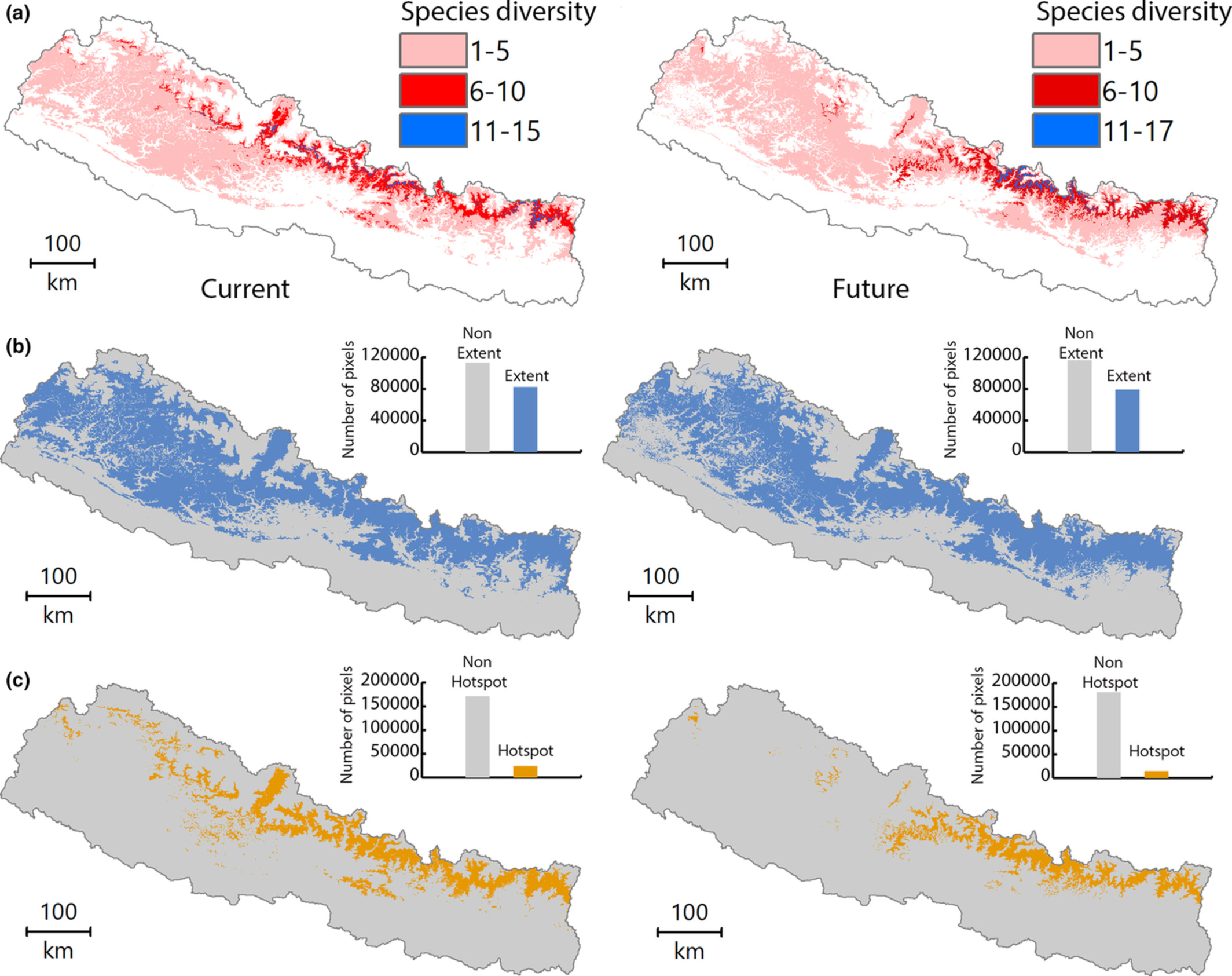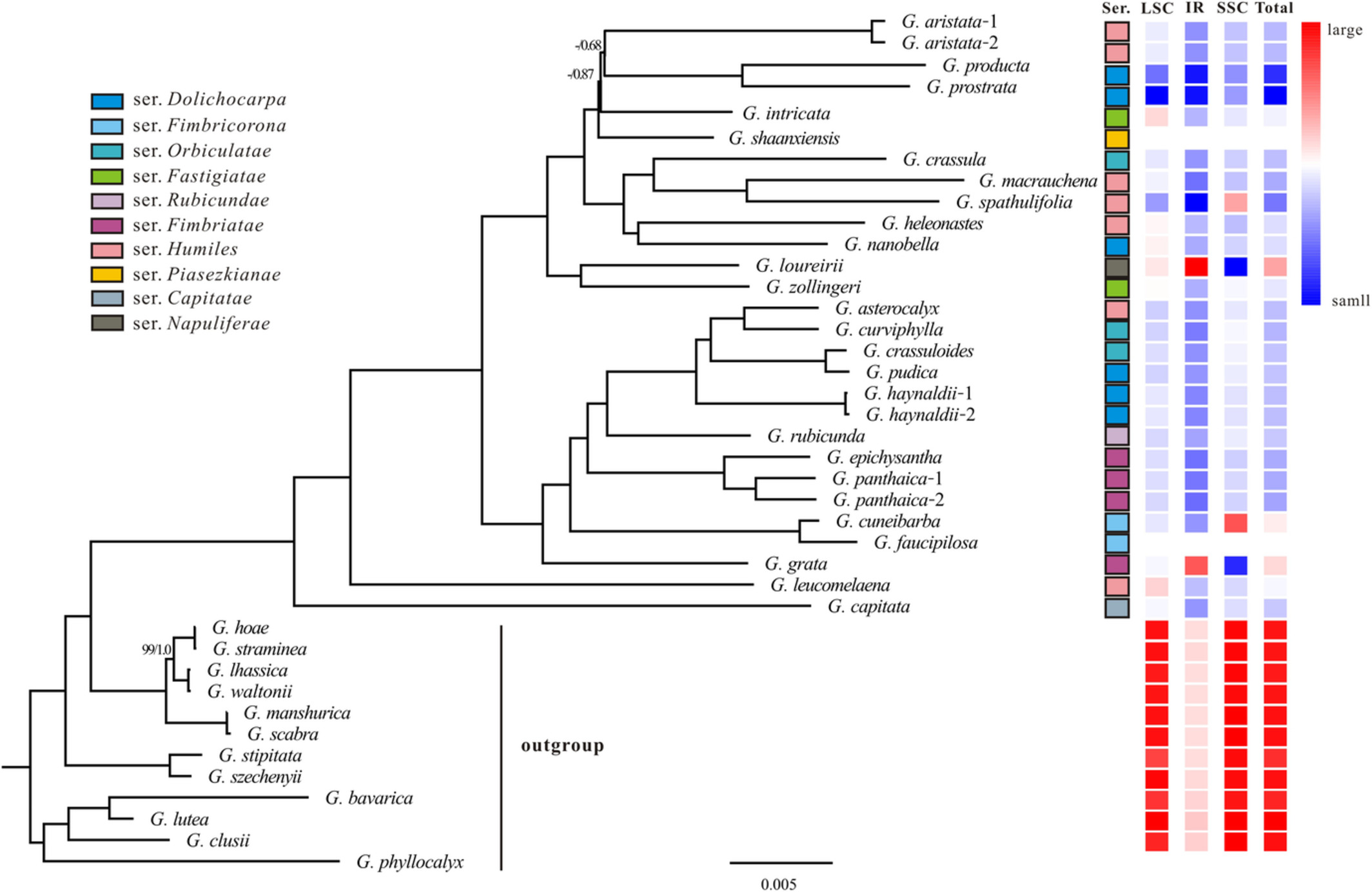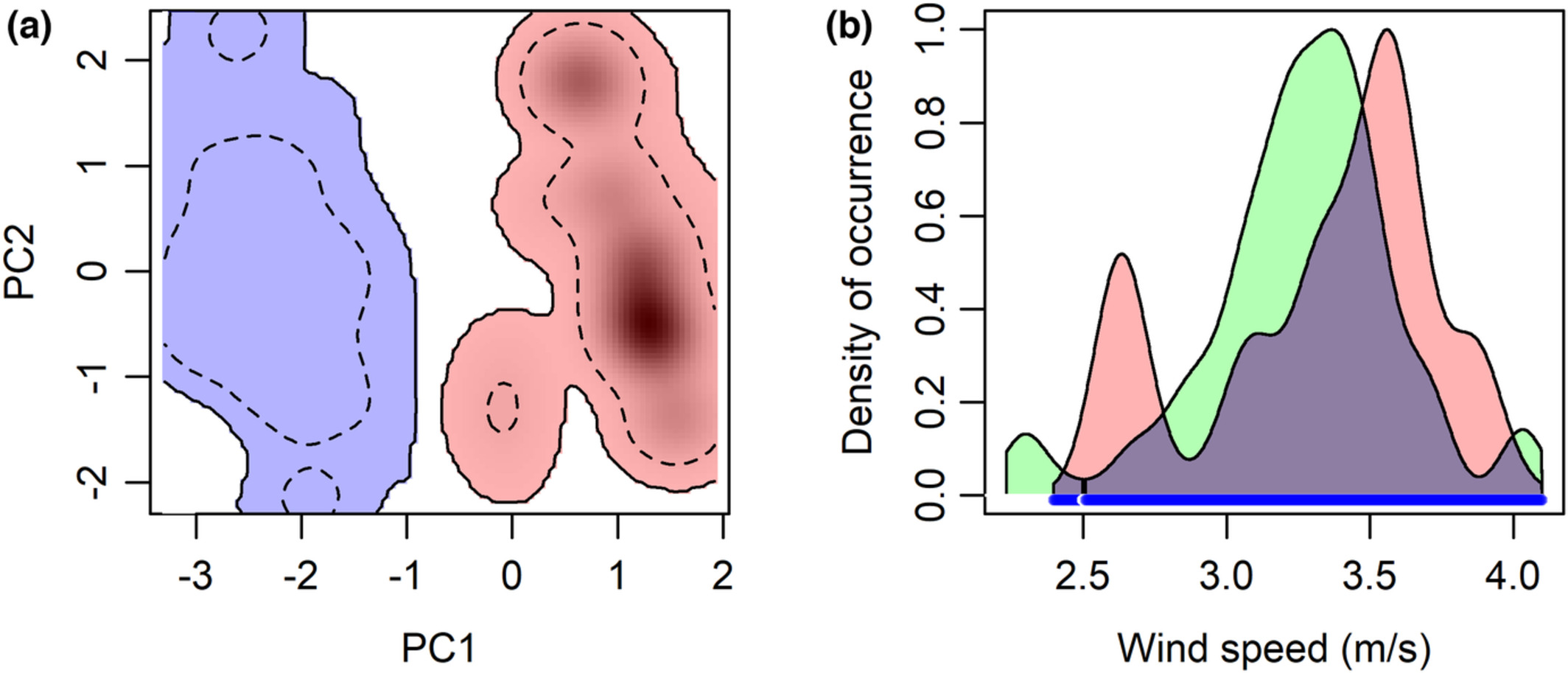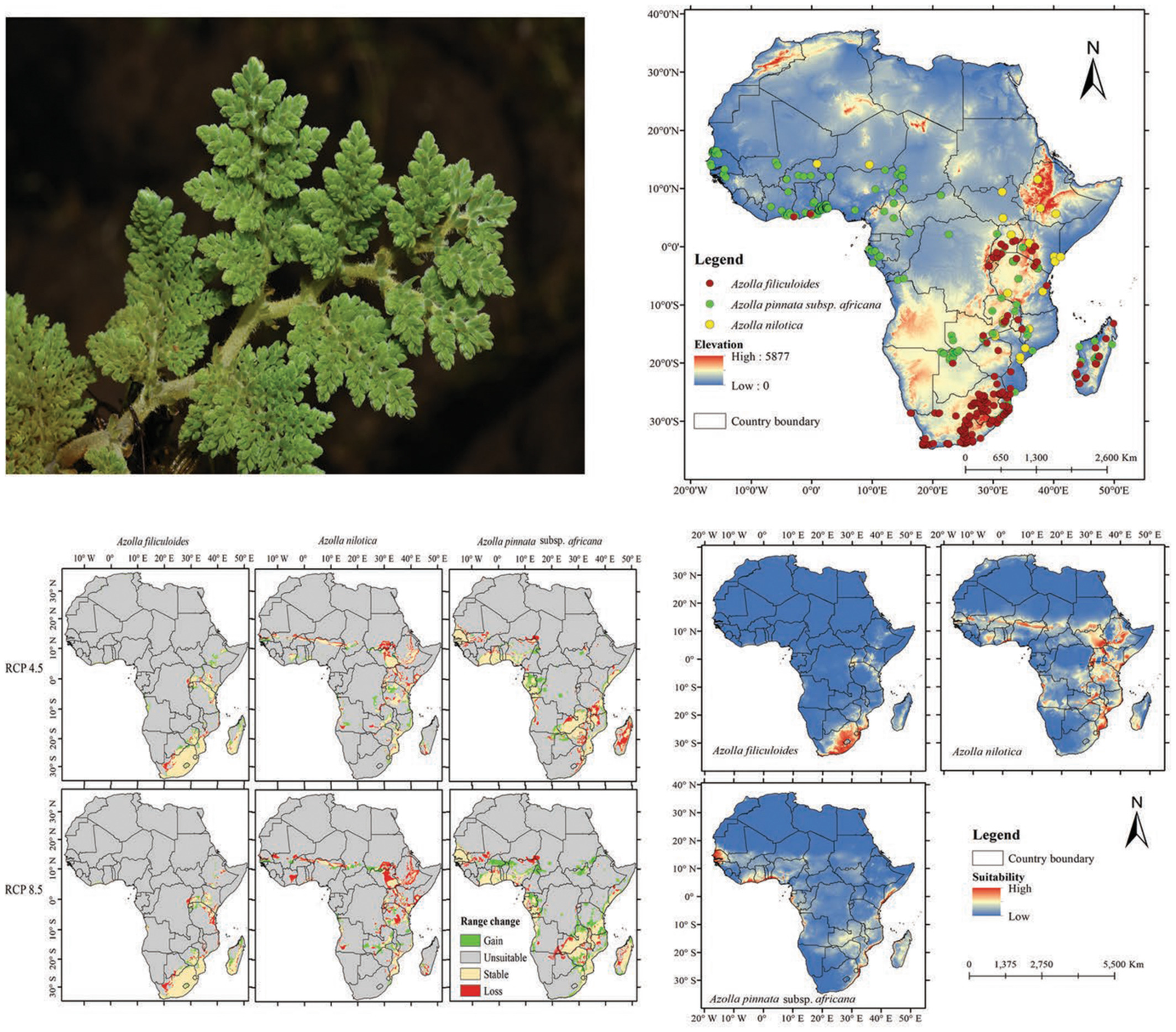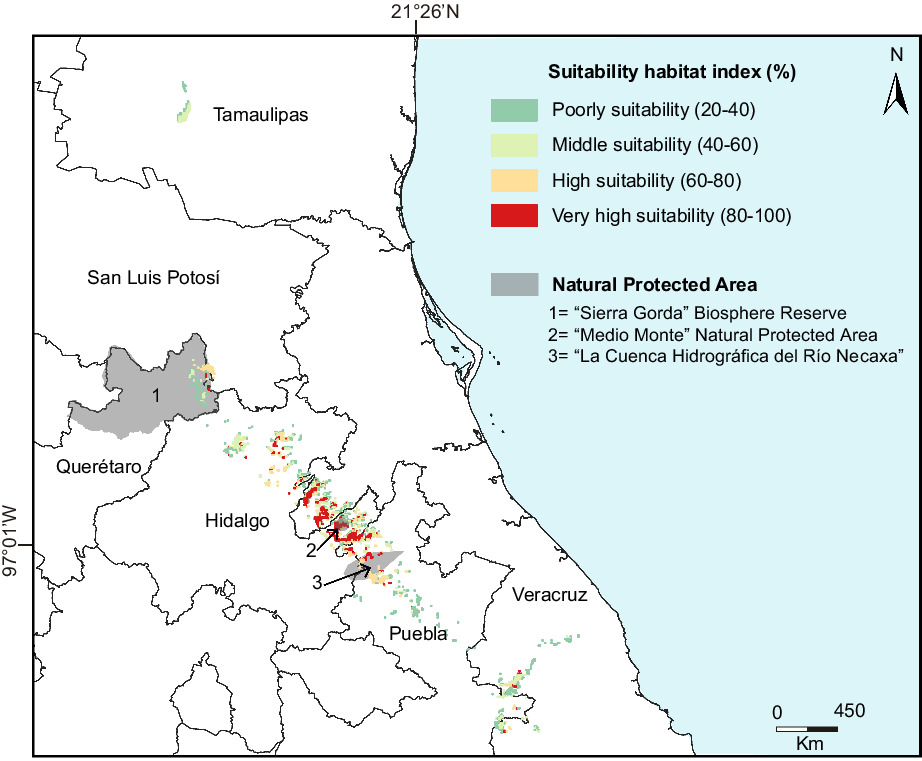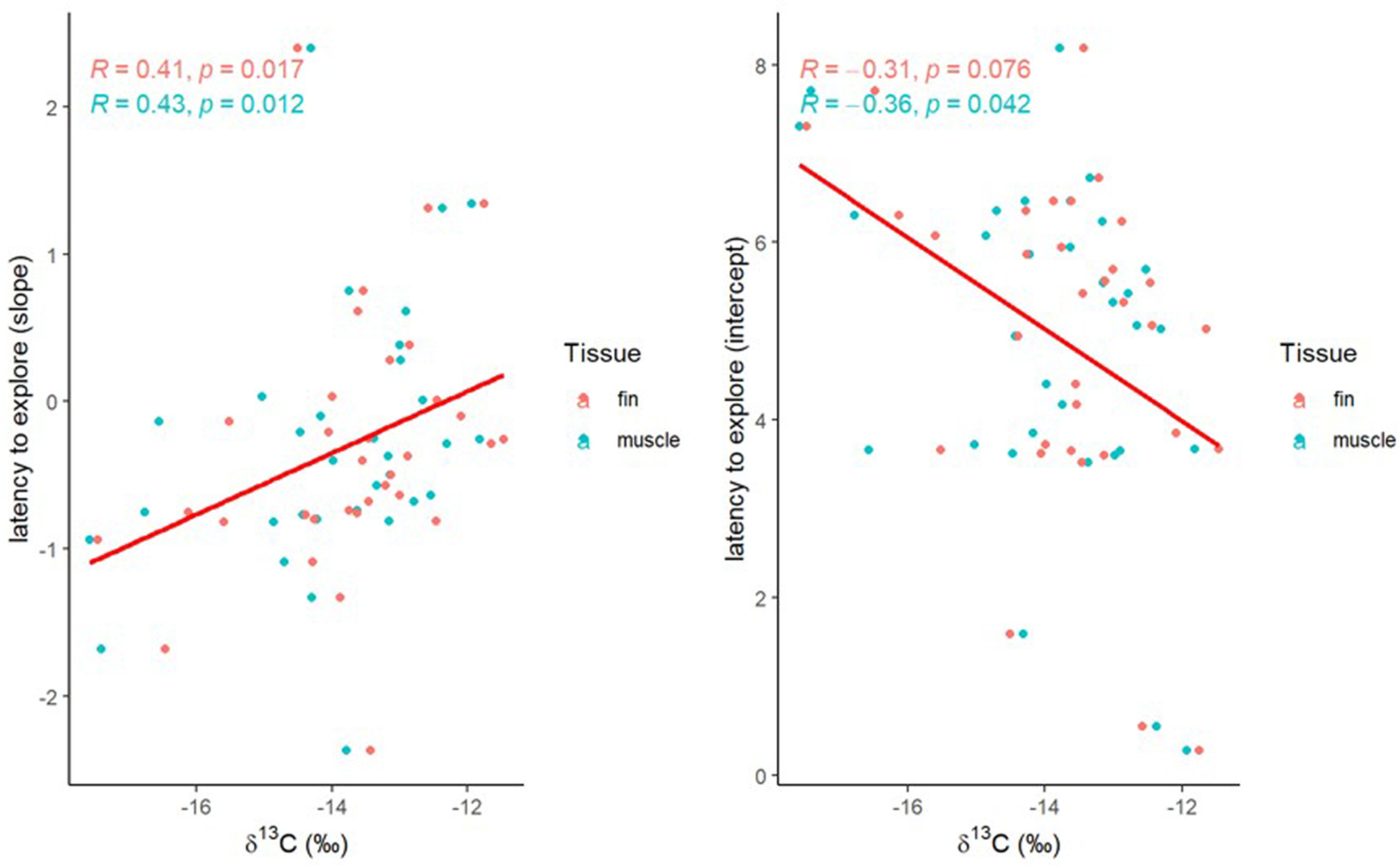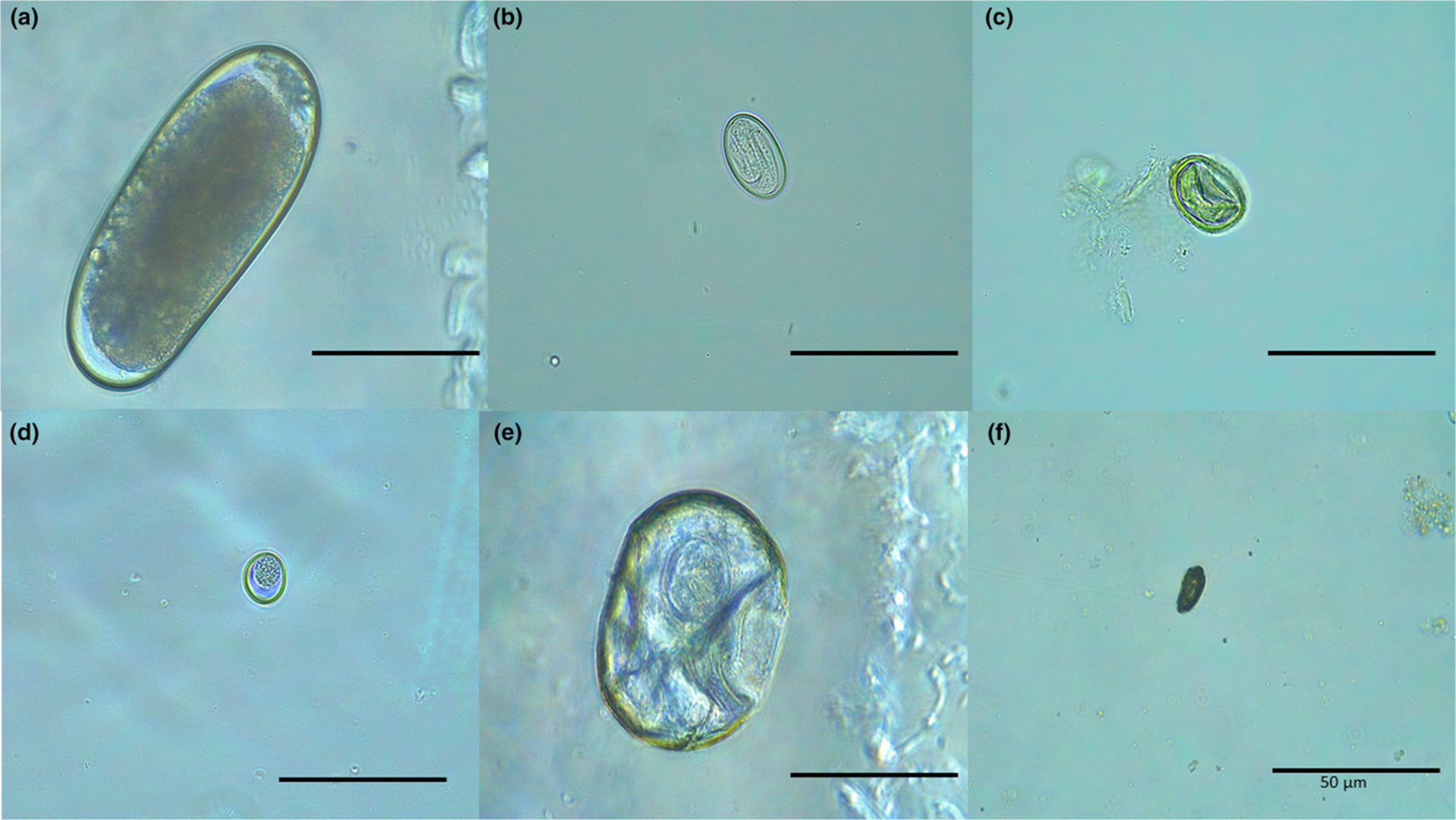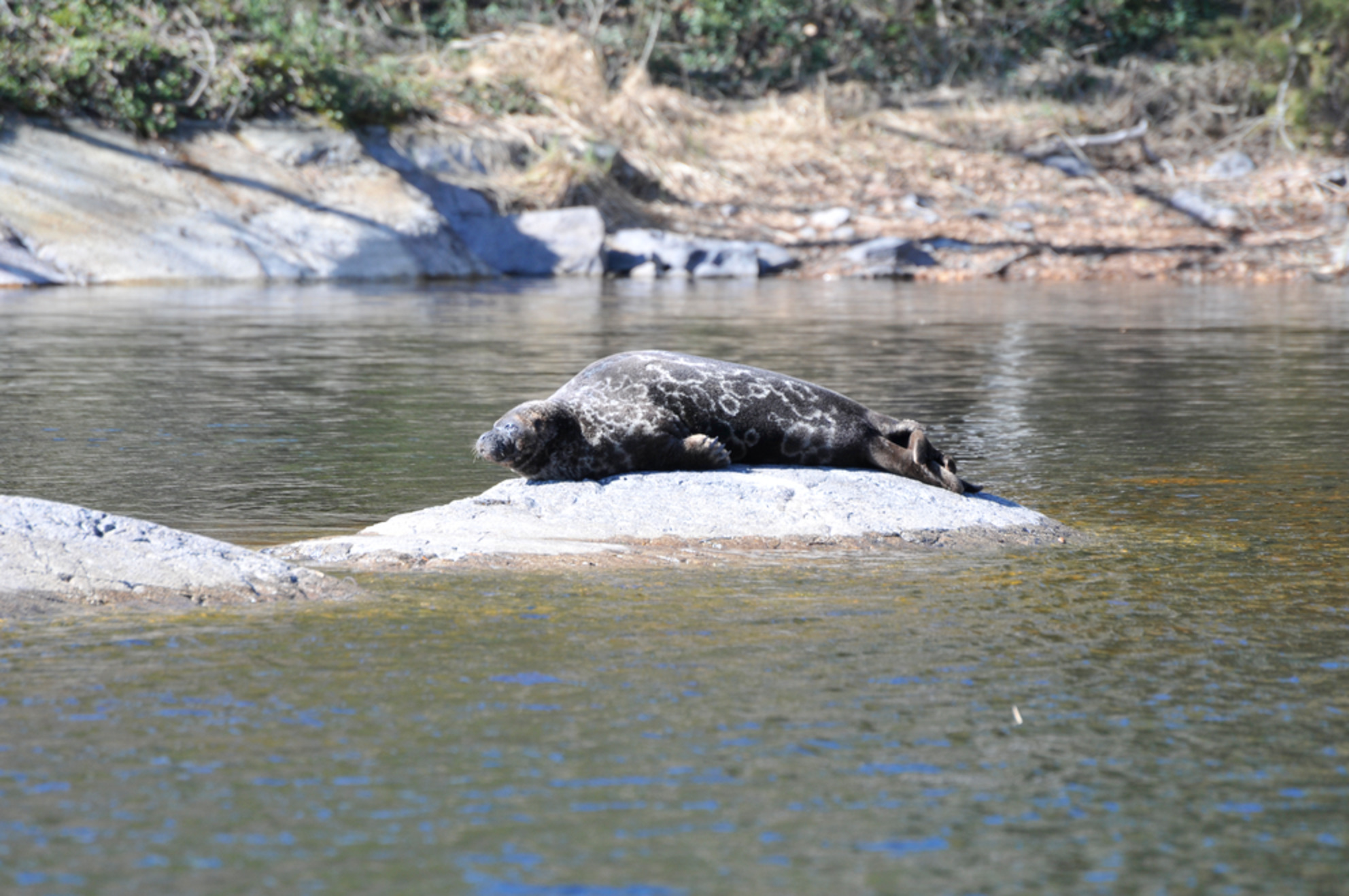Journal list menu
Export Citations
Download PDFs
ISSUE INFORMATION
ACADEMIC PRACTICE IN ECOLOGY AND EVOLUTION
Diversity beyond demographics: Environmental worldviews of forestry and natural resource undergraduate students
- First Published: 11 August 2022
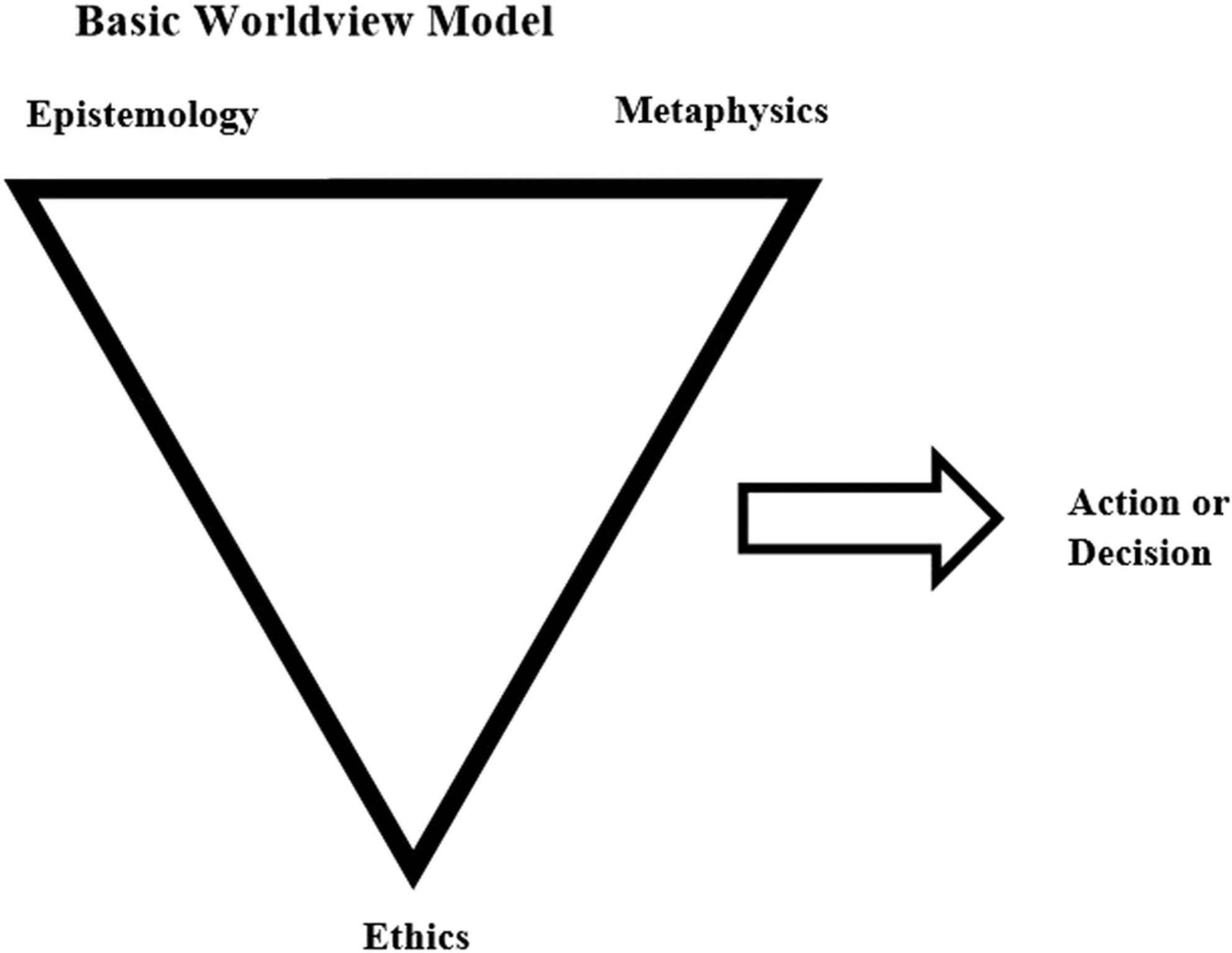
Our results suggest that, although forestry students' environmental worldviews are in some ways more closely aligned with the dominant western worldview than other students in natural resources, generally their worldviews reflect long-term generational shifts away from a strict resource-commodity value orientation, as documented in past research. Our findings highlight the importance of considering environmental worldviews as a dimension of diversity within the new-generation natural resource students. Future efforts toward understanding these levels of difference can be important assets in designing programs, which appeal to a wide variety of students, ultimately helping efforts to recruit and retain a diverse pool of aspiring natural resource professionals.
NATURE NOTES
Performance of wild animals with “broken” traits: Movement patterns in nature of moose with leg injuries
- First Published: 31 July 2022
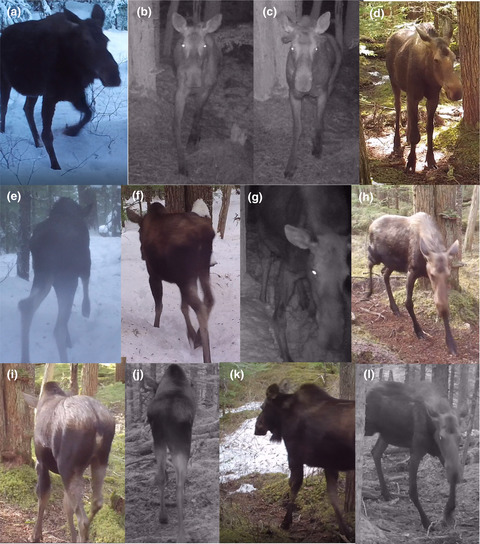
Major injuries should compromise organismal performance and prevent success in the natural world. Using camera trap video recordings along a remote trail in northern British Columbia (Canada), we identified 12 moose with leg injuries, including 7 to the carpus, 3 to the antebrachium, and 2 to the tarsus. The injured moose were limping in all cases, sometimes severely. However, we here show that these moose did not differ noticeably from uninjured moose in the direction, date, contagiousness, or speed of movement along the trail. We discuss implications for the efficacy of natural selection.
Hiding in plain sight: Cryptic enemies are found on cochineal (Hemiptera: Dactylopiidae), a scale insect of economic and cultural significance
- First Published: 31 July 2022
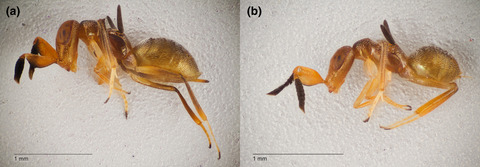
We characterize two cryptic enemies of the community of the scale insect cochineal in Tucson, Arizona, USA in the Sonoran Desert. A typically all black undescribed Hyperaspis sp. shares a niche with Hyperaspis trifurcata. We also show that a micropterous ant-mimic wasp is a semi-gregarious primary parasitoid of cochineal, to our knowledge the first parasitoid of cochineal described.
Genetic confirmation of a hybrid between two highly divergent cardinalid species: A rose-breasted grosbeak (Pheucticus ludovicianus) and a scarlet tanager (Piranga olivacea)
- First Published: August 2022
Diet composition of an escaped captive-born southern tamandua (Tamandua tetradactyla) in a nonnative habitat in Asia
- First Published: 04 August 2022
The role of a synanthropic bird in the nest niche expansion of a secondary cavity nester to man-made structures
- First Published: 04 August 2022
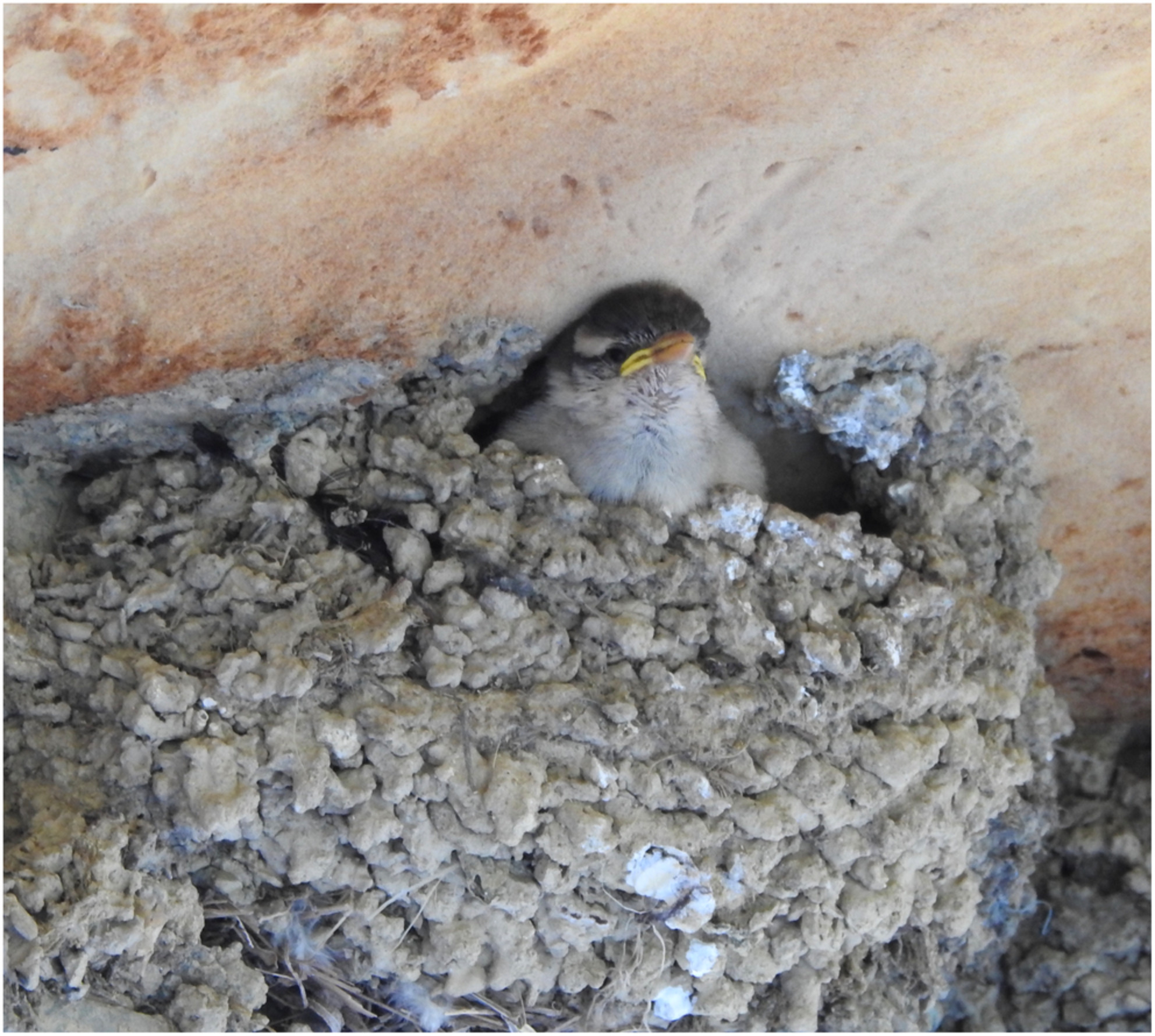
We reported a facilitative species interaction between Asian house martins and russet sparrows in a montane farming area of Taiwan. We found that Asian house martins constructed dome-shaped nests in human buildings that provided additional nest sites for russet sparrows, secondary cavity nesters with greatly declining populations in Taiwan. Russet sparrows that used house martin nests had reproductive success comparable to ones that used nest boxes resembling their cavity nests.
Pink salmon distribution in Sweden: The calm before the storm?
- First Published: 15 August 2022
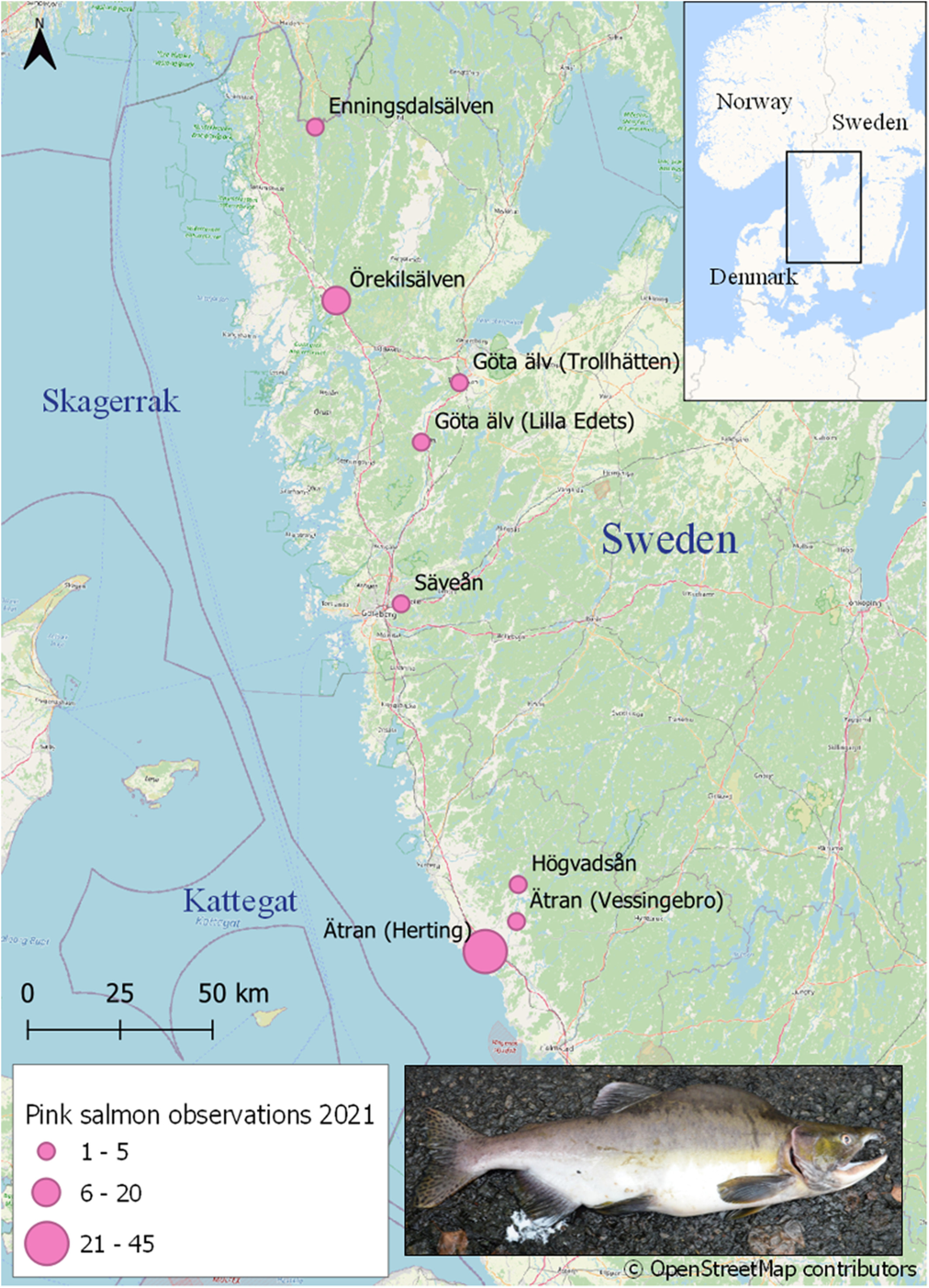
Pink salmon distribution has recently expanded substantially across northern Europe. In Sweden, however, there is no national monitoring and together with a ceased Atlantic salmon commercial fishery, there is little opportunity to understand the extent of the distribution. Here, we present the current data and address the need for future monitoring and research in order to understand the potential impacts of this invasive species in Sweden's aquatic ecosystems.
Intimacy across species boundaries: Interspecific allopreening between Spot-necked (Stachyris strialata) and Nonggang Babblers (S. nonggangensis)
- First Published: 26 August 2022
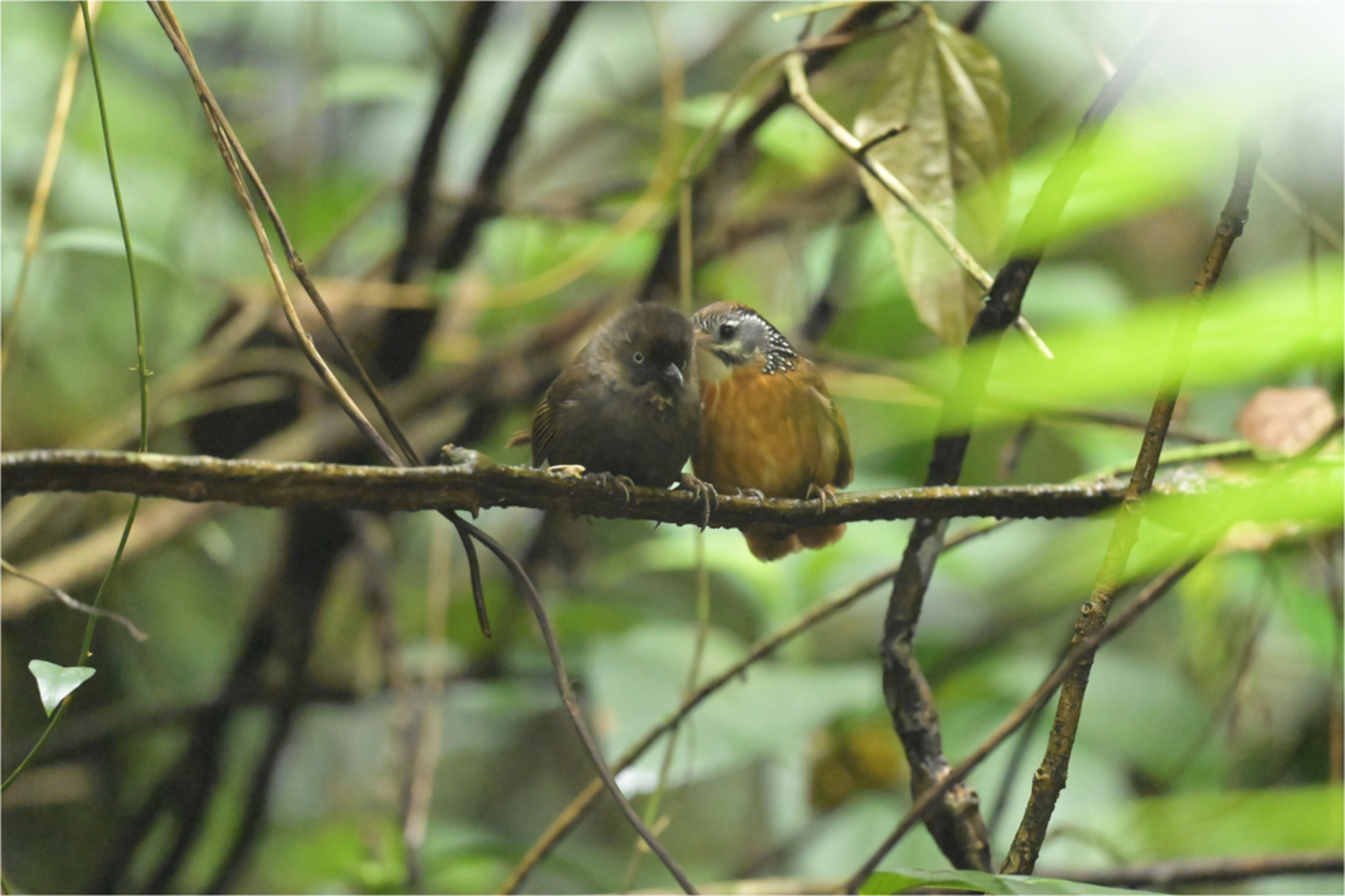
Interspecific allopreening is a rare and understudied behavior in birds. In this Nature Note, we describe our novel observations of the interspecific allopreening behavior between Spot-necked (Stachyris strialata) and Nonggang Babblers (S. nonggangensis) in a non-captive environment in Guangxi, China. We suggest that this understudied behavior is most likely related to the dominant-subordinate relationship between these two species. We also suggest interspecific allopreening may not be as rare as we thought if we study this behavior under circumstances where different species are close to each other.
REVIEW ARTICLES
Aquatic islands in the sky: 100 years of research on water-filled tree holes
- First Published: 12 August 2022
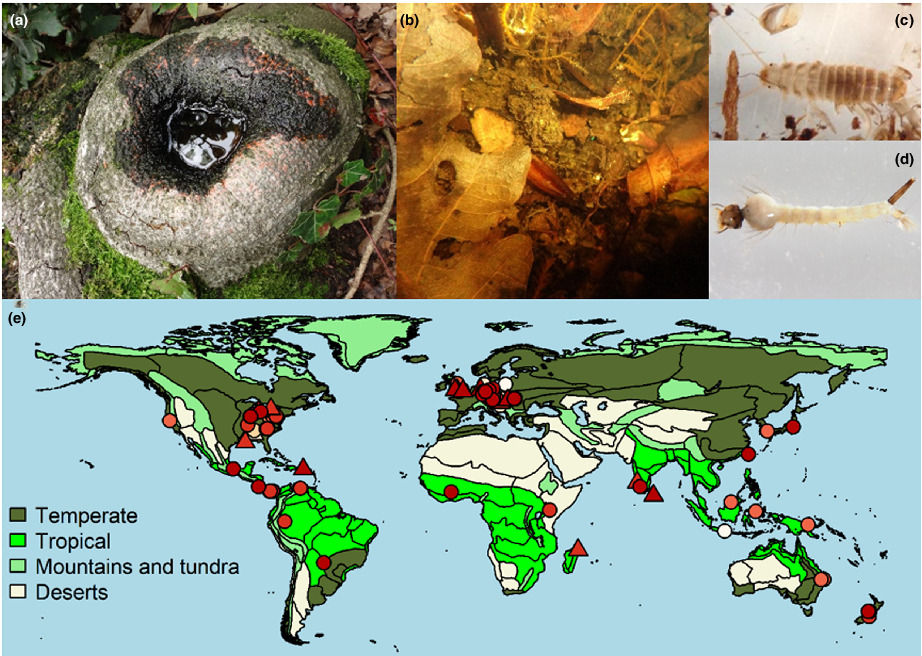
Water-filled tree holes are unique ecosystems that are inhabited by insect larvae, mesofauna and other organisms. In our review and meta-analysis we show that most studies on tree-hole inhabitants focus on selected or even single species, and that the few community studies consistently found positive effects of tree-hole size and resources on abundance and richness of inhabitants, sometimes modulated by environmental parameters such as annual temperature. We identify potential avenues for future research and argue that a better understanding of water-filled tree holes will facilitate their use as model systems for addressing fundamental ecological questions and as indicator systems of the impacts of environmental change on ecosystems.
VIEWPOINT
Tabular strategies for metadata in ecology, evolution, and the environmental sciences
- First Published: 25 August 2022
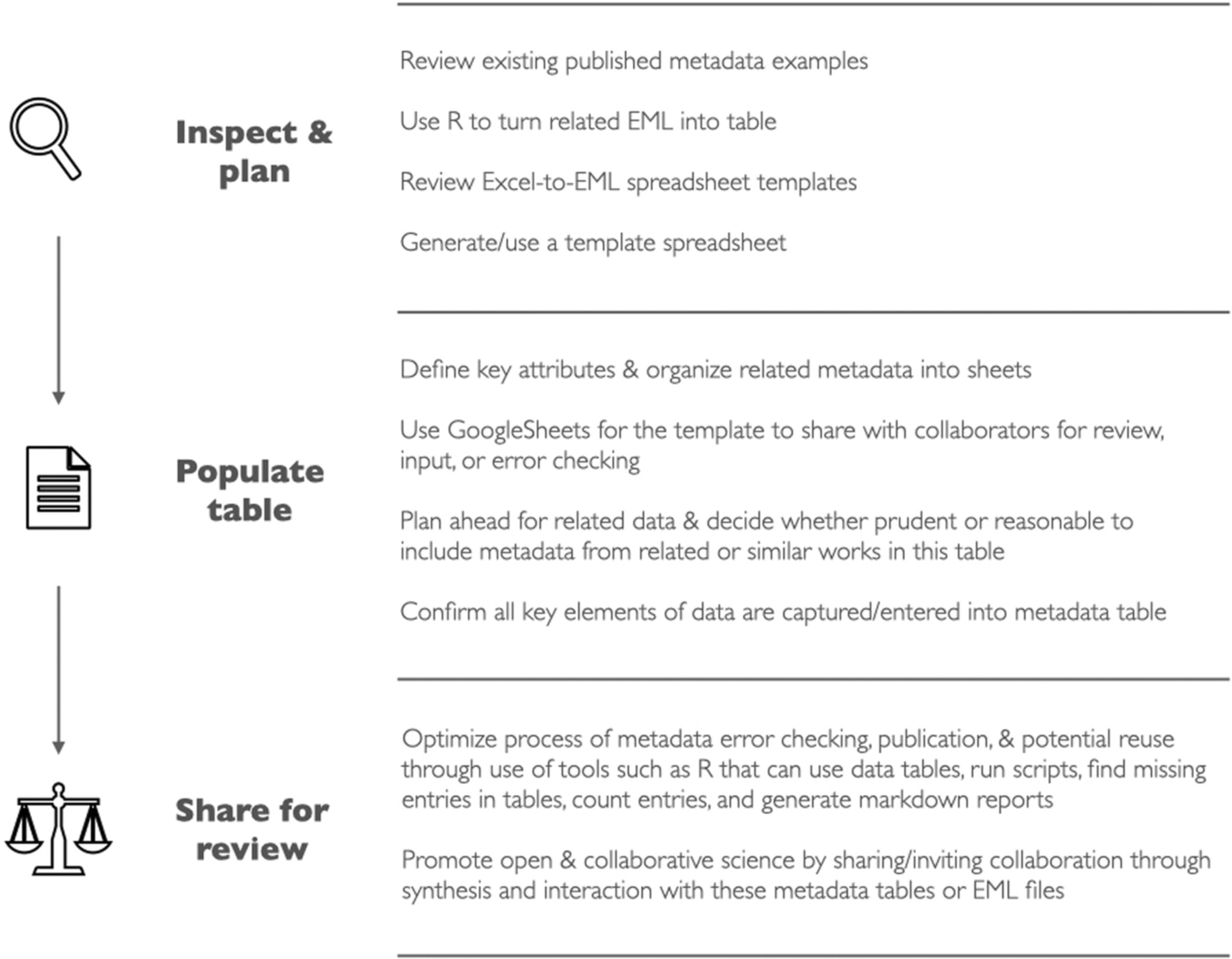
The last few years have pushed many disciplines to additional computational work. In ecology and evolution, we have embraced and used computation extensively including R, Python, open data, and many other open science tools. Data reuse even within existing collaborative networks can be a challenge nonetheless, and better metadata is the one outstanding issue. Here, we highlight this continued opportunity to improve as a discipline anew. We also provide a novel solution—consider using tables for metadata.
RESEARCH ARTICLES
Effects of initial leaching for estimates of mass loss and microbial decomposition—Call for an increased nuance
- First Published: 31 July 2022
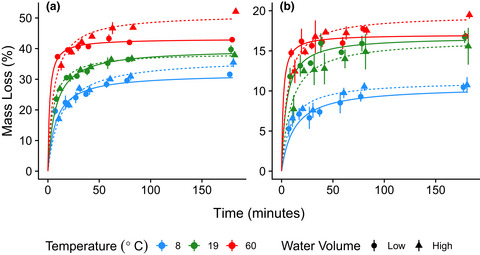
We found that both rooibos and green tea experienced a fast initial leaching rate, which eventually reached an asymptotic maximum. When comparing findings from our short-term study to our to long-term studies we found that up to 30-50% of the mass loss reported as decomposition of green tea, could be lost through leaching alone in high moisture environments. Hence, not accounting for initial leaching will lead to a systematic overestimation of microbial decomposition and thus produce erroneous results when directly using mass loss values.
Different temporal trends in vascular plant and bryophyte communities along elevational gradients over four decades
- First Published: 22 August 2022

We report an empirical study comparing long-term change of bryophyte and vascular plant communities in two forest sites with contrasting long-term warming trends, using resurvey data. We hypothesized that ecological changes would be greater in sites with a stronger warming trend, and that vascular plant communities, with narrower climatic niches, would be more sensitive than bryophyte communities to climate warming. We found a contrasted pattern of change, in the area with a stronger warming trend, we found a significant increase of local diversity and beta-diversity for vascular plant, but not for bryophytes and presence-absence data fail to detect shift in species distributions. The patterns observed for bryophytes support that local diversity can remain unchanged despite strong changes in composition. Our results suggest that vascular plants cannot be used as a surrogate for bryophytes in terms of predicting the direction and magnitude of responses to warming.
Documenting the short-tailed albatross (Phoebastria albatrus) clades historically present in British Columbia, Canada, through ancient DNA analysis of archaeological specimens
- First Published: 31 July 2022
The interaction between metabolic rate, habitat choice, and resource use in a polymorphic freshwater species
- First Published: 31 July 2022
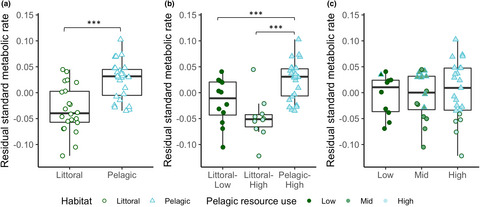
This manuscript presents new insights into the patterns of intraspecific variation in metabolic rates and how these are correlated with other adaptive traits in a polymorphic species. We show that two ecotypes of European perch living in adjacent habitats with no observed barriers to movement or reproduction have significantly different standard metabolic rates (SMR) and aerobic scopes (AS). We suggest that metabolic rates should be included in the larger suite of traits examined in studies of polymorphic species and that the observed differences can help determine under which conditions each ecotype can persist.
Resource requirements for ecosystem conservation: A combined industrial and natural ecology approach to quantifying natural capital use in nature
- First Published: 31 July 2022
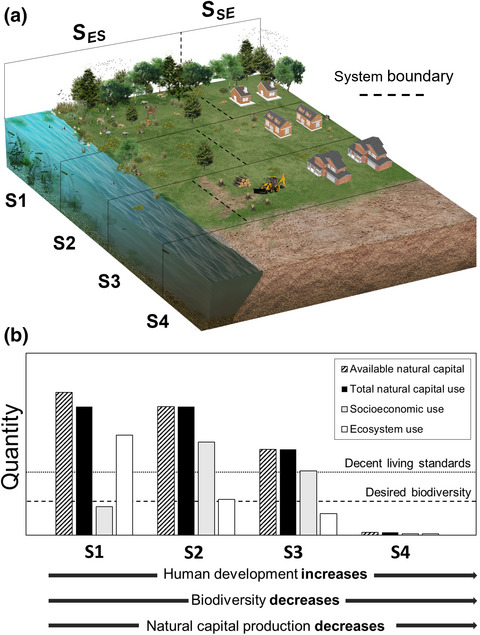
Schematic showing the changing ability to satisfy socioeconomic (human) and ecosystem well-being needs concurrently, in response to four different scenarios (S1-4) of socioeconomic development, corresponding to different distributions of natural capital stocks. SES is the ecosystem share; and SSE is the socioeconomic share.
Scavenger guild and consumption patterns of an invasive alien fish species in a Mediterranean wetland
- First Published: 31 July 2022
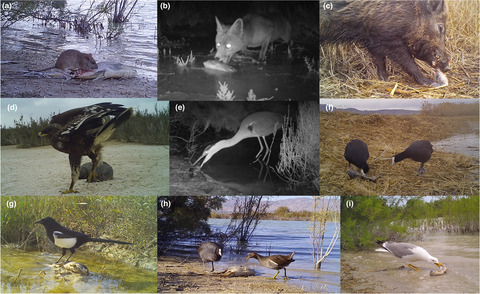
The common carp (Cyprinus carpio) is a worldwide hazardous Invasive Alien Species, becoming the most abundant species in many aquatic ecosystems. This study has recorded a rich and efficient vertebrate terrestrial scavenger assemblage in a Mediterranean wetland that benefits from carp carcasses. The results highlight the importance of vertebrate scavengers in wetlands, removing possible infectious focus, and moving nutrients between aquatic and terrestrial environments.
Host–parasite coevolution: Partitioning the effects of natural selection and environmental change using coupled Price equations
- First Published: 31 July 2022
Multiscale nest-site selection of ducks in the western boreal forest of Alberta
- First Published: 31 July 2022

There is limited data regarding the nesting ecology of boreal ducks and their response to industrial development, despite this region being an important North American breeding area. We investigated how landcover and oil and gas development affect third-order nest-site selection of boreal ducks. We developed multiscale resource functions to predict critical nesting habitat for ducks, which provides a decision-support tool for conservation managers in this working landscape.
Extensive sharing of chloroplast haplotypes among East Asian Cerris oaks: The imprints of shared ancestral polymorphism and introgression
- First Published: 31 July 2022
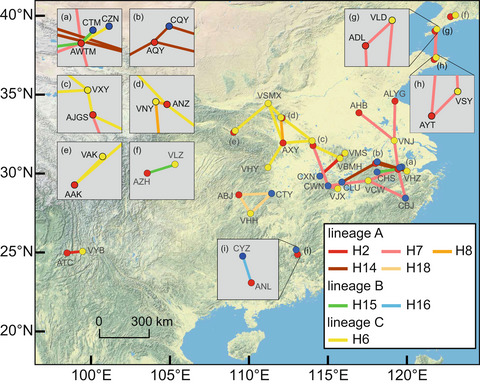
We demonstrated that the haplotype sharing pattern among East Asian Cerris oaks reflected the imprints of both shared ancestral polymorphism and introgression. This pattern was also associated with the relatively stable climates and complex landscapes in East Asia, which not only allowed the long-term persistence of ancestral lineages but also connected the survived populations across refugia.
Causes and consequences of variation in early-life telomere length in a bird metapopulation
- First Published: 31 July 2022
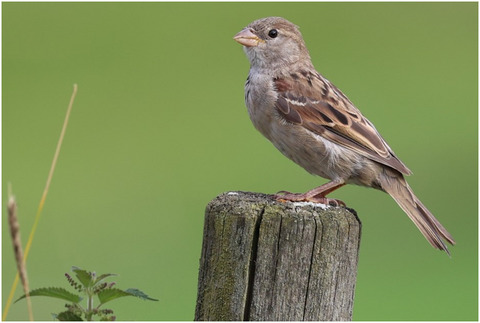
Our study showed how early-life telomere length (TL) in wild house sparrows is shaped by effects of growth, weather conditions, and population density. Furthermore, TL may be associated with individual pace-of-life, with higher dispersal rates and annual reproduction tending to be associated with shorter early-life TL. However, associations between environment, early-life TL, and fitness may differ between different populations in the wild.
Favorable winds speed up bird migration in spring but not in autumn
- First Published: 31 July 2022
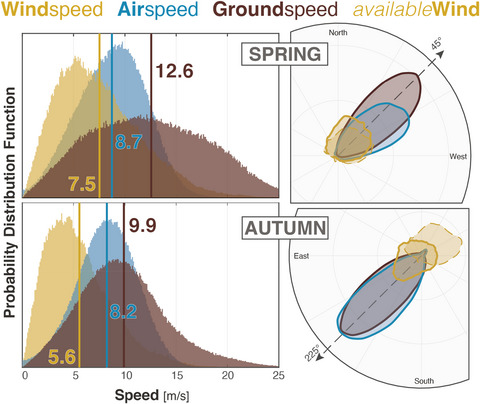
Using the first full year of weather radar data in western Europe, we investigate the difference of airspeed accros time (daily and seasonally) and space (geographically and altitudinal). Our result show that wind plays a major role in explaining the variation of groundspeed, while airspeed remains constant through space and time.
Low-head dams induce biotic homogenization/differentiation of fish assemblages in subtropical streams
- First Published: 30 July 2022
Multi-surveyor capture-mark-recapture as a powerful tool for butterfly population monitoring in the pre-imaginal stage
- First Published: 31 July 2022
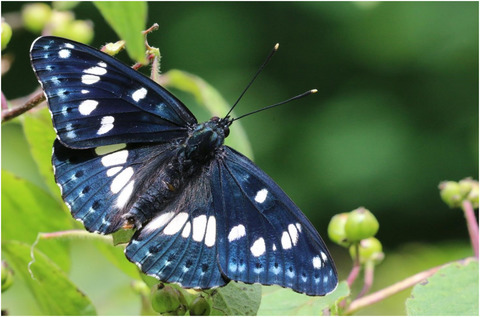
Testing removal and capture-mark-recapture approaches within a population of overwintering caterpillars of the nymphalid butterfly Limenitis reducta, we showed that the quantitative study of pre-imaginal butterfly life-stages can provide reliable abundance data, useful for monitoring and comparative studies. The innovative aspect of our method is that we substituted mobility of the study organism, which is a prerequisite in classical capture-mark-recapture studies, by multiple surveyors sampling independently of one another. We believe that this approach can be easily applied and fitted to other species, for example, insects with specific sessile life stages, plants, fungi, and corals.
Assessing diversity of King Crab Lithodes spp. in the south-eastern pacific using phylogeny and molecular species delimitation methods
- First Published: 31 July 2022
Timing and synchrony of birth in Eurasian lynx across Europe
- First Published: 31 July 2022
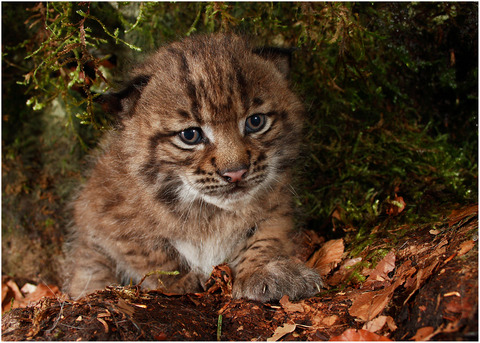
The Eurasian lynx (Lynx lynx) covers three of the four main climate regions of the world, making it an ideal species to explore reproductive phenology in a carnivore. Mean birth date was May 28 (April 23 to July 1), but was ~10 days later in northern Europe than in central and southern Europe. Timing of birth was delayed by colder May temperatures, and we argue that lynx give birth later when exposed to colder spring temperatures and have more synchronized births when the window of favorable conditions for raising kittens is shorter.
Carbohydrates complement high-protein diets to maximize the growth of an actively hunting predator
- First Published: 29 July 2022
Species turnover in ant assemblages is greater horizontally than vertically in the world's tallest tropical forest
- First Published: 29 July 2022
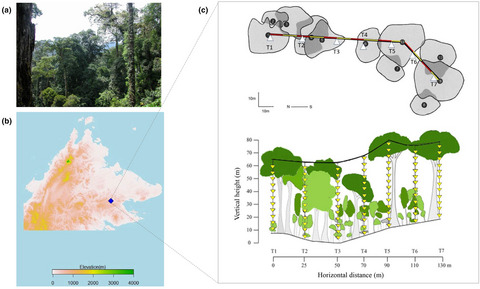
By sampling ant assemblages at the comparable vertical and horizontal spatial scales in a tropical rain forest, we detected increasing difference in assemblage composition across vertical forest strata, but no effects of horizontal distance on assemblage turnover across trees. Our research highlights the importance of considering assemblage turnover in both horizontal and vertical dimensions and demonstrates how these distance-decay patterns are influenced by microclimate and habitat connectivity within a structurally complex habitat.
Genetic markers in Andean Puya species (Bromeliaceae) with implications on plastome evolution and phylogeny
- First Published: 29 July 2022
Seasonal variation in structure and function of gut microbiota in Pomacea canaliculata
- First Published: 29 July 2022
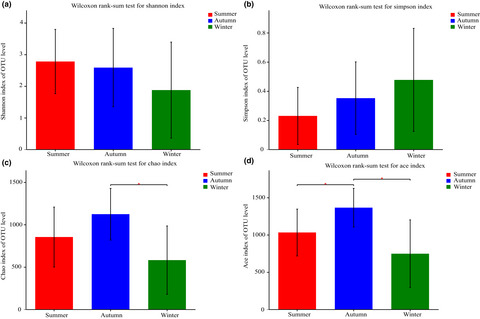
We collected 28 gut content samples of Pomacea canaliculata from Suzhou city over three seasons and analyzed the seasonal variation of gut microbiota using 16S rRNA gene V3-V4 sequencing.The gut microbiota of summer group showed the highest diversity, while the winter group showed the lowest.The structure of the gut microbiota of P. canaliculata were significantly different among seasons, which was beneficial to the environment adaptation and the digestion and metabolism of food during different periods.
The impact of climate change on the distribution of rare and endangered tree Firmiana kwangsiensis using the Maxent modeling
- First Published: 29 July 2022
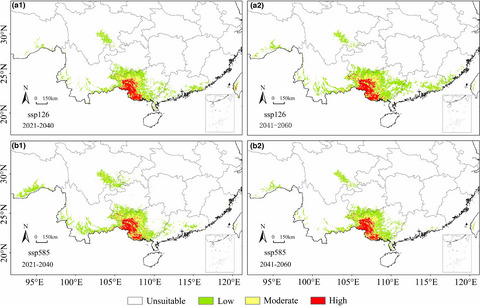
Based on 30 effective occurrence records and 27 environmental variables, we modeling the potential distribution of F. kwangsiensis under current and two future climate scenarios in maximum entropy, to identify the localities where F. kwangsiensis may exist but not yet been detected, and to recognize of localities where it is likely to spread to. Our study provides important information for the conservation management and cultivation of such rare tree species, may generate extensive interests to plant scientists, whom concerned about wildlife conservation, and horticulture lovers.
Ecological drivers of avian diversity in a subtropical landscape: Effects of habitat diversity, primary productivity and anthropogenic disturbance
- First Published: 30 July 2022
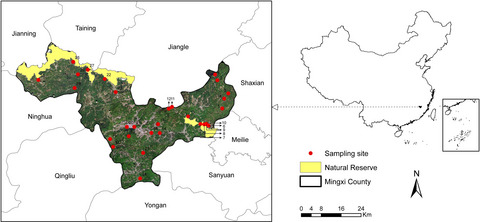
Across a subtropical landscape in China, we found both phylogenetic and functional clustering in avian communities, suggesting that the local avian assemblages were structured mainly by environmental filtering, rather than niche partitioning. The relationship between anthropogenic disturbance and avian diversity is complex, as we found both a positive association between human population density and avian diversity, and a significantly negative relationship between birding history and species richness.
Past, present, and future predictions on the suitable habitat of the Slender racer (Orientocoluber spinalis) using species distribution models
- First Published: 30 July 2022
Nutrient-dependent allometric plasticity in a male-diphenic mite
- First Published: August 2022
Food quantity and quality shapes reproductive strategies of Daphnia
- First Published: August 2022
Assessment of the stream invertebrate β-diversity along an elevation gradient using a bidimensional null model analysis
- First Published: 04 August 2022
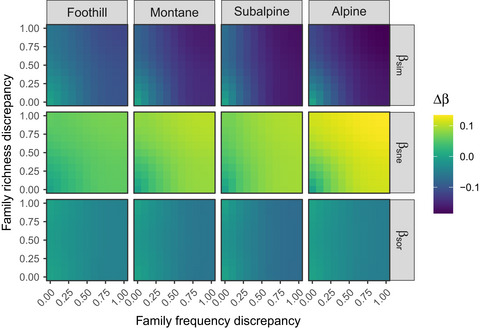
Our study suggests that deterministic distribution of stream invertebrates in the Swiss Alpine region is significantly driven by differential dispersal capacity and environmental stress gradients. As long as the ecological assumptions for constructing the null models and their implications are acknowledged, we believe that they still represent useful tools to measure the effect size of nonrandom spatial distribution of taxa on β-diversity.
Transgenerational exposure to marine heatwaves ameliorates the lethal effect on tropical copepods regardless of predation stress
- First Published: 04 August 2022
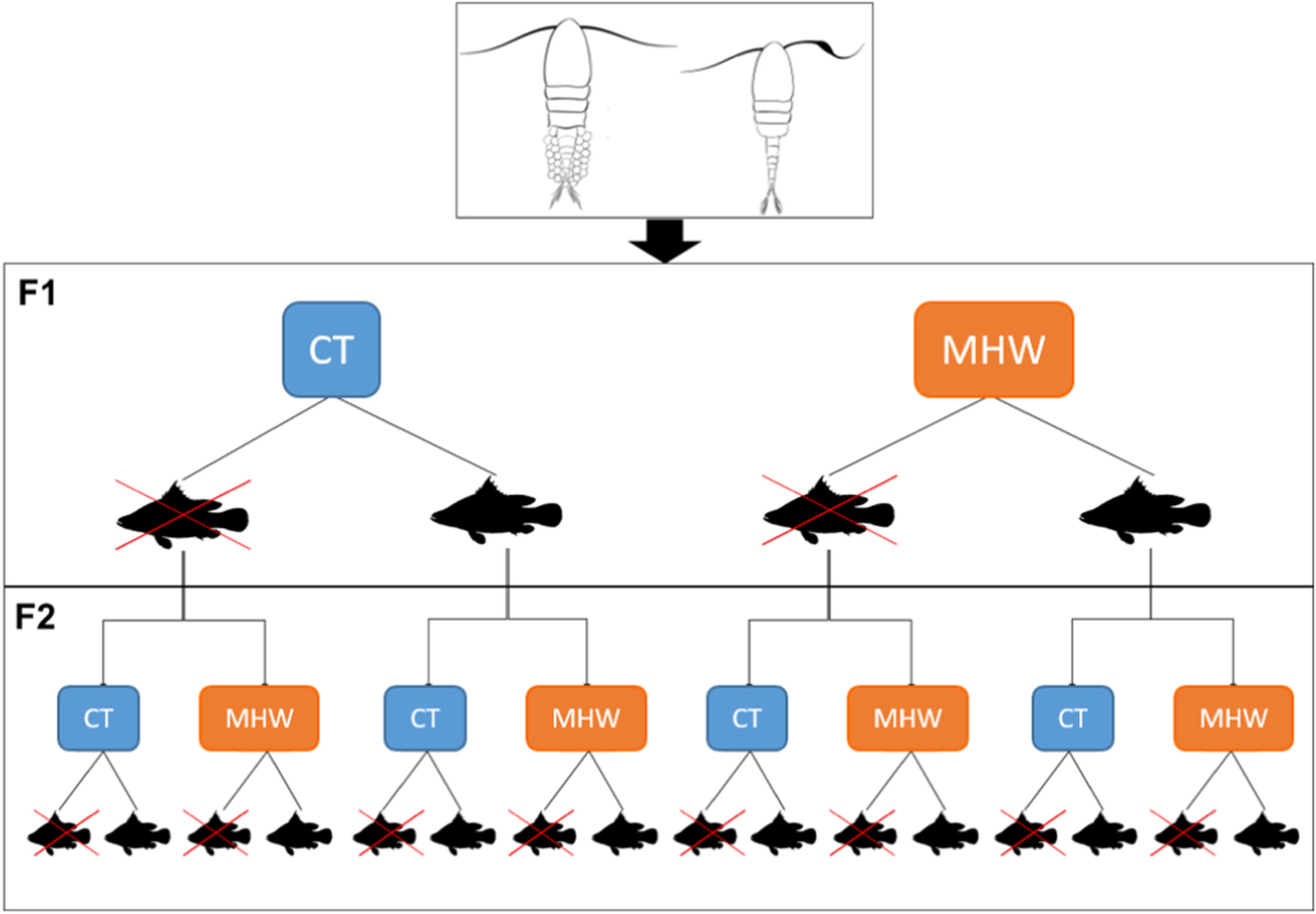
Marine heatwaves emerge as a severe stressor in marine ecosystems, yet it is relatively unknown whether transgenerational effect of marine heatwaves may shape the offspring fitness, particularly in an ecologically relevant context with biotic interactions such as predation stress. Our study showed that transgenerational exposure to marine heatwaves fully ameliorated its lethal effect on tropical copepod Pseudiaptomus incisus with a cost of reduced reproductive success constrained by the lowered grazing. Fish predation stress played a minor role in shaping the copepod performance, both within and across generations with or without marine heatwaves.
Eastern monarch larval performance may not be affected by shifts in phenological synchrony with milkweed
- First Published: 04 August 2022
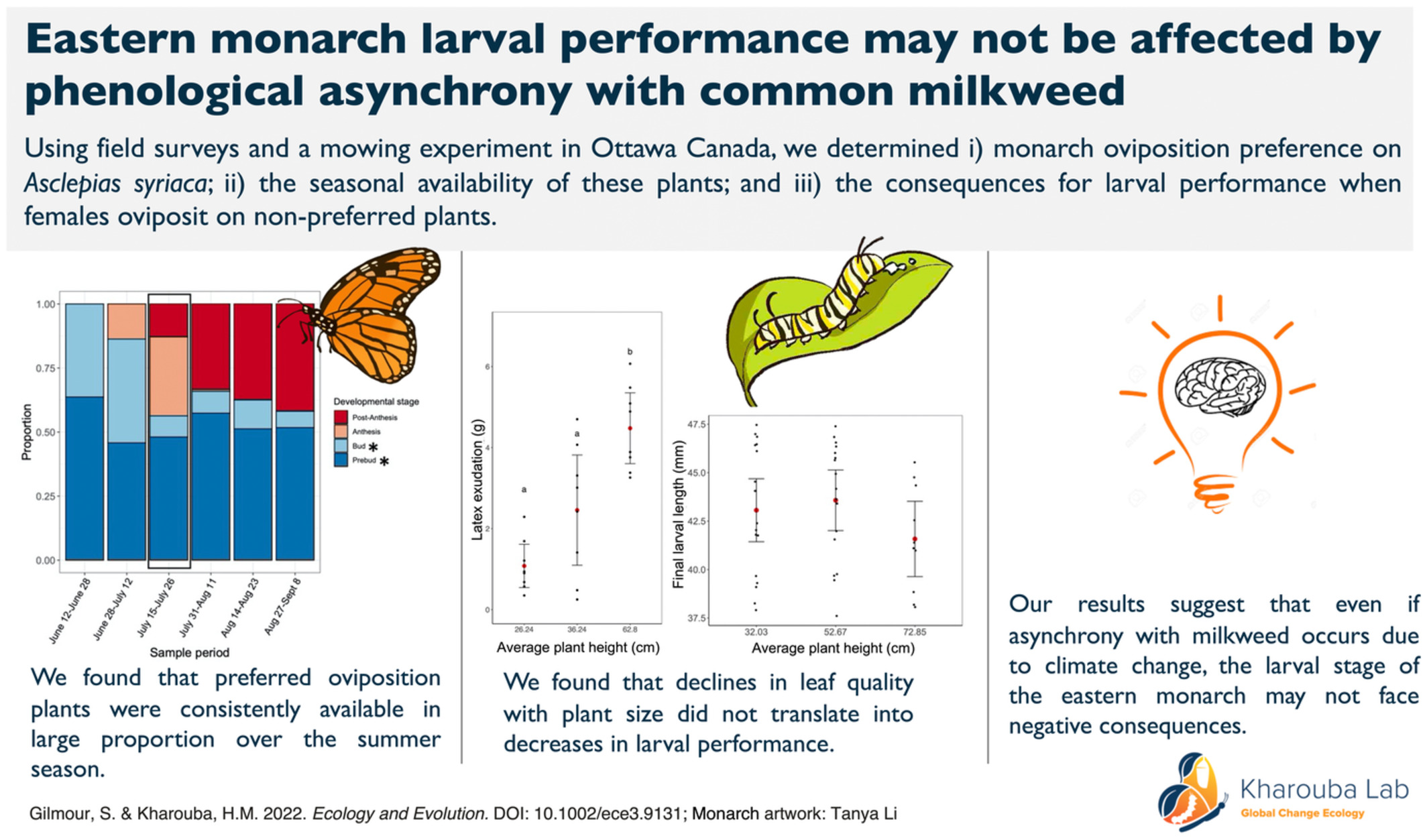
Here we explore the potential consequences for the eastern monarch (Danaus plexippus) population due to probable phenological asynchrony with milkweed, its host plant. We used field surveys around Ottawa, Canada to show that preferred oviposition plants were consistently available in large proportion over the summer season and through a field experiment, we found that declines in leaf quality with plant size did not translate into decreases in larval performance. Our results suggest that even if asynchrony of the monarch-milkweed interaction occurs due to climate change, the larval stage of the eastern monarch may not face negative consequences.
Pattern of play behavior in infant (age 1 to 12 months) white-headed langurs in limestone forests, southwest China
- First Published: 04 August 2022
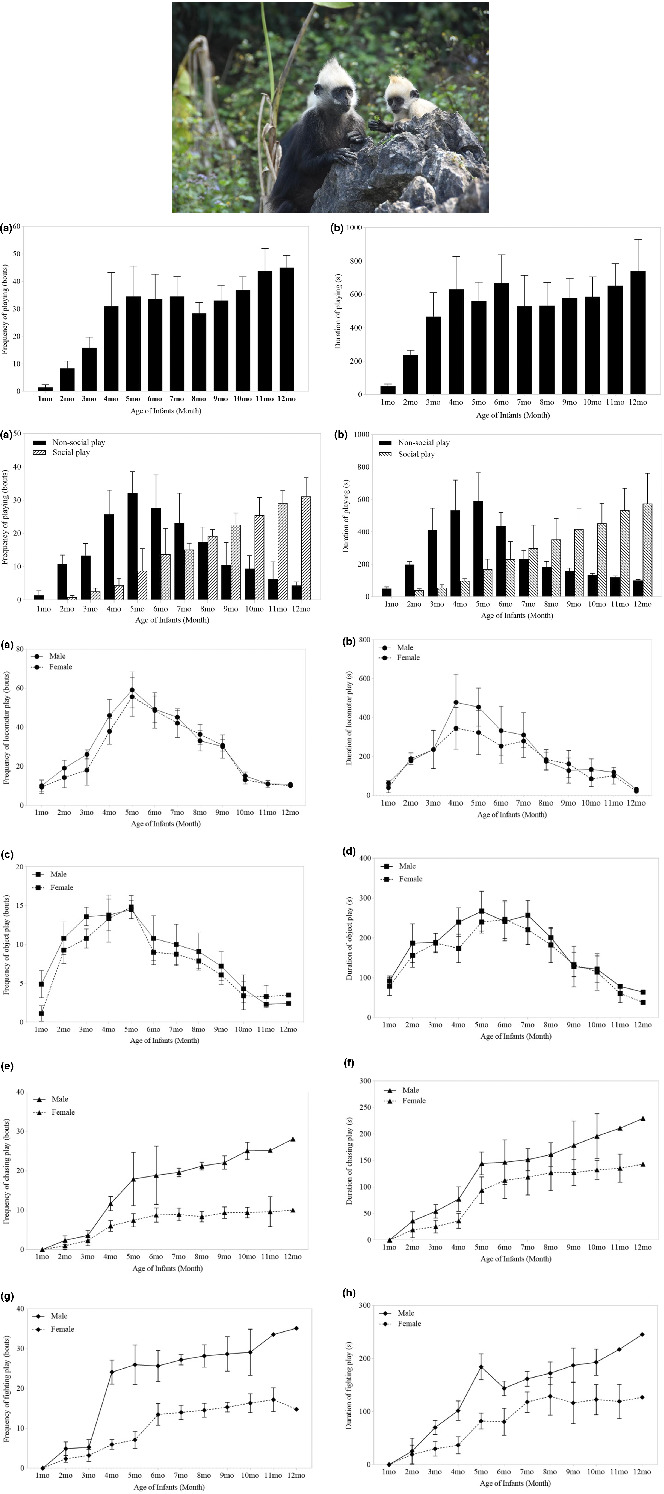
We found that infant white-headed langurs had different play behavior patterns in different ages. Specially, the frequency and duration of non-social play peaked at 5 months old and then decreased, while social play appeared at 2 months old and gradually increased with age. Non-social play showed no differences between the sexes, whereas social play showed sex specificity, with a higher frequency and duration of social play in male infants than in female infants. In addition, male and female white-headed langur infants preferred the individuals of same sex as social playmates.
Genetic diversity and differentiation of populations of Anthyllis vulneraria along elevational and latitudinal gradients
- First Published: 04 August 2022
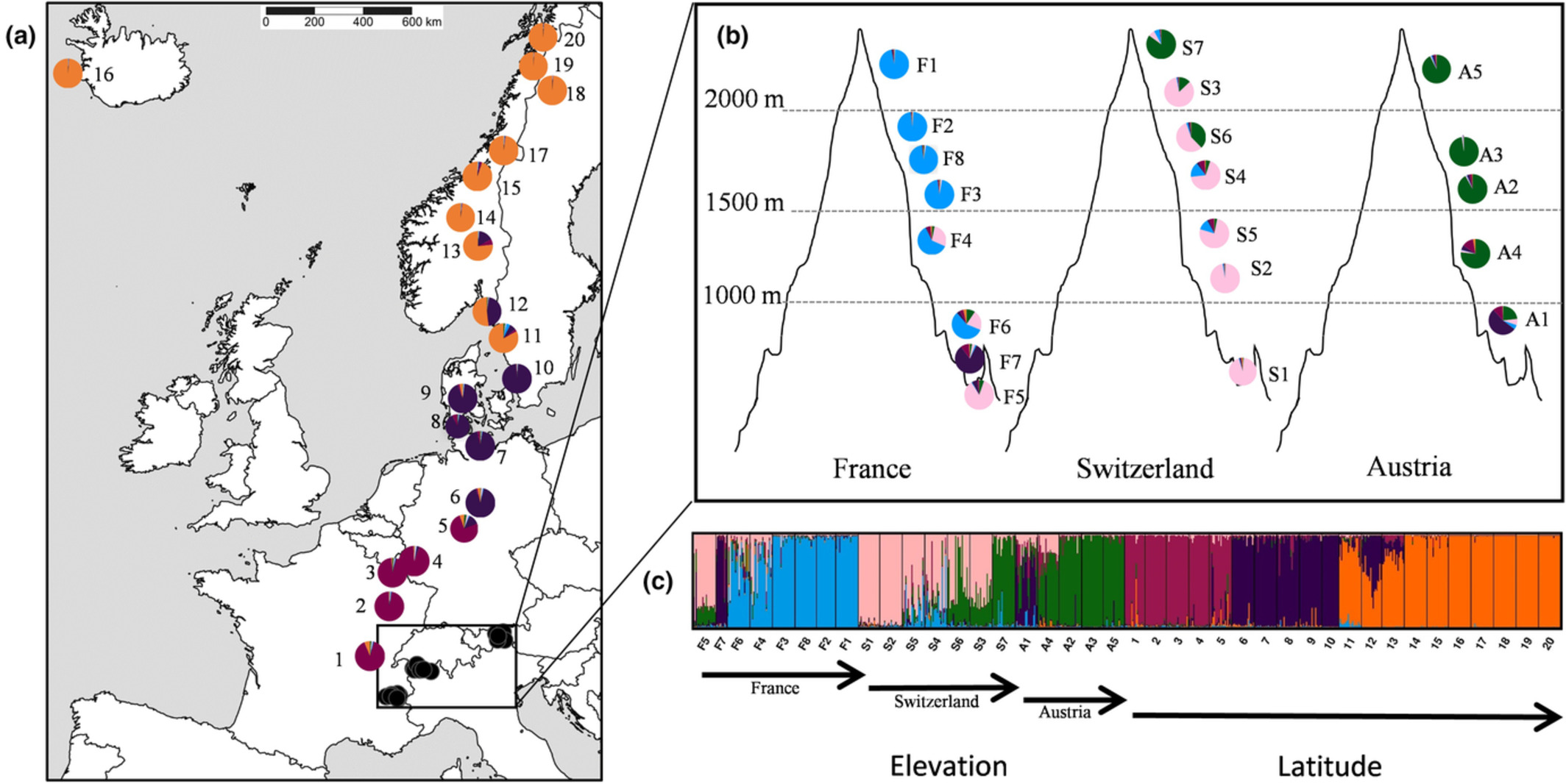
We studied the genetic diversity and population structure of 40 populations of the widespread plant species Anthyllis vulneraria (kidney vetch) along an elevational gradient in the Alps and a latitudinal gradient from Central Europe to northern Scandinavia. Genetic diversity strongly decreased and genetic differentiation among populations increased with latitude, suggesting that founder effects played an important role in the establishment of high-latitude populations during the post-glacial recolonization of formerly glaciated areas. Our results also indicate that subarctic populations differed genetically from alpine populations suggesting that the northern populations did not originate from high elevational Alpine ones.
Influence of different data cleaning solutions of point-occurrence records on downstream macroecological diversity models
- First Published: 04 August 2022
Phenological segregation suggests speciation by time in the planktonic diatom Pseudo-nitzschia allochrona sp. nov.
- First Published: 04 August 2022
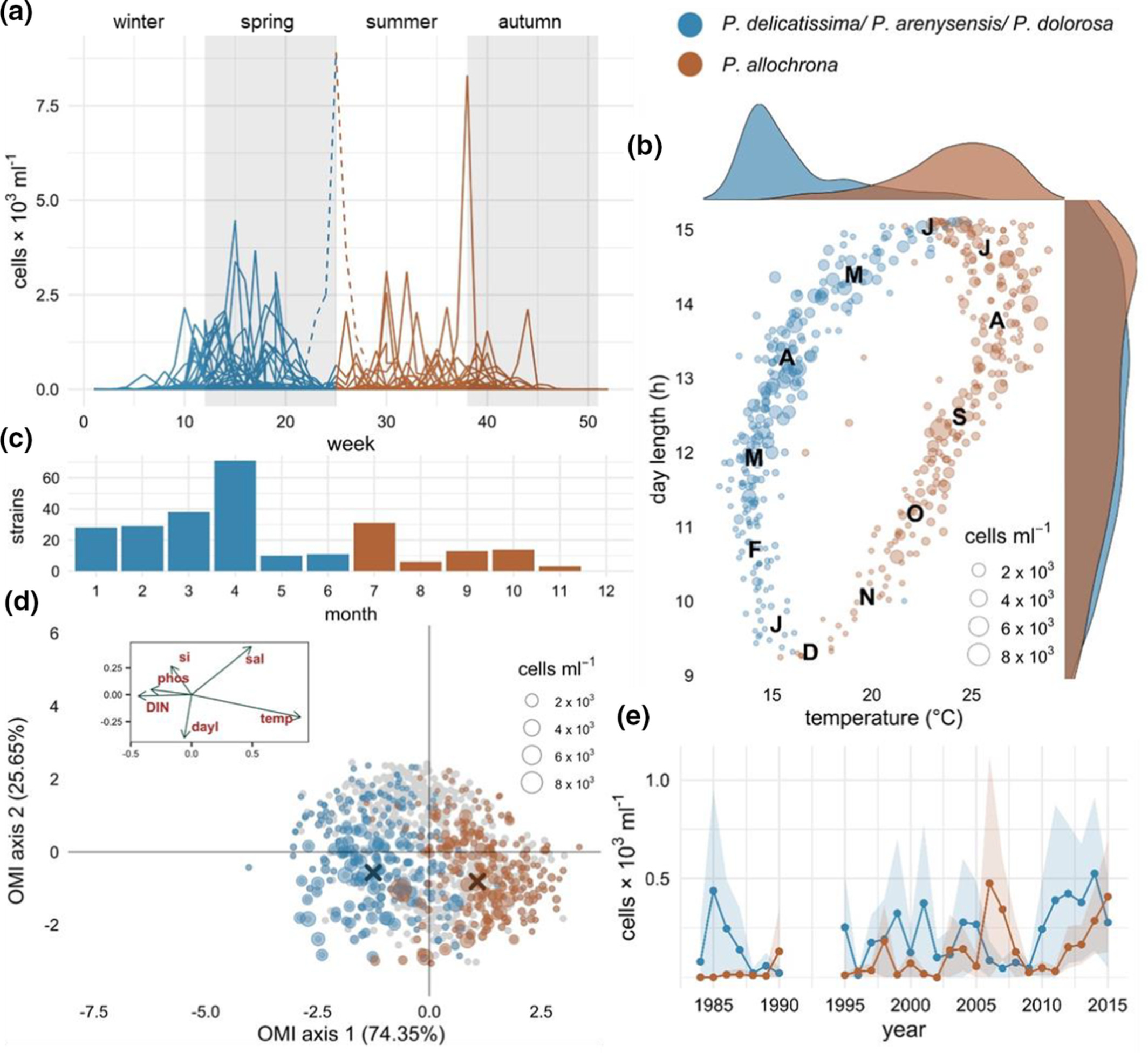
We describe a new cryptic species in the marine diatom genus Pseudo-nitzschia, P. allochrona, based on different phylogenetic markers and with the support of mating incompatibility with the sibling species P. arenysensis. Compared with its closest congeneric species in the Gulf of Naples, P. allochrona occupies a distinct temporal niche, which suggests it may have evolved in sympatry by switching its phenology and occupying a new ecological niche.
Long-term effects of artificial nighttime lighting and trophic complexity on plant biomass and foliar carbon and nitrogen in a grassland community
- First Published: 04 August 2022
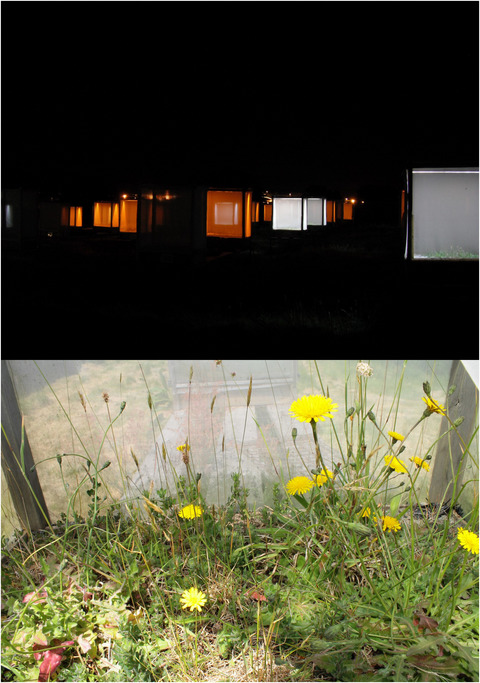
Artificial nighttime lighting is increasingly altering the timing and spectra of natural light regimes worldwide. Through a five-year field experiment, we examined the effects of night-time artificial illumination (white vs amber light) on plant biomass and foliar nitrogen in grassland mesocosm communities both alone or in combination with invertebrate herbivores. Species-specific and negative effects of white LED lighting (simulating street lighting at ground-level illuminance) on plant biomass and shoot/root ratio were found. The activity of herbivores might also be affected by this type of lighting as suggested by the findings of our long-term study.
The role of E. maritimum (L.) in the dune pollination network of the Balearic Islands
- First Published: 04 August 2022
Guidelines for model adaptation: A study of the transferability of a general seagrass ecosystem Dynamic Bayesian Networks model
- First Published: 04 August 2022
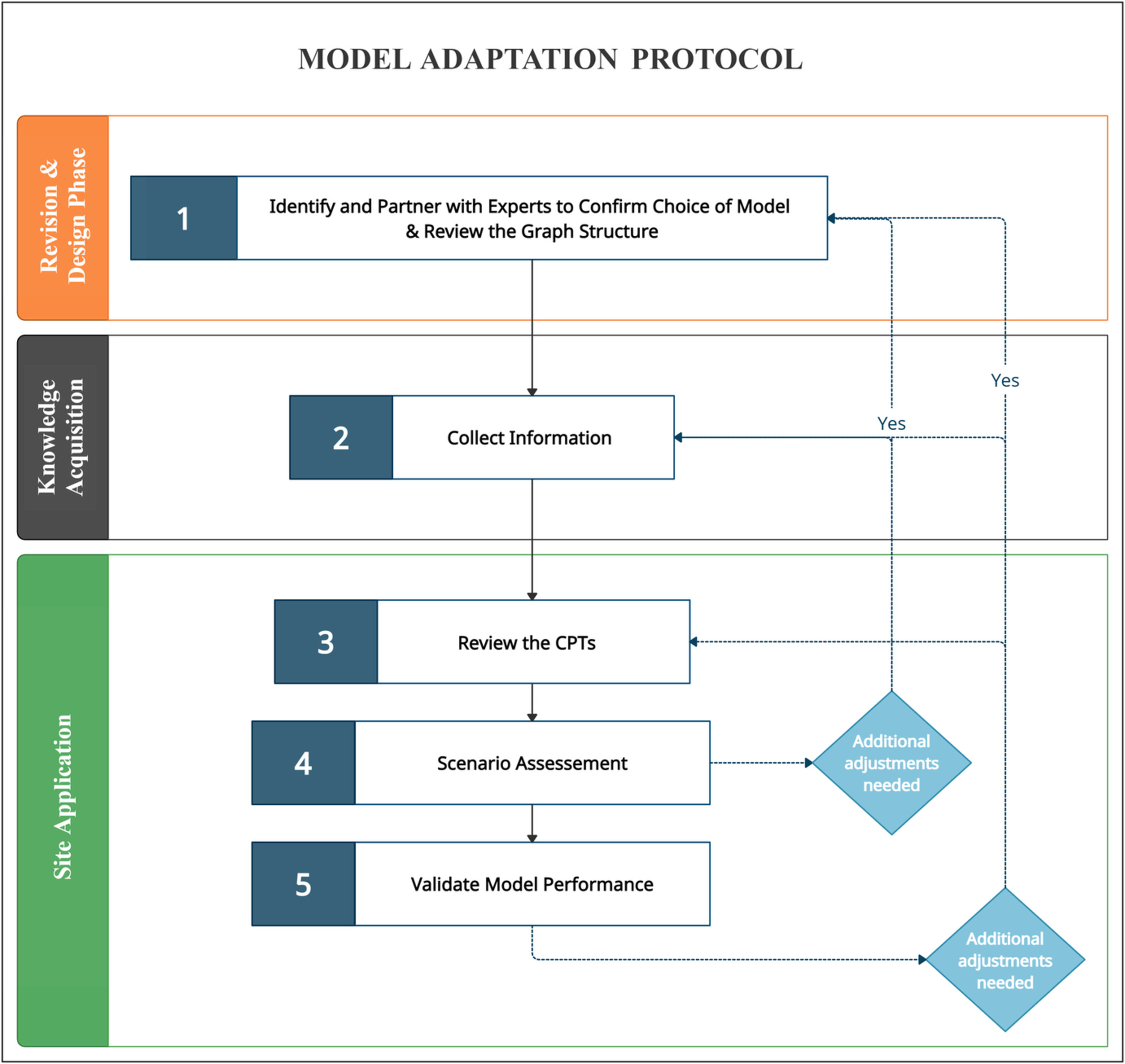
The study in this paper focuses on a model transferability case study to design and implement model adaption guidelines. Our guidelines demonstrate how to adapt a general DBN to specific ecosystems in order to maximise model reuse and minimise re-development effort, which is especially, which is especially relevant from a transferability perspective, are guidelines for ecosystems with limited data.
Differences in functional trait responses to elevation among feeding guilds of Aculeata community
- First Published: 04 August 2022
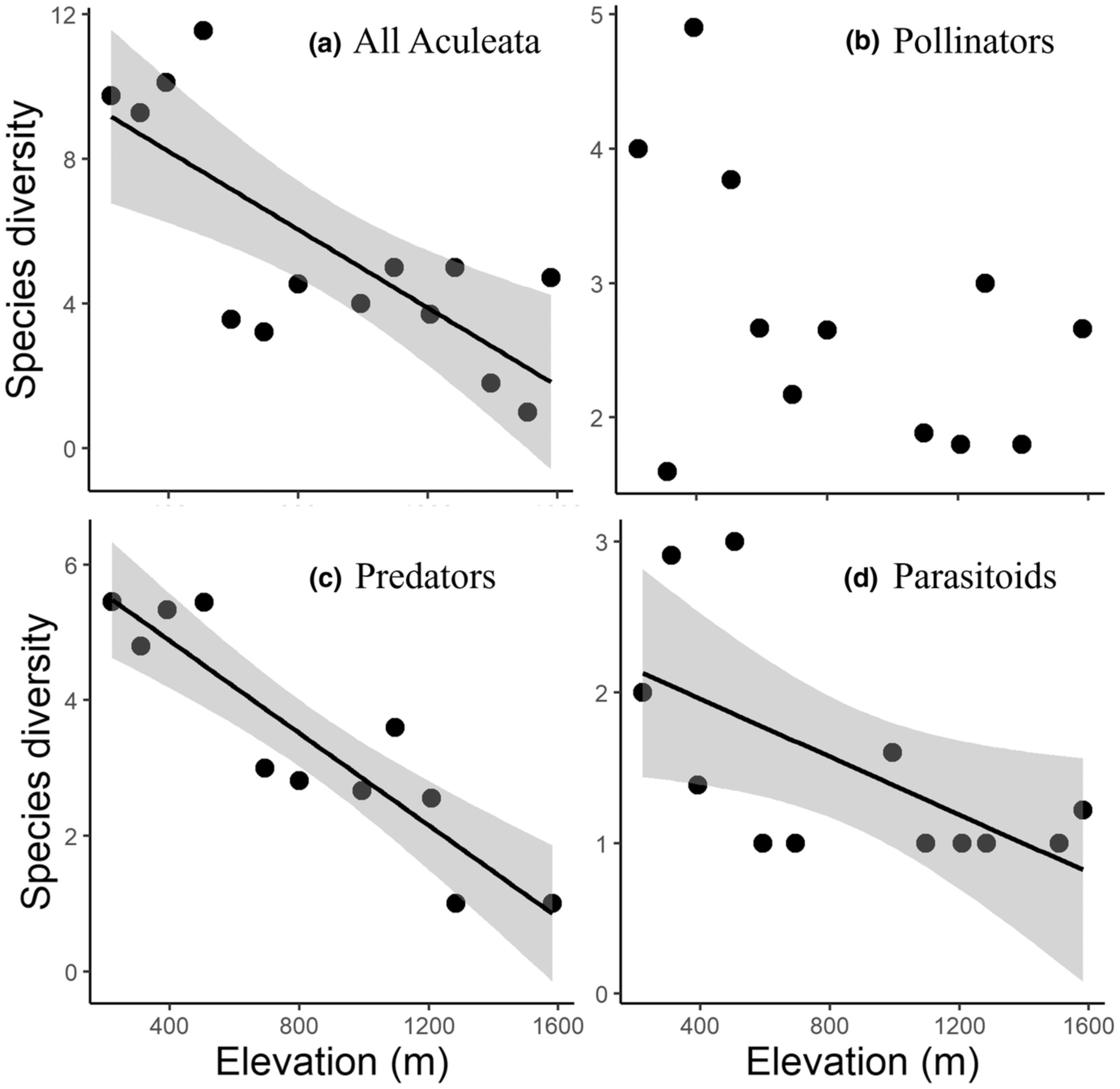
The response of communities to climate change is expected to vary among feeding guilds. We found that functional trait composition of each feeding guild in Aculeata bees and wasps community responded to the elevational gradient in different ways. This differences can produce different community assembly patterns in different guilds during further climate change.
Nutrigonometry II: Experimental strategies to maximize nutritional information in multidimensional performance landscapes
- First Published: 04 August 2022
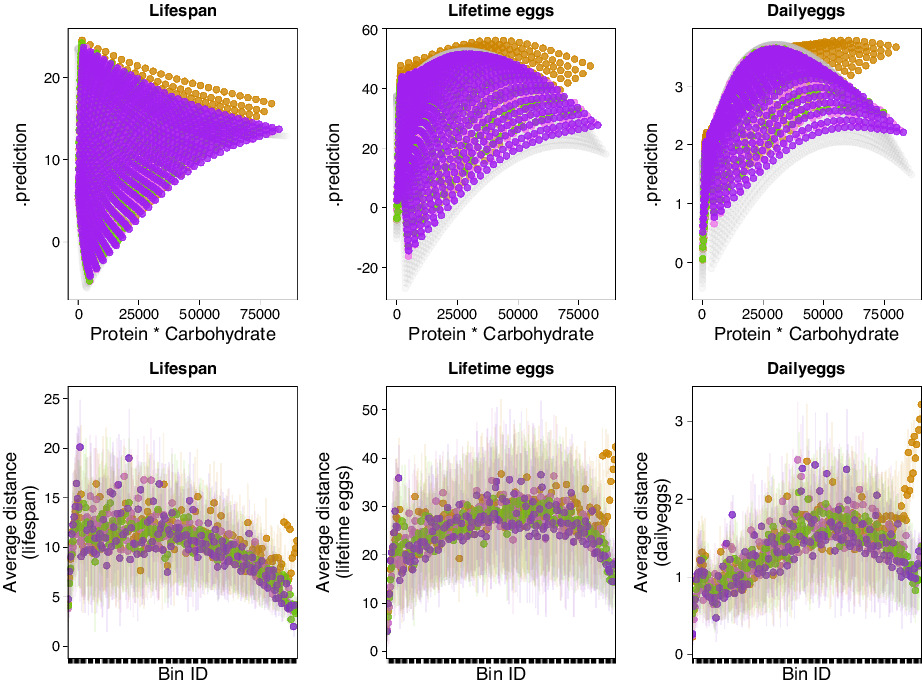
In behavioral ecology, we have a powerful method, known as the Geometric Framework for Nutrition (GF), to study nutritional ecology. However, we have not yet, in the three decades since it was proposed, fully investigated whether its fundamental experimental design is likewise powerful. This study investigate the original and alternative sampling designs to reconstruct GF performance landscapes.
Seasonal variation of immune response to heterologous erythrocytes in natural populations of red-backed (Clethrionomys rutilus) and gray-sided (C. rufocanus) voles in Western Siberia
- First Published: 04 August 2022
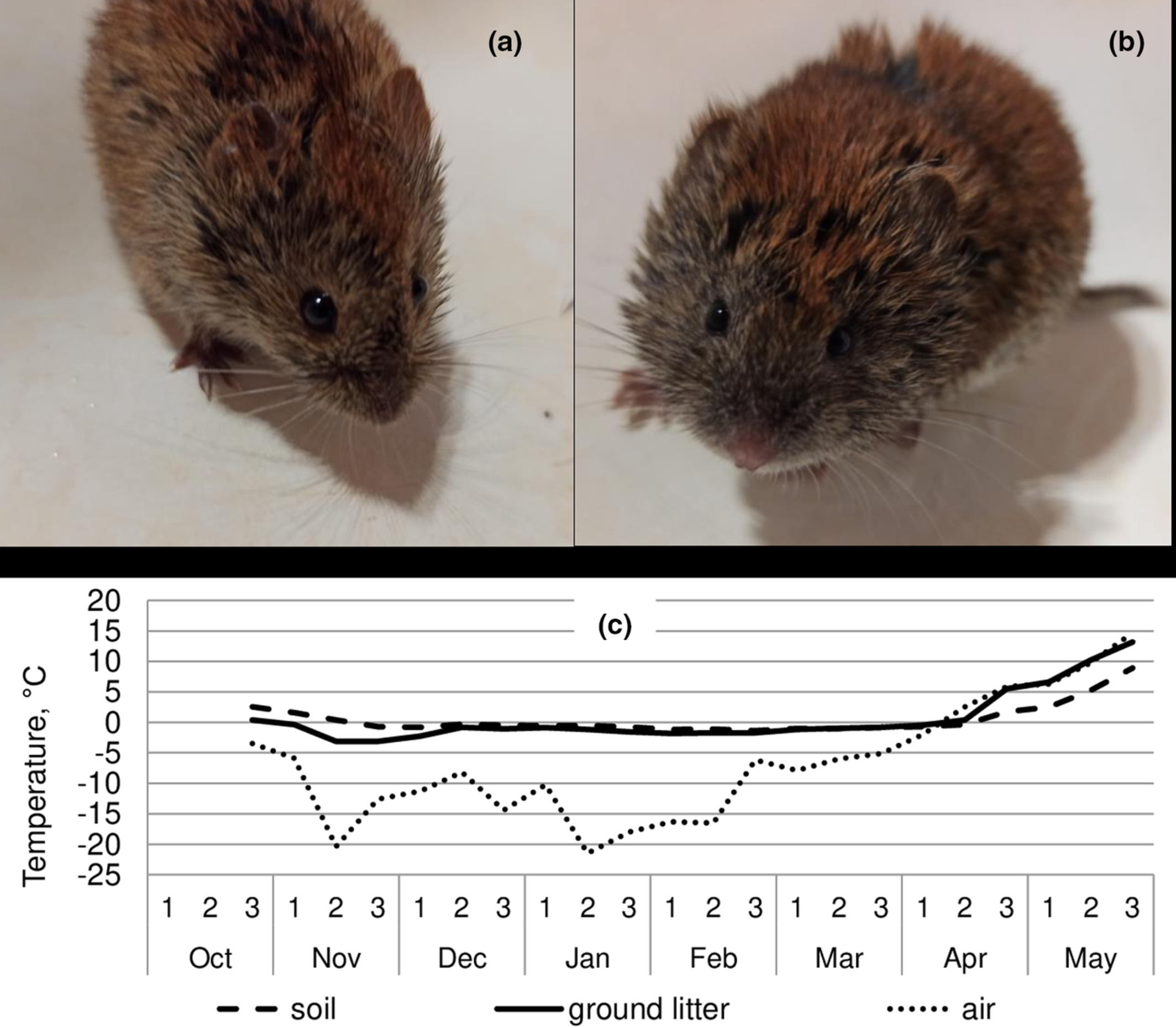
We studied seasonal variability of adaptive humoral immunity in the red-backed vole (Clethrionomys rutilus) and the grey-sided vole (C. rufocanus) in Western Siberia. Both species showed an increase in immunoreactivity in winter and immunosuppression, which differed in duration between the two species, in spring. We discuss possible reasons for the observed seasonal pattern of immunoreactivity changes and its species-specific features.
Functional traits underlying performance variations in the overwintering of the cosmopolitan invasive plant water hyacinth (Eichhornia crassipes) under climate warming and water drawdown
- First Published: 04 August 2022
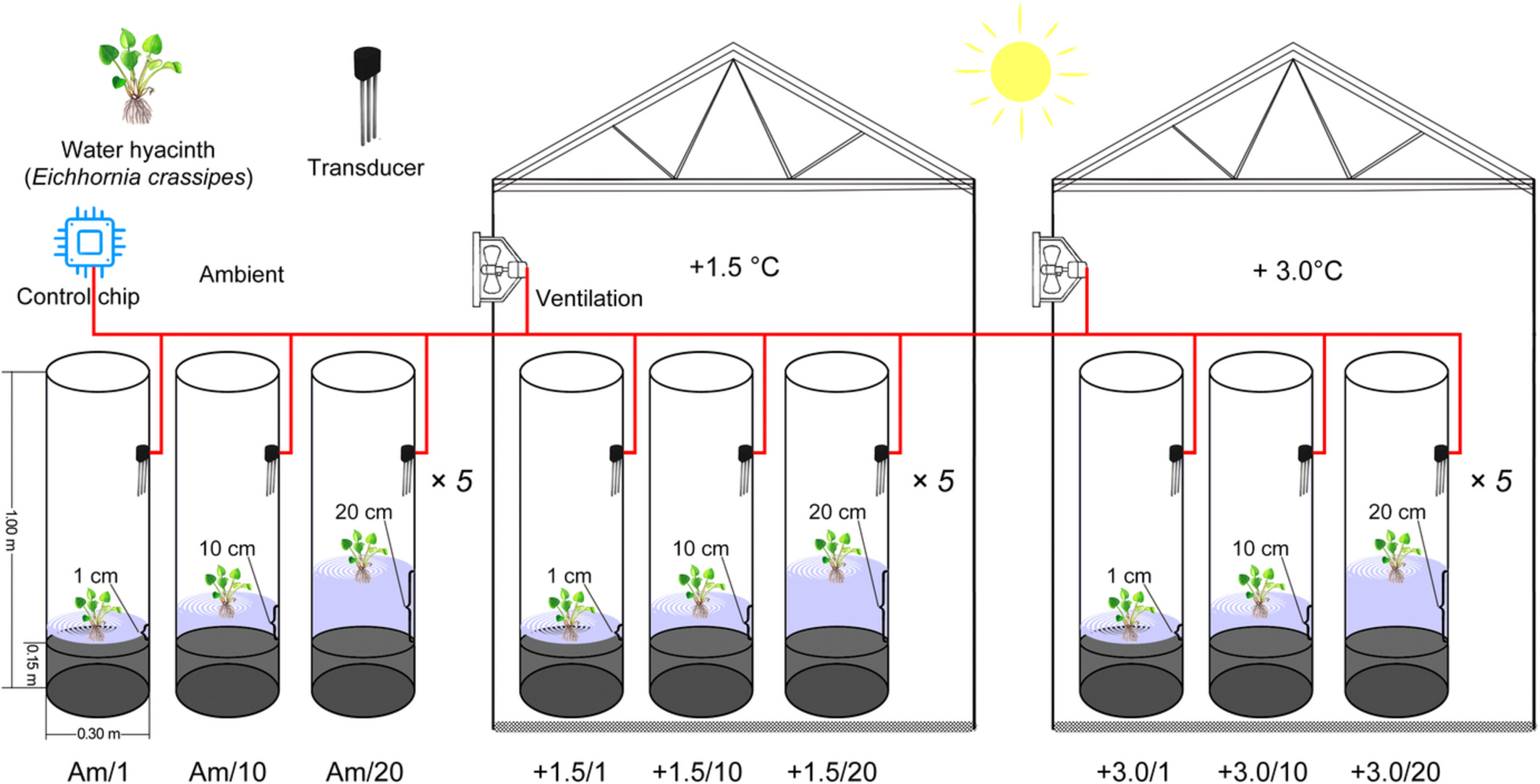
A cross-year mesocosm experiment was conducted using Eichhornia crassipes as a model plant under climate warming and water drawdown. The results revealed that the overwinter survival and growth of E. crassipes was facilitated by the two factors, and climate warming played a leading role. Controlling the temperature to within 1.5°C still facilitated the overwintering of the plant and eradication of the plant during winter water drawdown period may be more effective.
The main driver of soil organic carbon differs greatly between topsoil and subsoil in a grazing steppe
- First Published: 04 August 2022
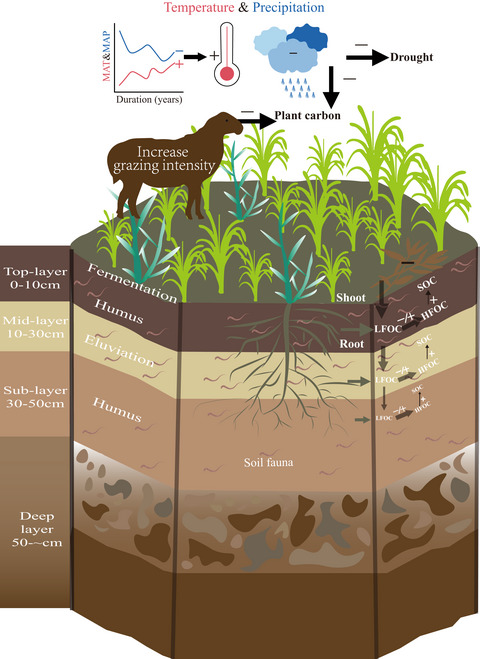
Our results highlight the importance of soil depth and grazing duration in understanding the impact of grazing on SOC. In order to accurately assess the effects of long-term grazing on SOC content. We suggest that the effects of grazing intensity, grazing duration and climate change on soil biochemical processes should be assessed simultaneously.
Improving measurements of the falling trajectory and terminal velocity of wind-dispersed seeds
- First Published: 04 August 2022

Accurate estimates of seed terminal velocity, the key seed trait affecting seed dispersal by wind, are crucial for predicting intra- and interspecific variation in seed dispersal ability. However, existing methods produce biased estimates of terminal velocity for slow- or fast-falling seeds, fragile seeds, and seeds with complex falling trajectories. We present a new video-based method that yields accurate, efficient and affordable estimates of the three-dimensional falling trajectory and terminal velocity for a wide range of seed types, and should thus advance the understanding and prediction of wind-driven seed dispersal.
Effects of pair migratory behavior on breeding phenology and success in a partially migratory shorebird population
- First Published: 04 August 2022
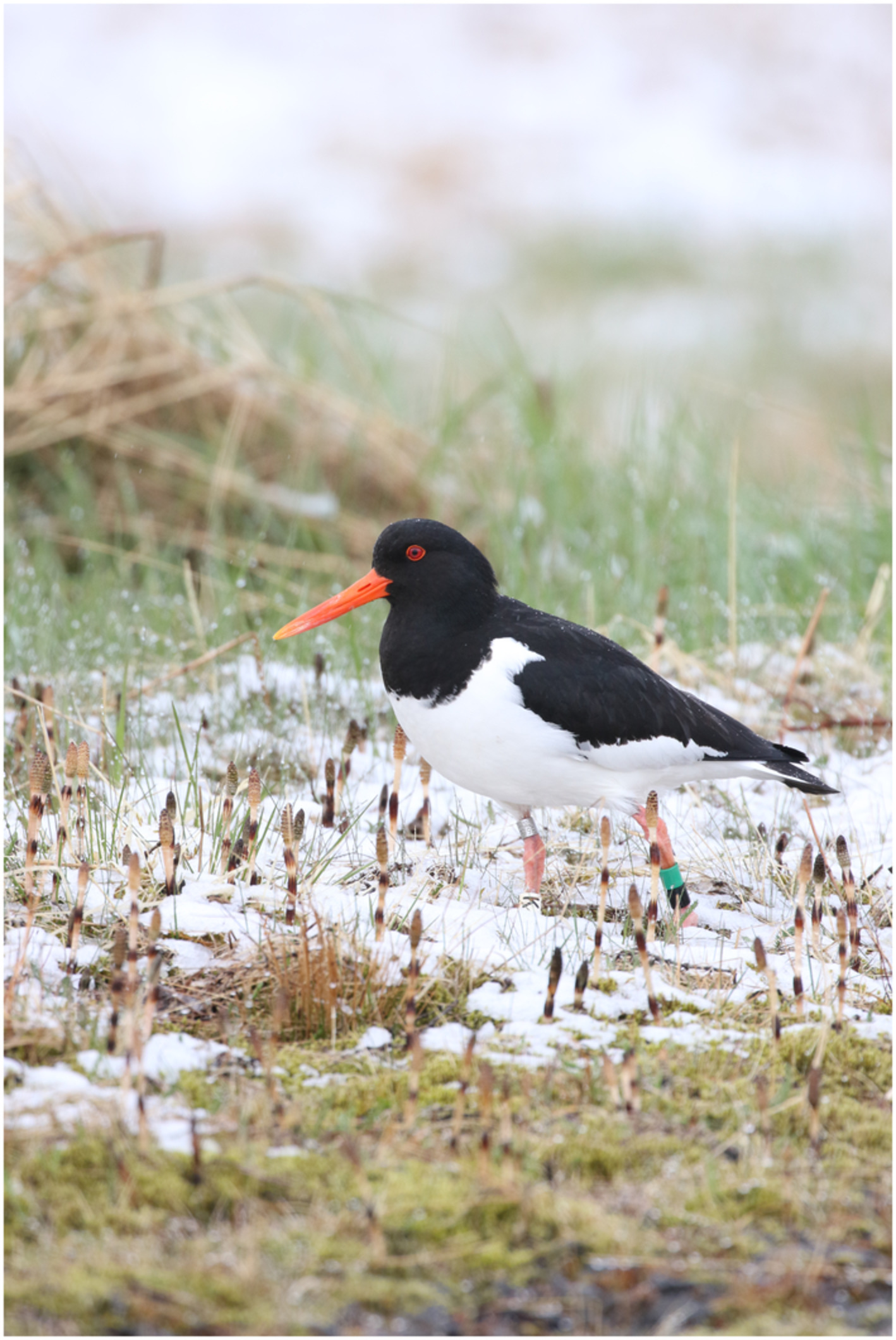
In avian migratory systems, variation in individual phenology can arise through differences in individual migratory behaviors, and this may be particularly apparent in partial migrant systems, where migrant and resident individuals are present within the same population. For the partially migratory Eurasian oystercatchers breeding in Iceland, we found that annual variation in timing of laying differed among pair migratory behaviors and that pairs that laid early were more likely to replace their clutch after nest loss, had higher productivity and higher fledging success, independent of pair migratory behavior. Understanding these cascading effects of pair phenology on breeding success is likely to be key to predicting the impact of changing environmental and climatic conditions on migratory species breeding in seasonal environments.
Seasonal and ontological variation in diet and age-related differences in prey choice, by an insectivorous songbird
- First Published: 11 August 2022
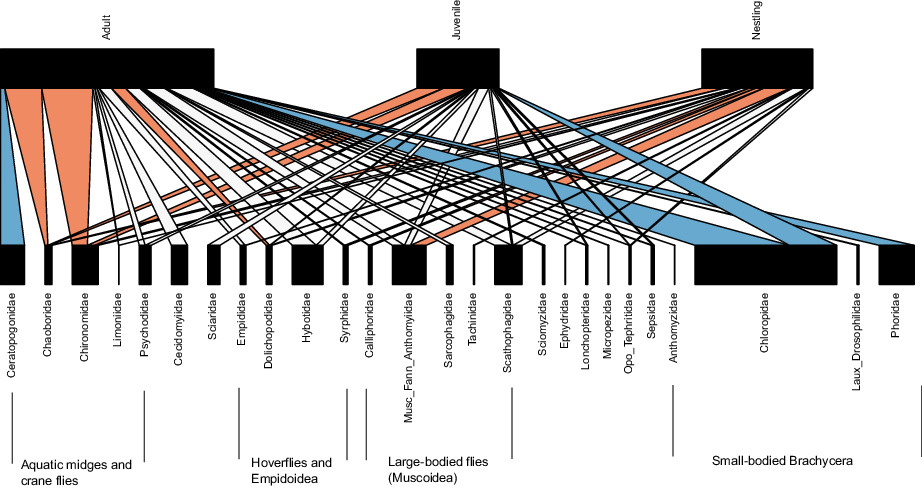
We compared diet and prey selectivity between three age classes of the reed warbler (Acrocephalus scirpaceus), an insectivorous, migratory songbird, at a breeding site in Somerset the United Kingdom. Our study was conducted over three stages of the summer breeding season to examine seasonal effects. It was discovered that birds of different ages showed considerable dietary overlap but partitioned prey according to habitat (terrestrial vs. aquatic), coarse prey size-classes and taxonomy of prey, with different “preferences” for Dipteran families exhibited by different reed warbler age classes. We also found weaker evidence for seasonal changes in reed warbler diet.
Population genetic diversity and structure of Rhinogobius candidianus (Gobiidae) in Taiwan: Translocation and release
- First Published: 11 August 2022
Oxidative physiology is weakly associated with pigmentation in birds
- First Published: 11 August 2022
Both oxidative physiology and plumage coloration are important foci of avian research in the past decade, and intraspecific studies suggest multiple mechanistic links between the antioxidant system and pigmentation. We performed a large-scale comparative analysis on 104 European bird species, and found that species-specific oxidative physiology and plumage coloration evolved largely independently of each other. Out of five oxidative physiological markers measured only the plasma level of reactive oxygen metabolites was related to melanin coloration, being positively associated with eumelanin score, and negatively with pheomelanin score. Thus, our results do not support the role of antioxidant glutathione in driving variation in melanin synthesis across species. Furthermore, the carotenoid scores of feathers and bare parts were unrelated to the measured oxidative physiology parameters, further suggesting that the marked differences in pigmentation across birds does not influence their oxidative state.
Projected bioclimatic distributions in Nearctic Bovidae signal the potential for reduced overlap with protected areas
- First Published: 11 August 2022
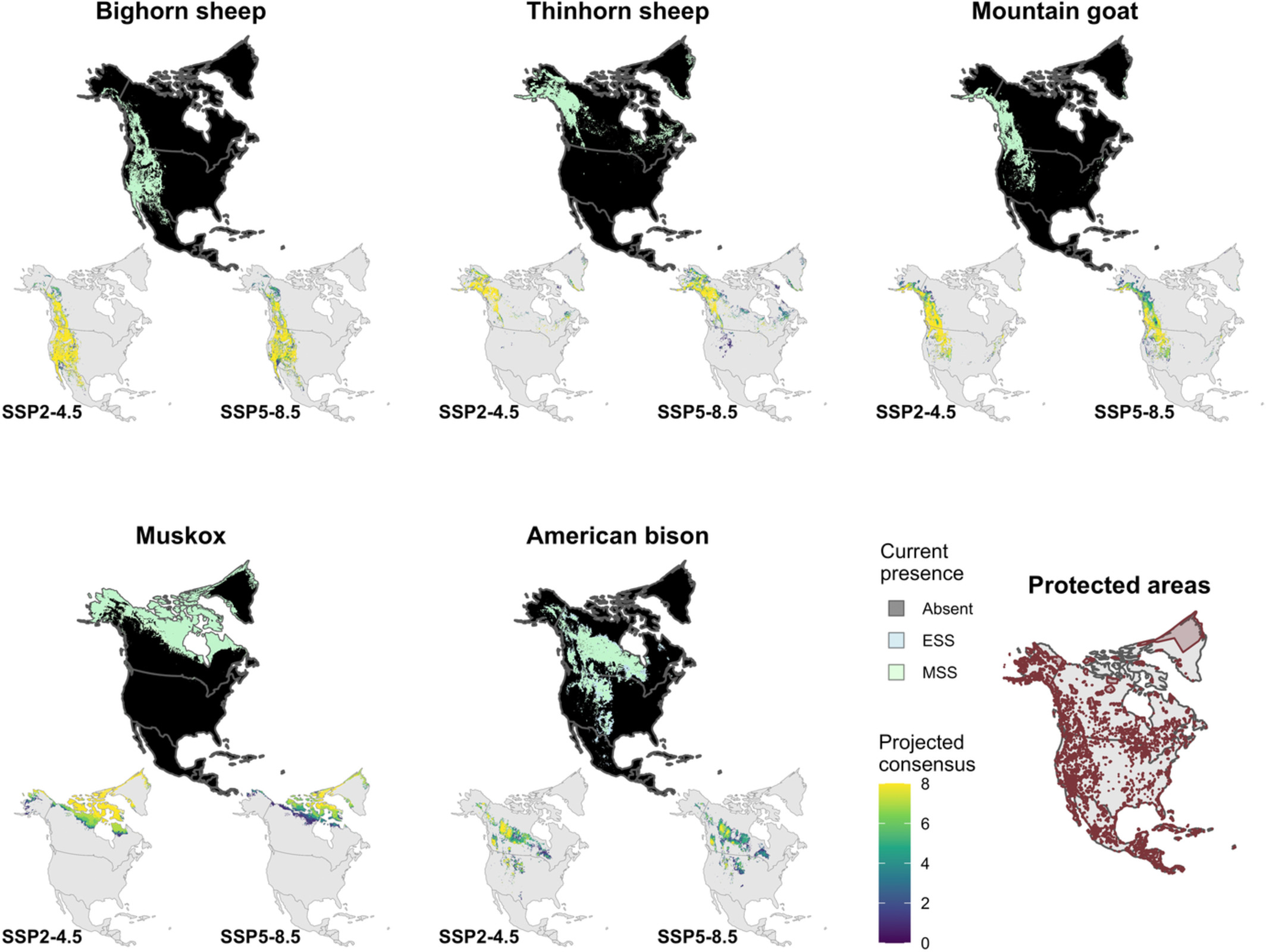
Members of the cattle family (Bovidae) in North America face considerable change under projected climate change. In this article, we describe ecological niche models fit to occurrence data of five wild bovid species and predict current and future distribution of bioclimatic factors characterizing species occurrence under two climate change scenarios. We measure the degree of overlap between modeled distributions and currently protected areas, finding that ecological niche space is expected to shift most dramatically among more northerly species, leading to larger reductions in realized protected space.
Behavioral responses of a parasitoid fly to rapidly evolving host signals
- First Published: 11 August 2022
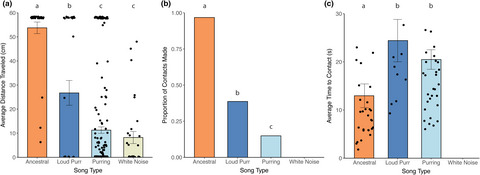
When host signals change, the effects on eavesdroppers are often ignored. We used the rapidly evolving interaction between the Pacific field cricket, Teleogryllus oceanicus, and the parasitoid fly, Ormia ochracea, to ask how parasitoids initially respond to a novel host signal (purring). We found fly preferences for amplitude but no other components (e.g., frequency, temporal) of novel purring song. As purring spreads throughout Hawaii, we expect selection to favor flies that use purring song to locate their hosts.
Evaluating the summer landscapes of predation risk and forage quality for elk (Cervus canadensis)
- First Published: 11 August 2022
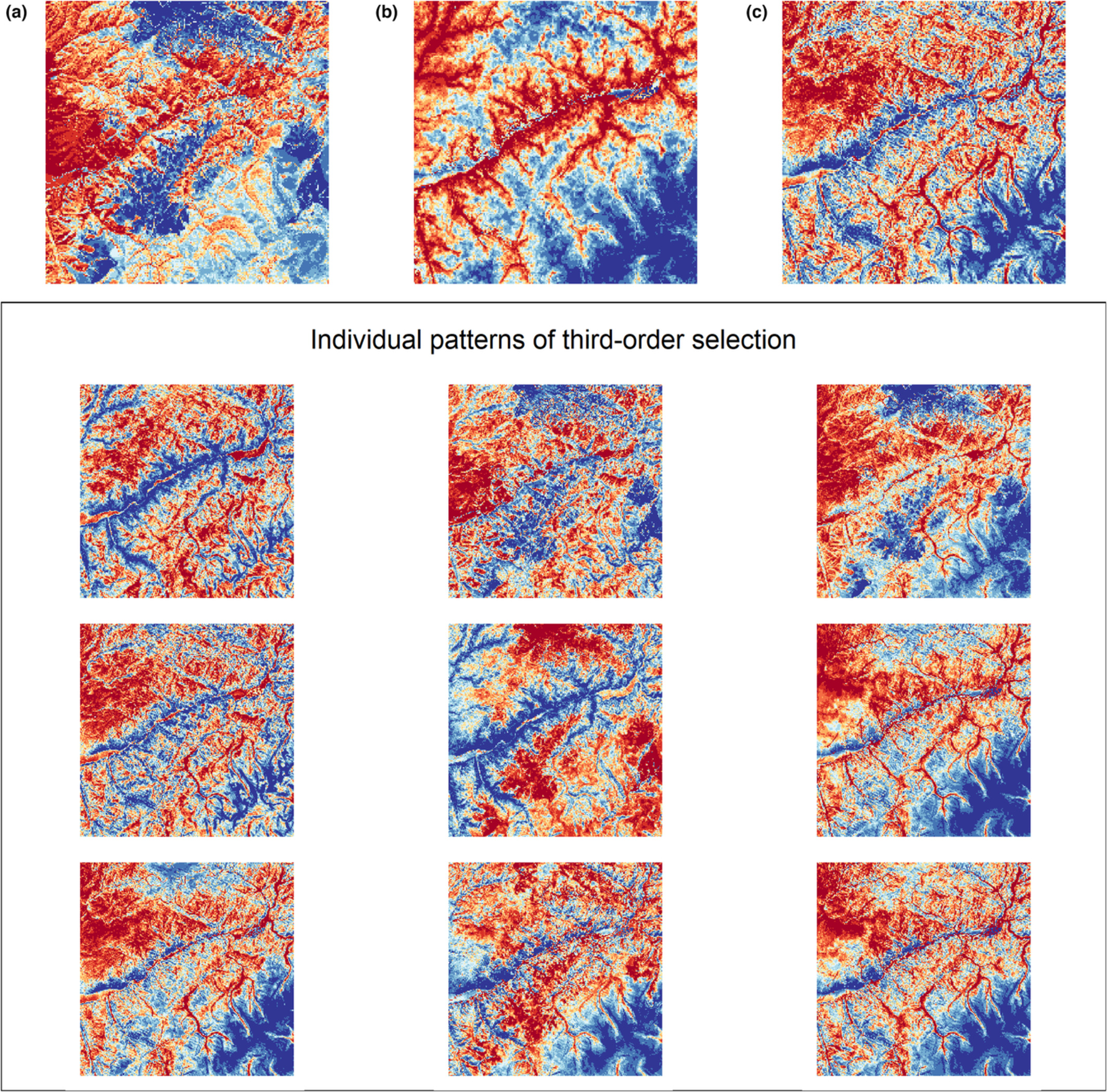
Example of predicted relative probabilities of selection (3rd order) for a small sample of individual female elk (n = 9), based on the underlying landscapes of risk and forage quality. The lower panel illustrates the variety of predicted relative probabilities of selection (3rd order) for elk in response to the underlying landscape of forage quality and risk. To aid illustration, all values were binned into 10 quantiles and coded from low (blue) to high (red).
Modeling the distribution of the endangered Jemez Mountains salamander (Plethodon neomexicanus) in relation to geology, topography, and climate
- First Published: 23 August 2022
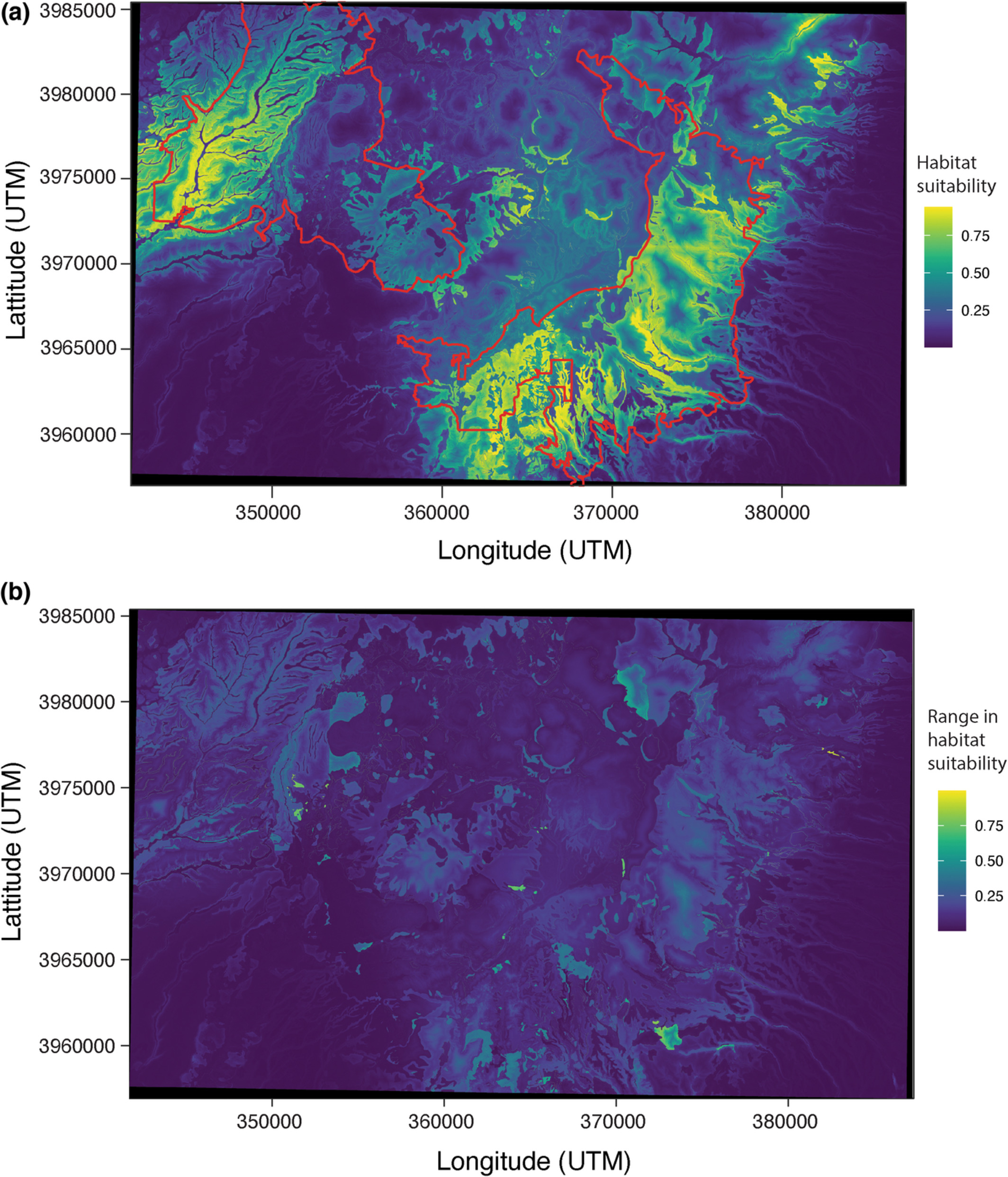
The Jemez Mountain salamander is an endangered salamander in northern New Mexico. We used Maxent to determine habitat suitability based on geological, topographical, and environmental variables. We found that geological features and climate variables are important to its distribution, and we recommend that these variables be considered in future conservation efforts.
Spatiotemporal monitoring of the rare northern dragonhead (Dracocephalum ruyschiana, Lamiaceae) — SNP genotyping and environmental niche modeling herbarium specimens
- First Published: 12 August 2022
Six years of wild bee monitoring shows changes in biodiversity within and across years and declines in abundance
- First Published: 12 August 2022
Typha for paludiculture—Suitable water table and nutrient conditions for potential biomass utilization explored in mesocosm gradient experiments
- First Published: 23 August 2022
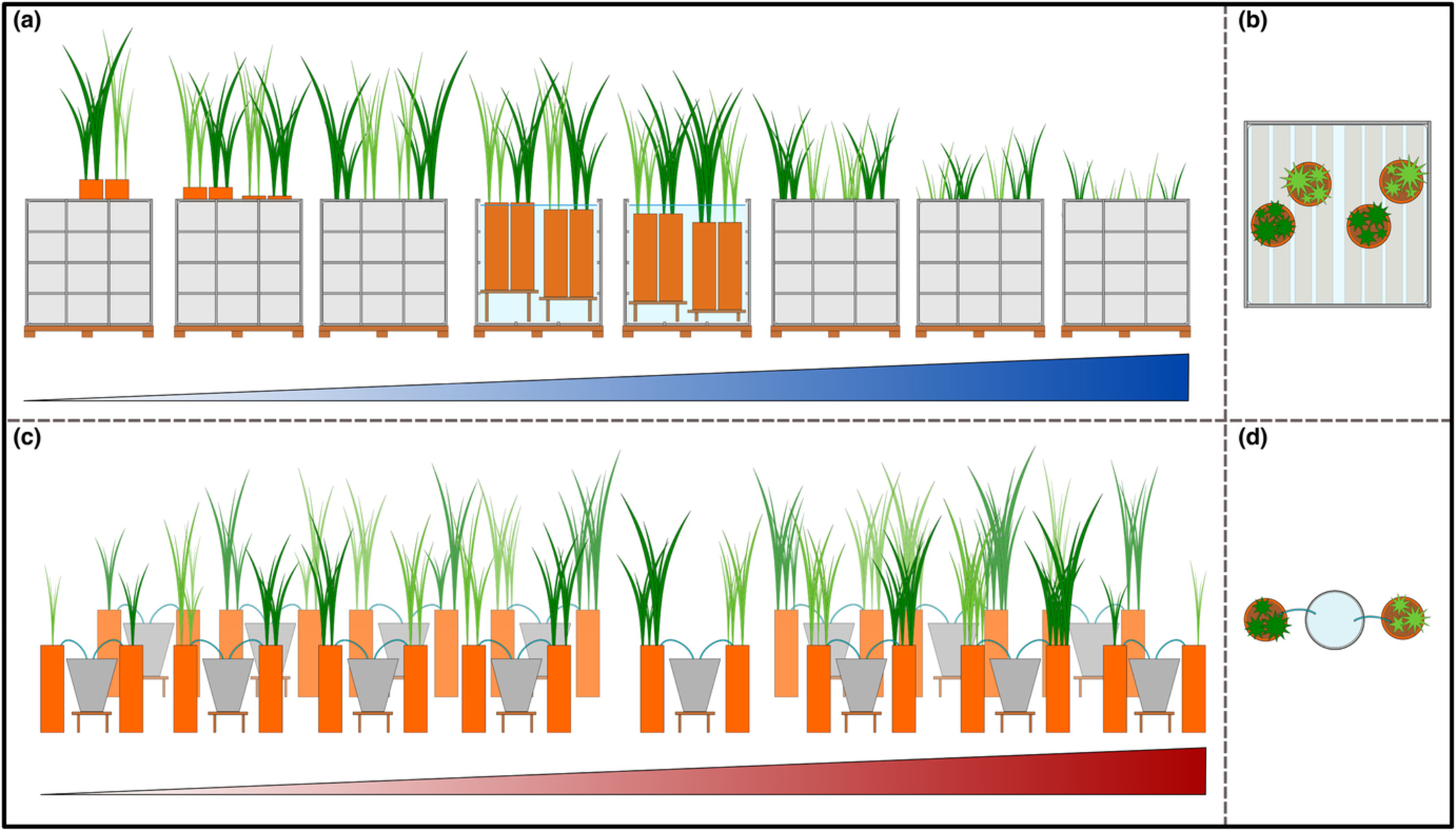
In a six-month mesocosm experiment, we investigated productivity and biomass quality (morphological traits, tissue chemical composition) of promising paludiculture crops Typha angustifolia and Typha latifolia along gradients of water table depth and nutrient supply with an emphasis on the plants' high-value utilization (e.g. as building material, paper, biodegradable packaging). Biomass quality requirements, optimal cultivation conditions and preferred species differ depending on intended utilization: Within the scope of investigated conditions, T. latifolia was generally more productive than T. angustifolia, productivity was remarkably tolerant of low nutrient supply and these conditions benefitted tissue chemical composition. T. angustifolia productivity and T. latifolia tissue chemical composition remained stable across water tables, however, low water tables were beneficial for T. latifolia productivity, high water tables beneficial for T. angustifolia biomass quality.
Differential habitat use of a notorious invasive fish, the round goby, in a translocation-relevant system
- First Published: 15 August 2022
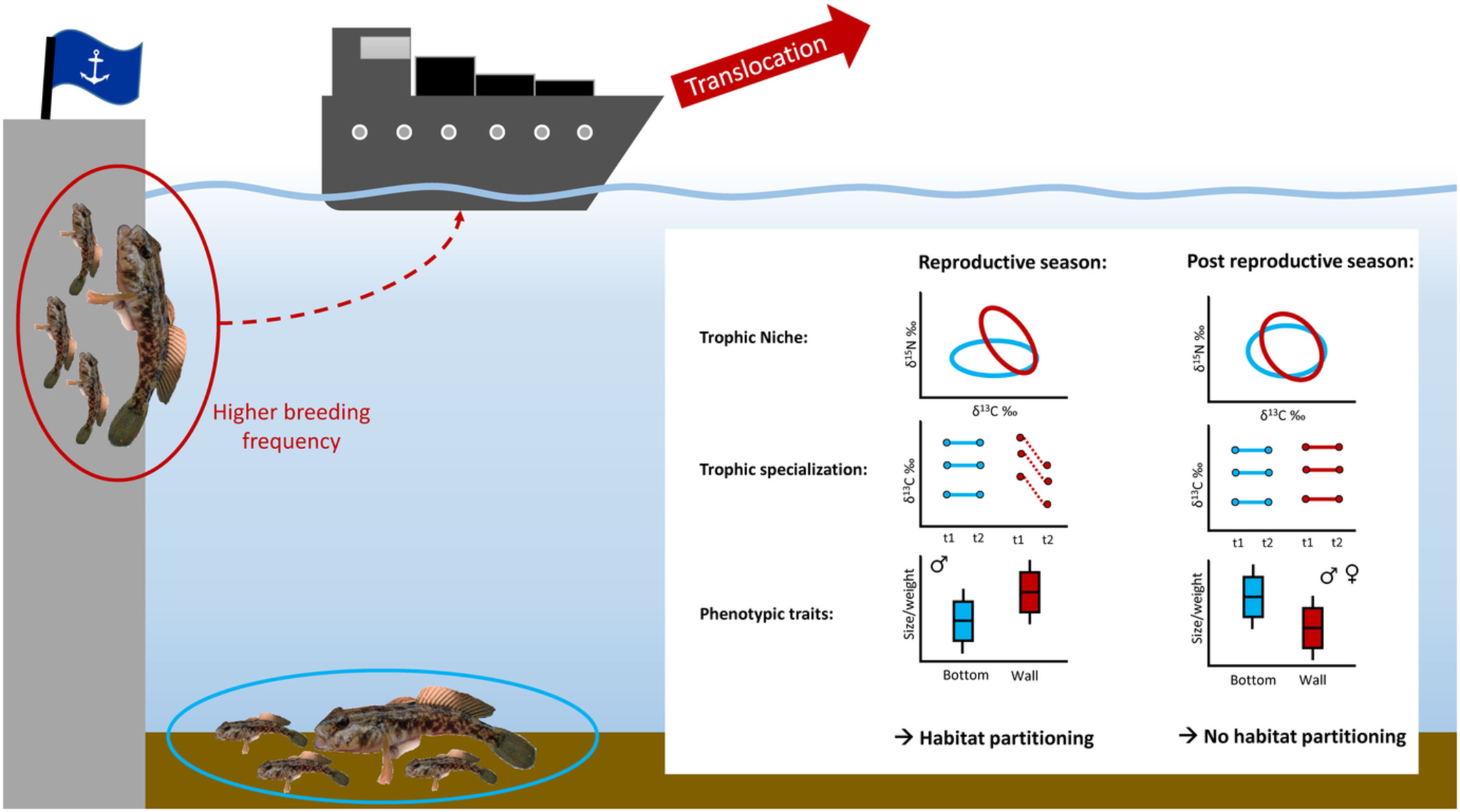
Invasive species often successfully colonize anthropogenic habitats and can use them as beachheads to reach translocation vectors. Here, we demonstrate a case of habitat partitioning in an anthropogenic ecosystem, where a notorious invasive fish (the round goby) utilizes either their traditional habitat on the bottom substrate, or vertical harbour walls to forage. Due to the proximity of vertical walls to boats, which are considered translocation vectors, these findings could help explain the high invasion success of the round goby.
Foraging habitat selection of shrubland bird community in tropical dry forest
- First Published: 12 August 2022
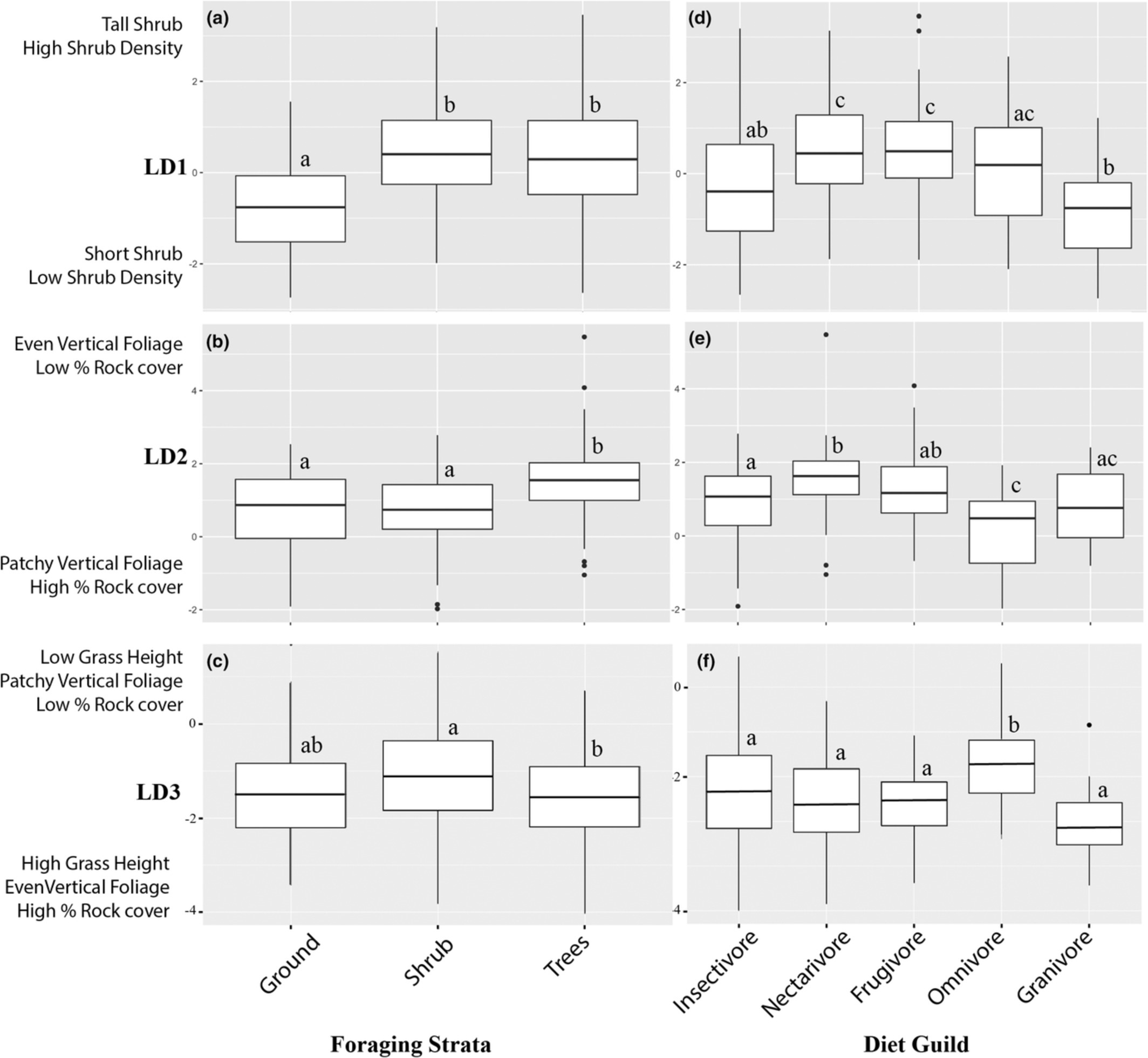
Data deficiency has hindered conservation in degraded shrublands. Using shrubland bird community as a model, we address this knowledge gap by characterizing habitat use of the community, effect of diet guild and foraging strata, and association between bird and plant species. We recommend strategic and selective harvesting of forest products and a spatially and temporally controlled livestock grazing regime may allow regeneration of scrubland and create conditions favored by birds.
Effects of climate change on plant resource allocation and herbivore interactions in a Neotropical rainforest shrub
- First Published: 12 August 2022

Climate change could impact plant–herbivore systems directly by altering species traits or abundances or indirectly by altering the strength and direction of the relationships that govern organismal strategies and interactions. It appears that, in this Neotropical system, increased CO2 concentration and temperature may cause indirect, cascading consequences, even where direct effects are not observable.
Density-dependent changes of mating system and family structure in Brandt's voles (Lasiopodomys brandtii)
- First Published: 23 August 2022
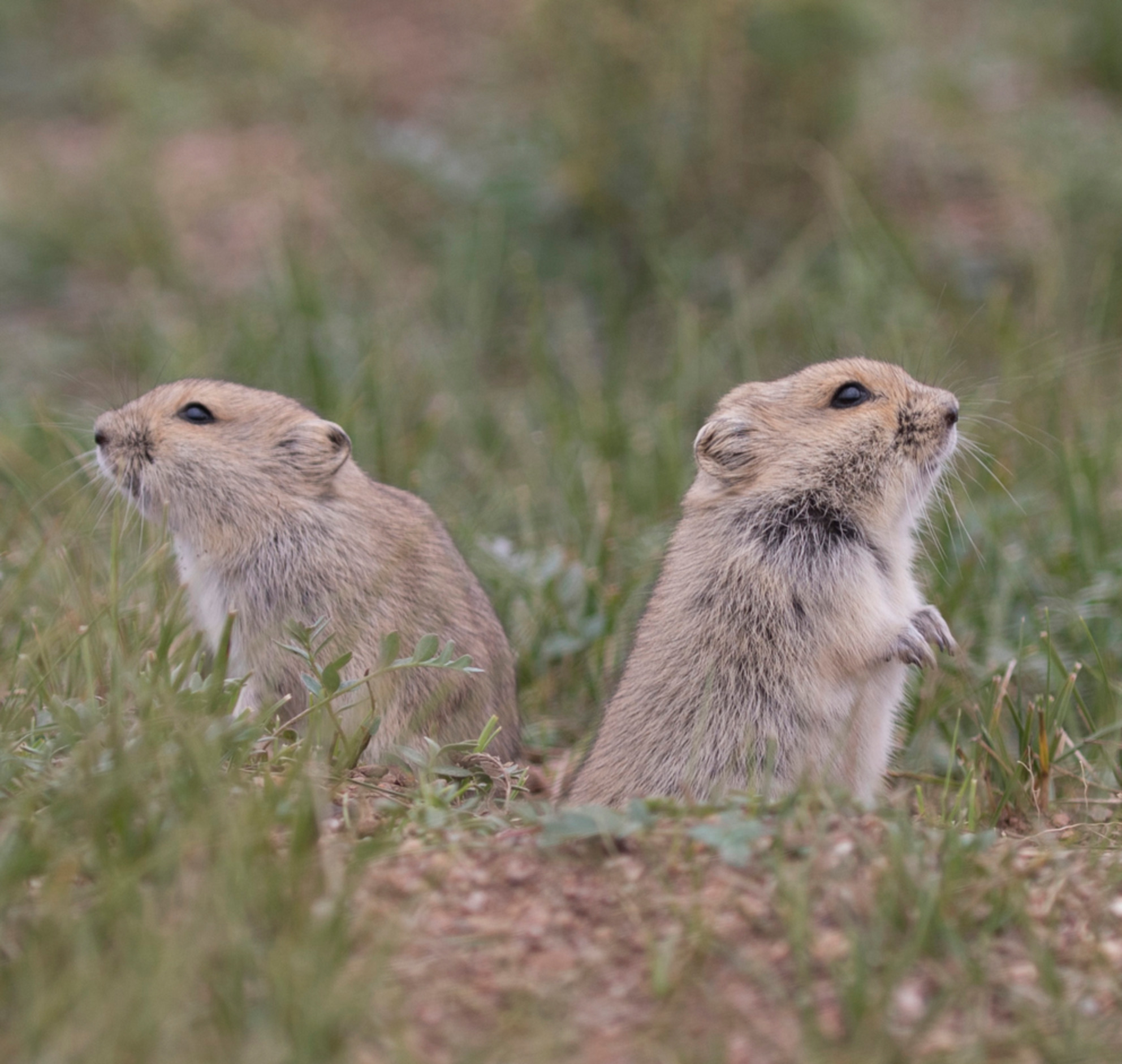
Our study indicates that with increased population density, Brandt’s voles showed a shift in the mating system to a higher male-biased promiscuous system and more extra-group mating behaviors. The plasticity of mating system may play a significant role in regulating population dynamics of Brandt’s voles through altering their family structure and then fitness under field condition.
Climate change-induced distributional change of medicinal and aromatic plants in the Nepal Himalaya
- First Published: 15 August 2022
Strong plastid degradation is consistent within section Chondrophyllae, the most speciose lineage of Gentiana
- First Published: 15 August 2022
Prey identity affects fitness of a generalist consumer in a brown food web
- First Published: 23 August 2022
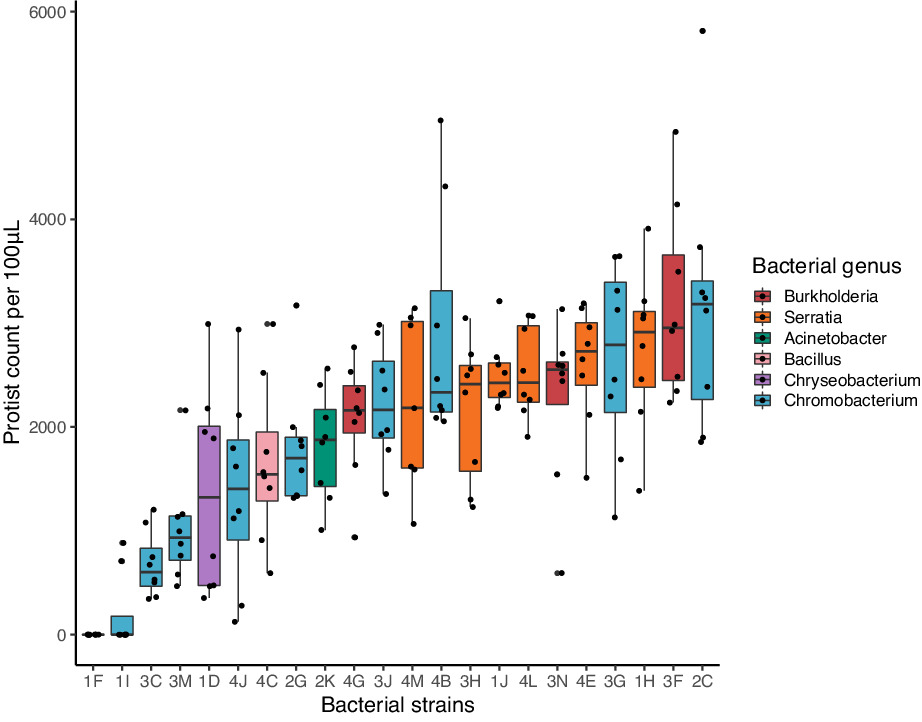
Sarracenia purpurea, the purple pitcher plant, is used as model system for studying ecology and evolution in a constrained natural community. The bacteria that serve as the base of this brown food web are often treated as a functionally similar as the food source for protozoa. Through our experiment, we demonstrate that bacterial strain identity matters for protozoan fitness and that this should be a consideration in future studies looking at bottom-up effects in this system.
Intraspecific variation in male mating strategies in an African ground squirrel (Xerus inauris)
- First Published: 15 August 2022
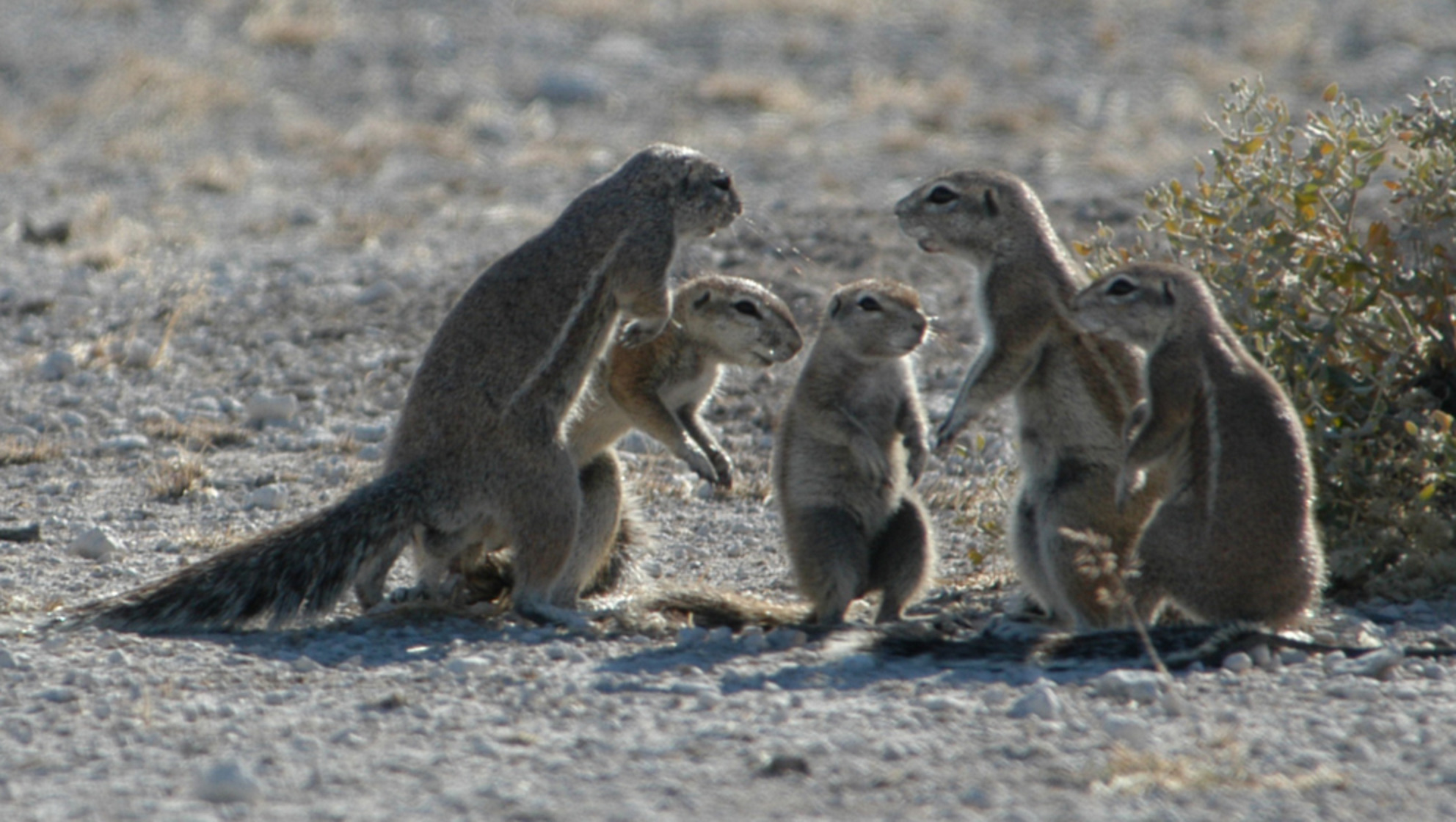
Male mating strategies respond to female availability such that variation in resources that affect spatial distribution can also alter cost benefit tradeoffs within a population. We compared two populations of Cape ground squirrels (Xerus inauris), an arid-adapted species with year-round breeding and intense mating competition, where males are rarely aggressive towards one another and rely on pre- and post-copulatory strategies to determine reproductive success. Our findings suggest the differences in resource availability and female distribution lead to intraspecific variation in male reproductive behavior and morphology.
Winter locations of red-throated divers from geolocation and feather isotope signatures
- First Published: 23 August 2022
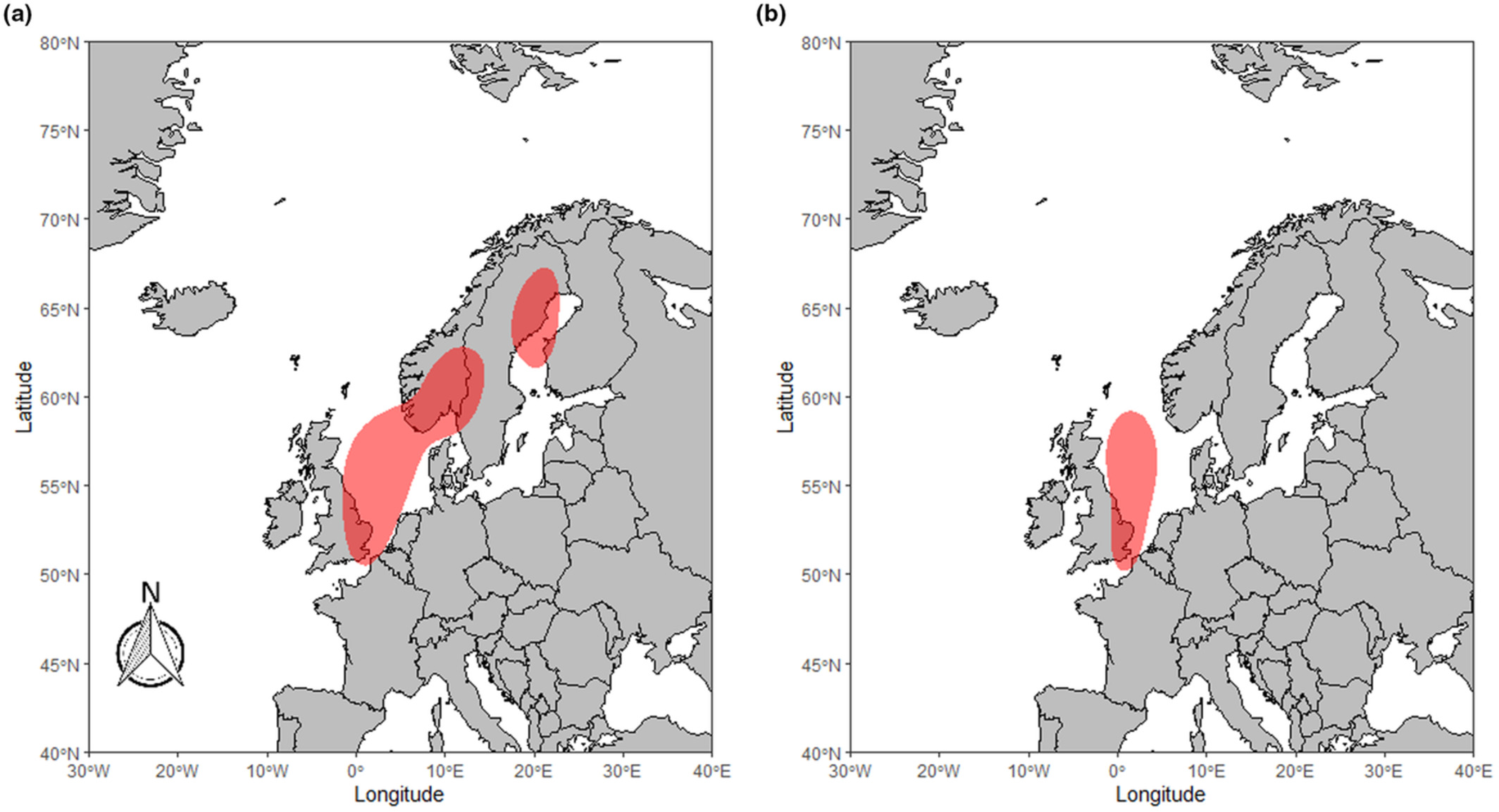
Understanding the distributions of species vulnerable to disturbance from anthropogenic activity is vital in assessing future consequences. Using remote sensing technology, we tracked the movements of red-throated divers from three breeding locations to identify their overwinter distributions. We then linked these population level differences in distribution to differences in isotopic signatures of feathers grown during the moulting period.
How does variation in total and relative abundance contribute to gradients of species diversity?
- First Published: 17 August 2022
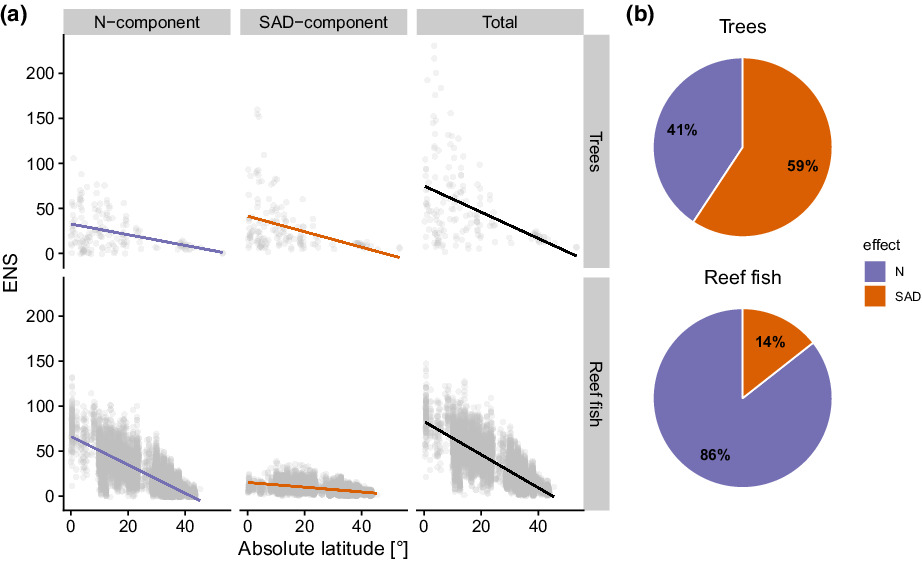
Here, we partition diversity gradients into components of the SAD and abundance using the effective number of species (ENS) transformation of the individual-based rarefaction curve. Comparing well-known latitudinal gradients of trees and reef fish, we find that although both groups show similar richness gradients, they differ substantially in the contributions of the more-individuals effects (86% in reef fish, 41% in trees). Our approach opens new doors for the synthesis of biodiversity trends due to natural and anthropogenic changes.
Open removal models with temporary emigration and population dynamics to inform invasive animal management
- First Published: 17 August 2022
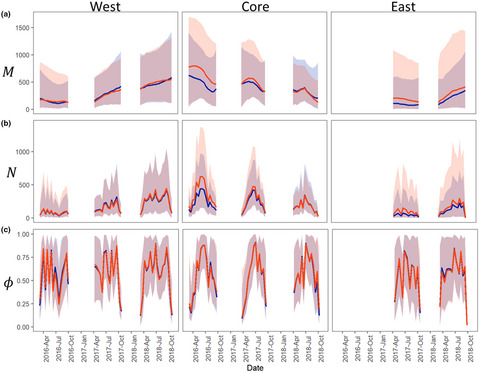
This work extends removal abundance models to estimate animal abundance while accounting for imperfect detection, availability bias, and population dynamics (both within and between years). We develop two models, one that can be estimated without ancillary information, and a second (an informed population model, InfoPM) that also incorporates information on age-structured vital rates. We apply these models to estimate the population dynamics (births, survival, migration) of an invasive lizard (Argentine black and white tegus) in three management areas in South Florida.
rGAI: An R package for fitting the generalized abundance index to seasonal count data
- First Published: 22 August 2022
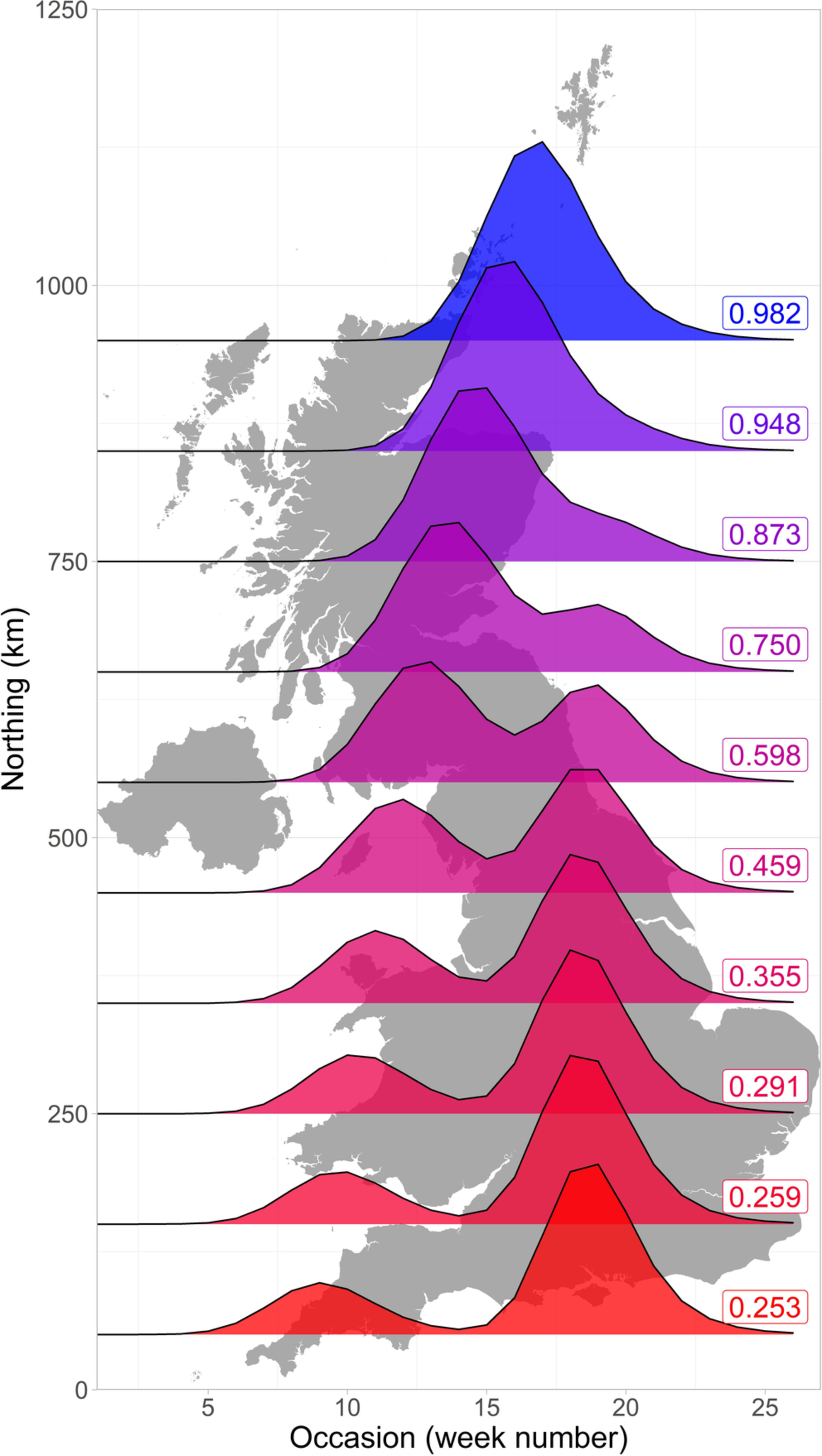
We describe an R package for the analysis, primarily, of data on seasonal insects. It is flexible and user-friendly and provides estimates of important characteristics relating, for example to the timing of events: phenology. This allows the determination of temporal changes, and the effects of climate change.
Seasonal climatic niche and migration movements of Double-crested Cormorants
- First Published: 23 August 2022
The potential distributions of African Azolla species and their implications for African wetland ecosystems for the future
- First Published: 22 August 2022
Genomics reveals the history of a complex plant invasion and improves the management of a biological invasion from the South African–Australian biotic exchange
- First Published: 23 August 2022
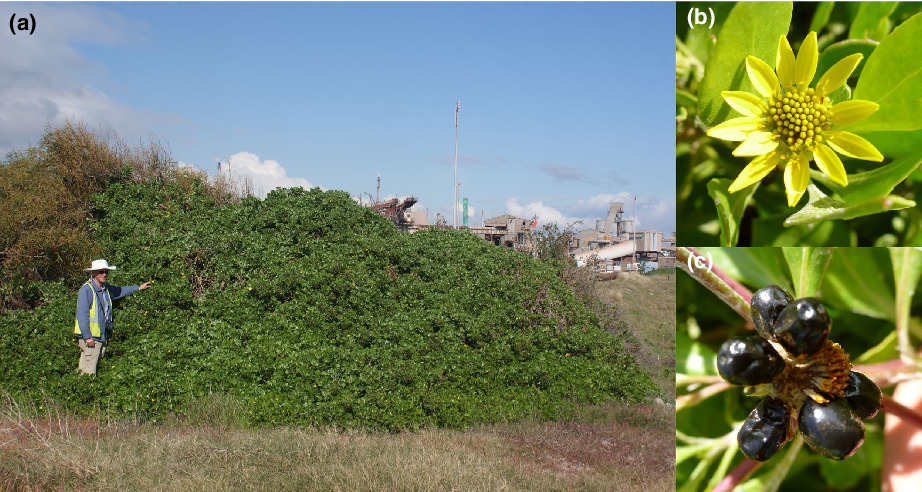
Bitou bush is a coastal shrub, native to Southern Africa, and invasive in Australia. We used single nucleotide polymorphisms to reconstruct the invasion history of bitou bush into eastern and Western Australia. We found strong genetic structure in the native range, and detected bottlenecks through the introduction process. Our results highlight the risk of introduction of potentially invasive species via shipping routes, even from a small number of propagules.
Legume germination is delayed in dry soils and in sterile soils devoid of microbial mutualists: Species-specific implications for upward range expansions
- First Published: 23 August 2022
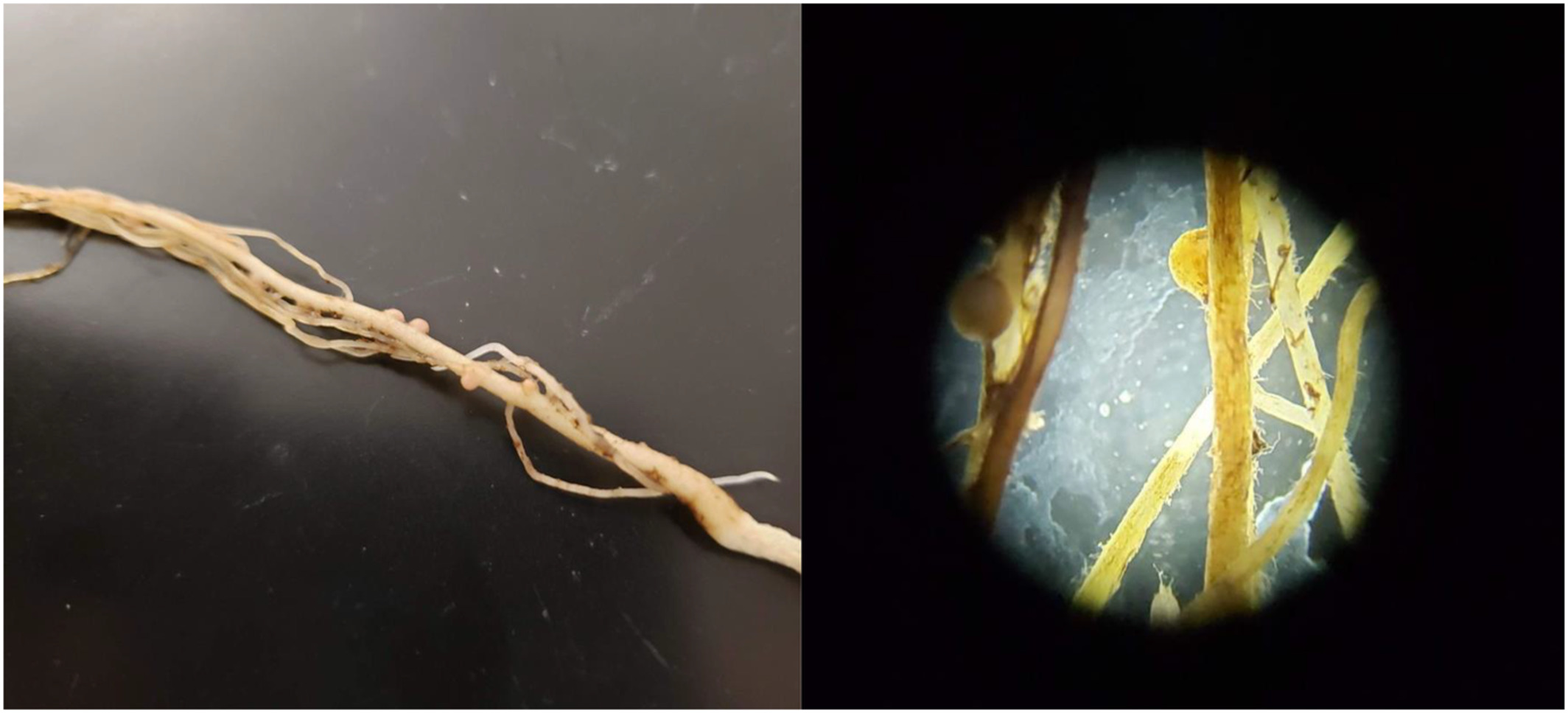
In this article, we assess the effects of mutualism loss via soil sterilization, drought, or introduction to novel soils found beyond the current distributions of two focal legume species in subalpine environments. Through common garden experiments in controlled environments, we find evidence that soil sterilization (and consequent microbial absence) and dry soils cause phenological delays of 2-5 weeks in germination date, likely as a result of interaction loss between legumes and germination-promoting soil microbes, such as mutualistic rhizobia.
Ecological indices from environmental DNA to contrast coastal reefs under different anthropogenic pressures
- First Published: 23 August 2022

In this study, we examined the capacity of eDNA to provide accurate biodiversity measures in species-rich ecosystems comparing with traditional methods. We inventoried reef fish assemblages of two contrasted coastal areas of Curaçao exposed to different levels of anthropogenic pressure. We found that eDNA metabarcoding provides rapid and robust species occupancy responses to contrasted environments and that coupled with functional and phylogenetic information, those surveys can serve the management of coastal habitats under increasing threat from global changes.
How low can you go? Introducing SeXY: sex identification from low-quantity sequencing data despite lacking assembled sex chromosomes
- First Published: 25 August 2022
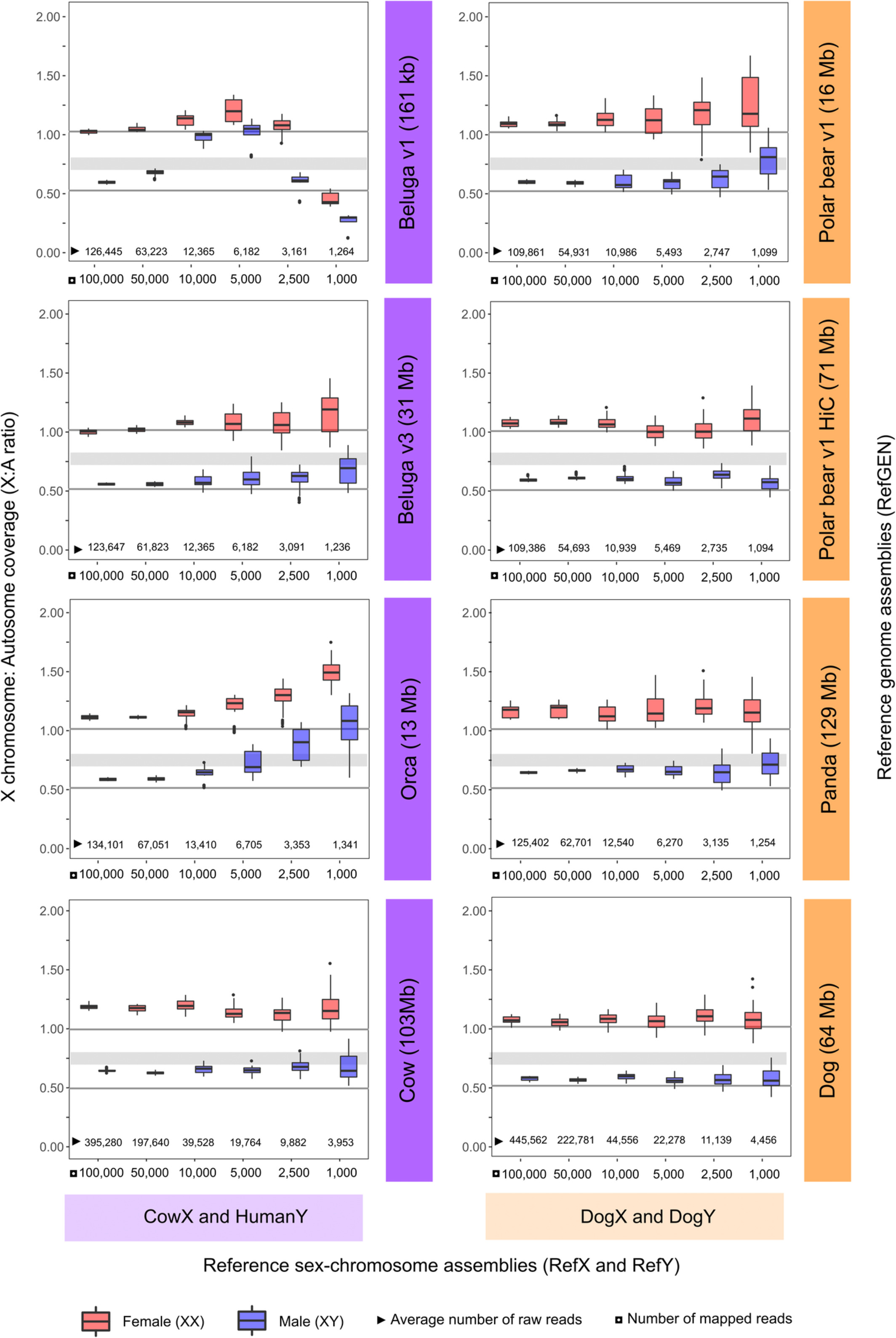
We present a novel pipeline for sex identification (SeXY) in non-model organisms that lack high-quality genomes, or that lack available comparative genomic data sets. SeXY accurately determines sex when at least 50,000 mapped reads are available, even when using only a highly fragmented assembly as reference (scaffold N50 of 161 kb). When higher-quality reference genome assemblies (scaffold N50 30 Mb) are used, SeXY provides 100% accuracy even down to 1000 mapped reads, bypassing the need for often expensive high-effort shotgun sequencing.
Fast-paced city life? Tempo and mode of phenotypic changes in urban birds from Switzerland
- First Published: 23 August 2022
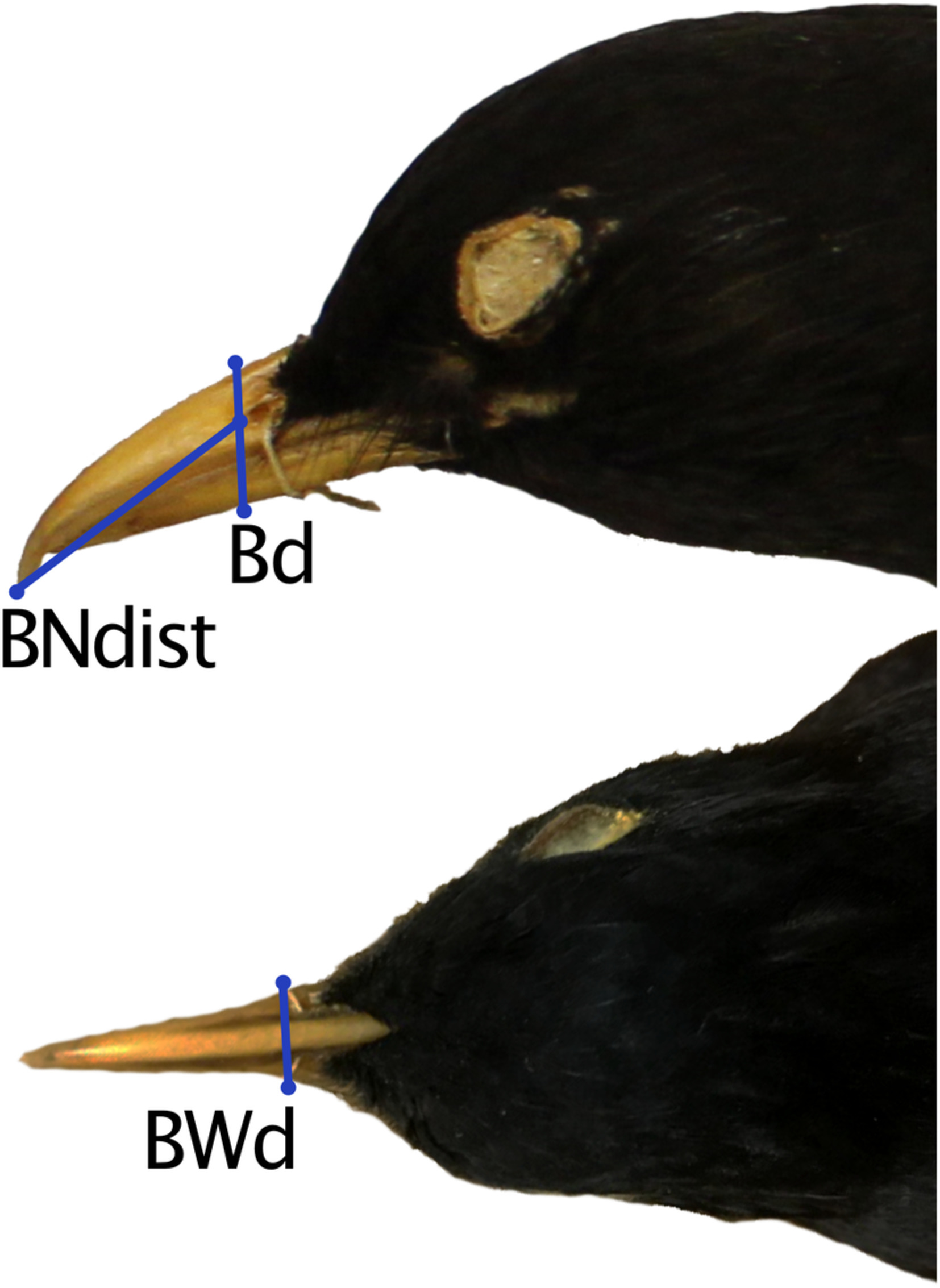
Human-influenced environments, especially urban areas, often create extreme ecological niches, but wildlife can survive and even thrive in them. Changes in populations from such anthropogenically-influenced habitats are often associated with high rates of evolution. We showed that beak dimensions of urban birds in Switzerland changed slightly over time and that rates of these phenotypic changes were high in urban contexts, yet similar to rate estimates in natural contexts.
Coastal upwelling may strengthen the controls of herbivory and light over the population dynamics of Hedophyllum sessile in the Oregon rocky intertidal
- First Published: 23 August 2022

We experimentally tested the effect of light and grazing on sporelings of the common intertidal kelp Hedophyllum sessile in a persistent upwelling site and an intermittent upwelling site. We found that coastal geophysical processes (and subsequently, nutrients) may be important in modifying herbivore and light effects on population dynamics of H. sessile, and these dynamics may be further influenced by different characteristics of the kelp (i.e., demographic traits and life history stages).
The need for IUCN species distribution update—The case from takin (Budorcas taxicolor) in Southwest China
- First Published: 29 August 2022
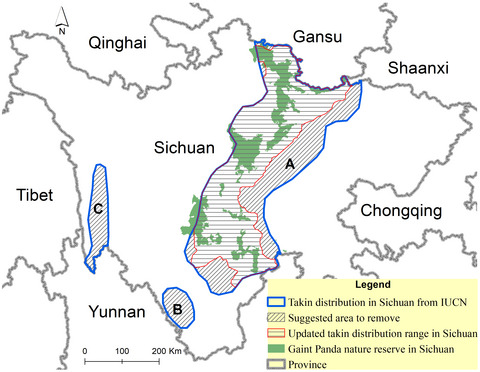
Species distributions are fundamental factors for assessing the threat classification in the IUCN. Therefore, improving the accuracy of species distributions is an essential for improving the global biodiversity crisis. Based on our findings, we provide recommendations for experts to apply the basic approach presented therein to update the Red List distributions for more species, increasing the accuracy of assessments and resulting conservation applications.
Divergence in host–parasite interactions during the cane toad's invasion of Australia
- First Published: 26 August 2022
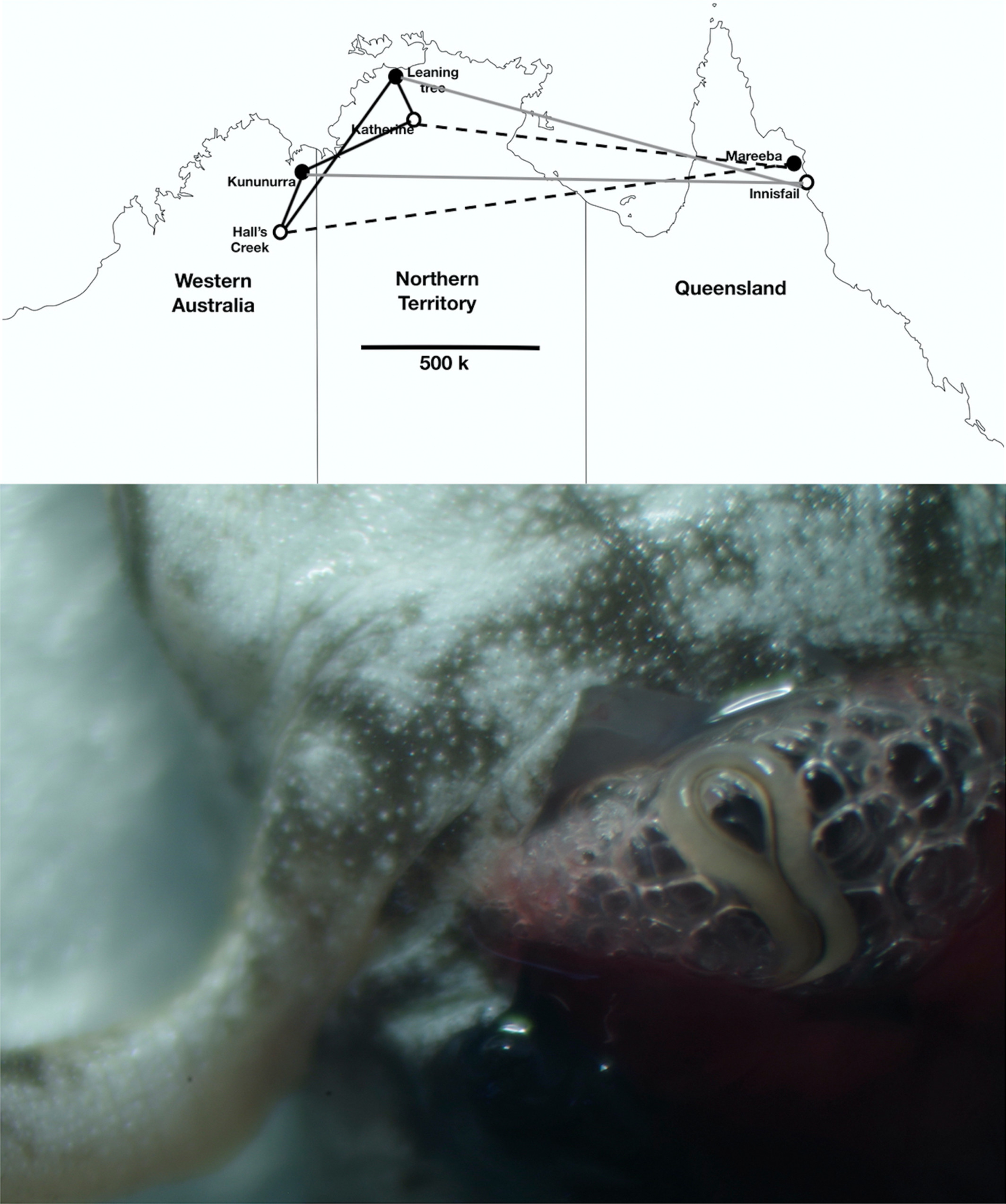
Coevolutionary host-parasite ‘arms races’ can be disrupted by new evolutionary forces imposed by biological invasions, affecting both host and parasite densities, as well as their traits. The spread of cane toads and their parasitic lungworm across tropical Australia provides an ideal opportunity to study a perturbed host-parasite system. We conducted a cross-infection experiment using common-garden-reared toads and lungworms from long-established, intermediate and recently-invaded sites to compare infectivity and virulence of the parasite and resistance and tolerance of the host.
Parental DNA methylation influences plasticity of early offspring traits, but offspring DNA methylation influences trait plasticity throughout life
- First Published: 22 August 2022
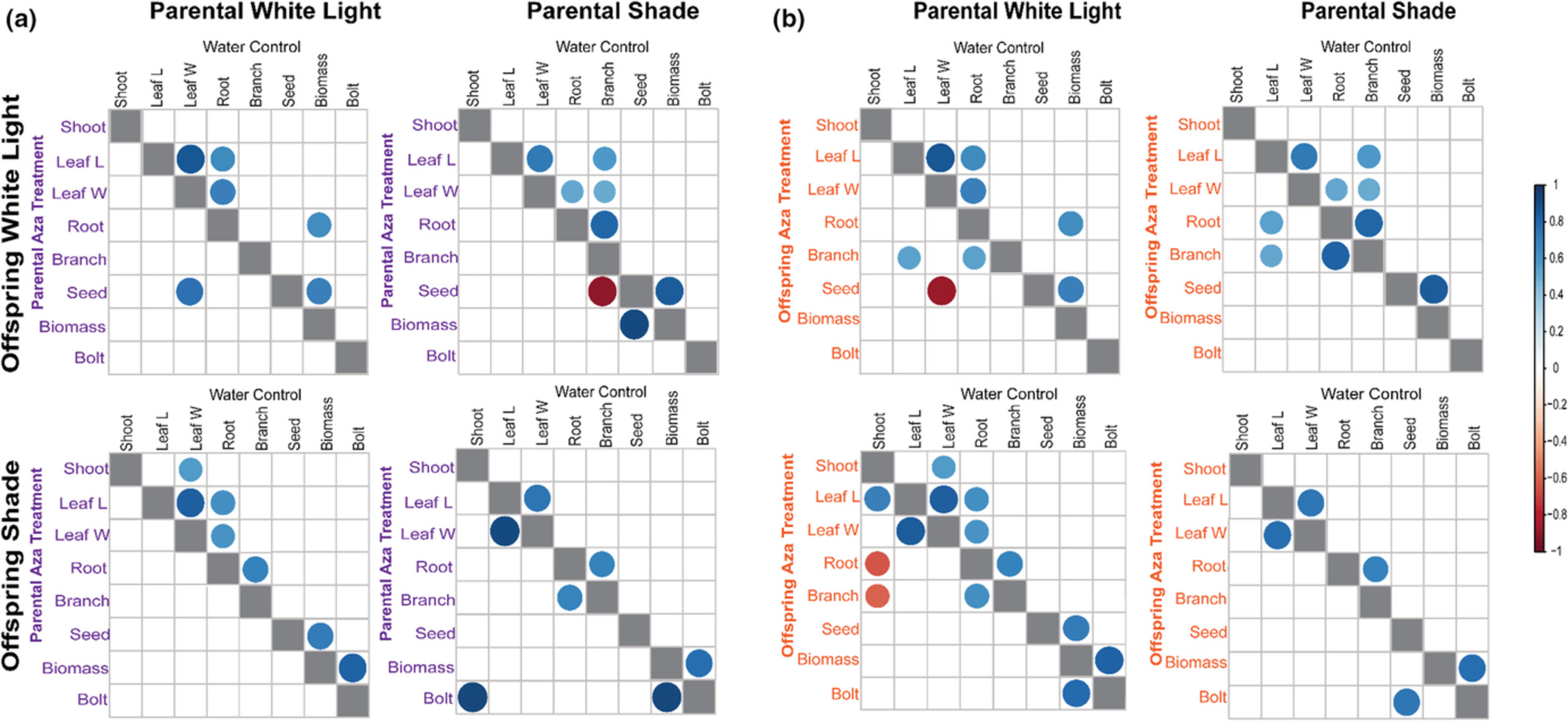
We demonstrated that not only do the environments of both generations shape offspring traits, but the DNA methylation of both generations influences plastic responses to the environment. Parental environment and DNA methylation influence traits early in life, but as offspring age, the environment and DNA methylation of the current generation appear to regulate plasticity. Furthermore, both parental and offspring DNA methylation influence trait correlations suggesting that DNA methylation of both generations plays a role in integrating multi-trait phenotypes like the shade avoidance syndrome.
The effect of climate change on Arcto-Tertiary Mexican beech forests: Exploring their past, present, and future distribution
- First Published: 22 August 2022
Age group DNA methylation differences in lemon sharks (Negaprion brevirostris): Implications for future age estimation tools
- First Published: 29 August 2022
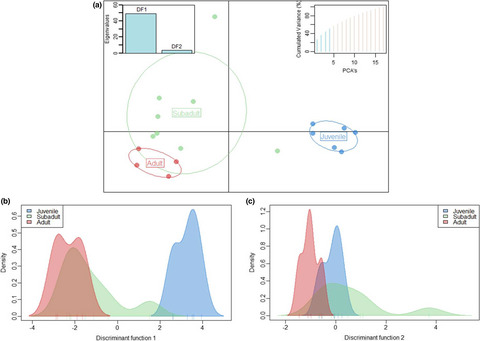
Epigenetic clocks have been found to accurately estimate age for several species, however, these clocks rely heavily on the availability of reference genomes. This study explores the potential for using MSAP as an alternative to higher throughput methods for the analysis of age in sharks. Our results indicate that MSAP could be useful as part of an epigenetics pipeline to infer broad age ranges.
Effects of condensed tannins on behavior and performance of a specialist aphid on aspen
- First Published: 23 August 2022
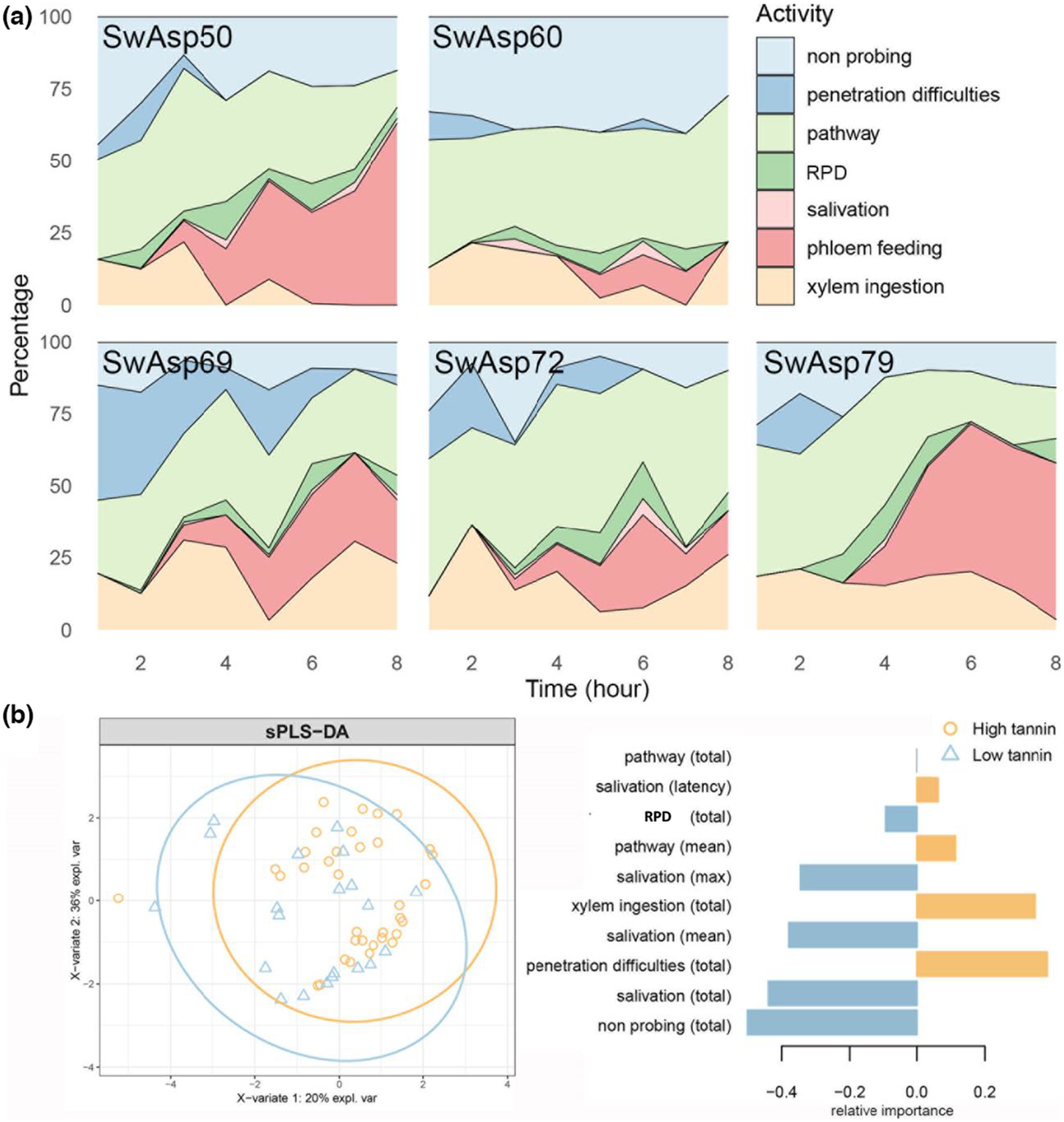
The contributions of condensed tannins (CTs) to aspen resistance provided clear indications of complex interactions between host genotype and both environmental and ontogenetic factors. Induced foliar CT levels correlated negatively with aphid reproduction, and aphids on high-CT genotypes spent more time on probing and xylem feeding and they more frequently showed signs of penetration difficulties. However, genotype-resistance rankings depended on both plant age and growth conditions.
Large flowers can be short-lived: Insights from a high Andean cactus
- First Published: 29 August 2022

We explored the context-dependent large flower/short flower longevity hypothesis in Eriosyce curvispina (Cactaceae), a large-flowered species of the semi-arid central Chilean Andes. We determined breeding system, flower visitation rates and open-pollination fruit set and quantified floral water content. In a temperature-controlled field manipulative experiment we measured potential flower longevity and tested for the presence of pollination-induced floral senescence. Flower longevity in days was far shorter than reported for a large sample of species in the area. No evidence was found for pollination-induced flower senescence as a complementary means for reducing floral maintenance costs.
Active season body mass patterns of little brown and northern myotis bats
- First Published: 22 August 2022

Temperate hibernating bats are constrained by energetic tradeoffs associated with hibernation and reproduction. We identified sex-associated differences in summer mass variation and characterized an age-associated difference in the capacity for prehibernation mass gain in little brown (Myotis lucifugus) and northern myotis (M. septentrionalis). We also identified a positive relationship between relatively good foraging conditions and early parturition in females.
Experimental evolution of bacterial survival on metallic copper
- First Published: 22 August 2022
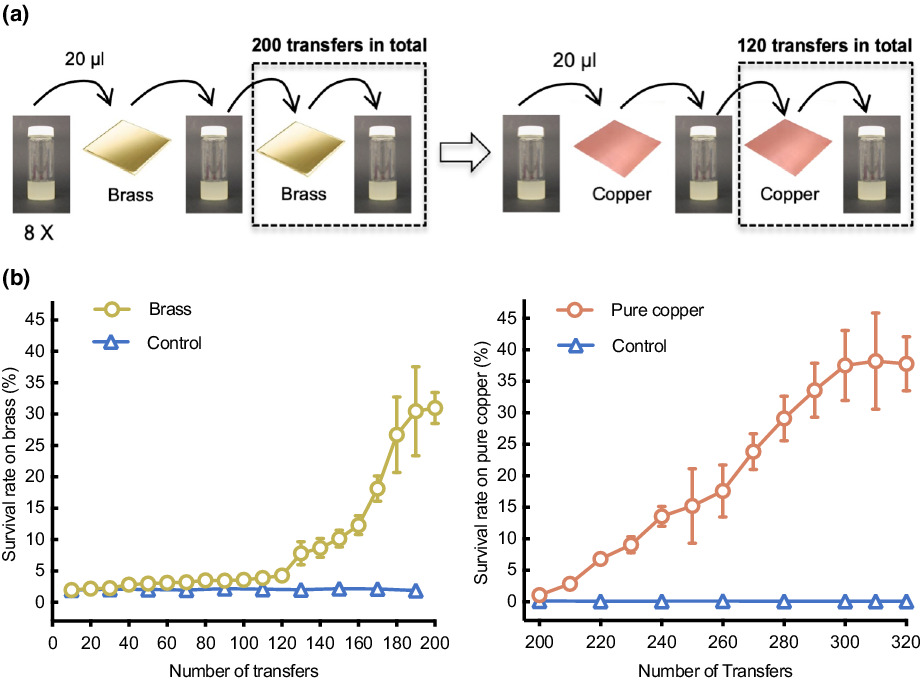
A non-pathogenic bacterial strain was subjected to daily transfer in laboratory media with and without copper contact killing. Results of this long-term evolution experiment revealed the potential of bacteria evolving prolonged survival on metallic copper surfaces. Mitigation strategies such as regular surface cleaning is thus required with the increased use of antimicrobial copper surface materials in the hospital environments.
Preserving avian blood and DNA sampled in the wild: A survey of personal experiences
- First Published: 29 August 2022

The collection of biological material from wild animals plays a fundamental role in many disciplines within ecology and evolution and its storage under optimal conditions ensures its usefulness long after its collection. We report results from an online survey, in which we directly asked scientists to share their experiences in the collection and long-term storage of blood samples and DNA extracts from wild birds. We show that different storage conditions can generate considerable variation in the quality of stored samples, with consequences for research outcomes.
Context-dependency in carnivore co-occurrence across a multi-use conservation landscape
- First Published: 29 August 2022
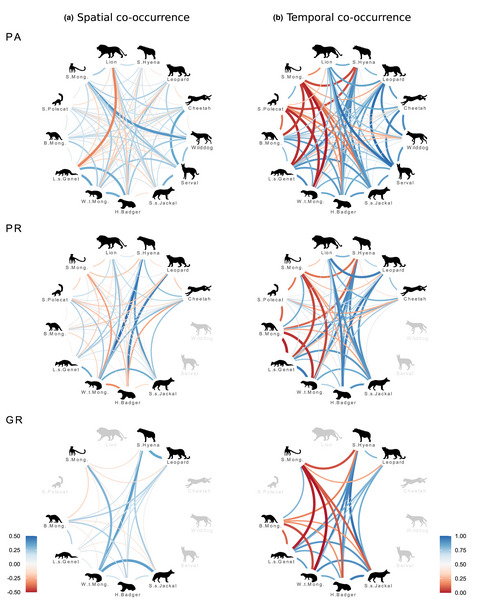
We explored assemblage-wide patterns of carnivore spatial (residual occupancy probability) and temporal (diel activity overlap) co-occurrence across three adjacent wildlife-oriented management contexts in South Africa - a provincial protected area, a private ecotourism reserve, and commercial game ranches. We found that carnivores were generally distributed independently across space, but existing spatial dependencies were context-specific. Our research highlights the complexity of guild-level implications of current management and conservation paradigms." cd_value_code="text
Fine-tuning the performance of abundance estimation based on environmental DNA (eDNA) focusing on eDNA particle size and marker length
- First Published: 23 August 2022
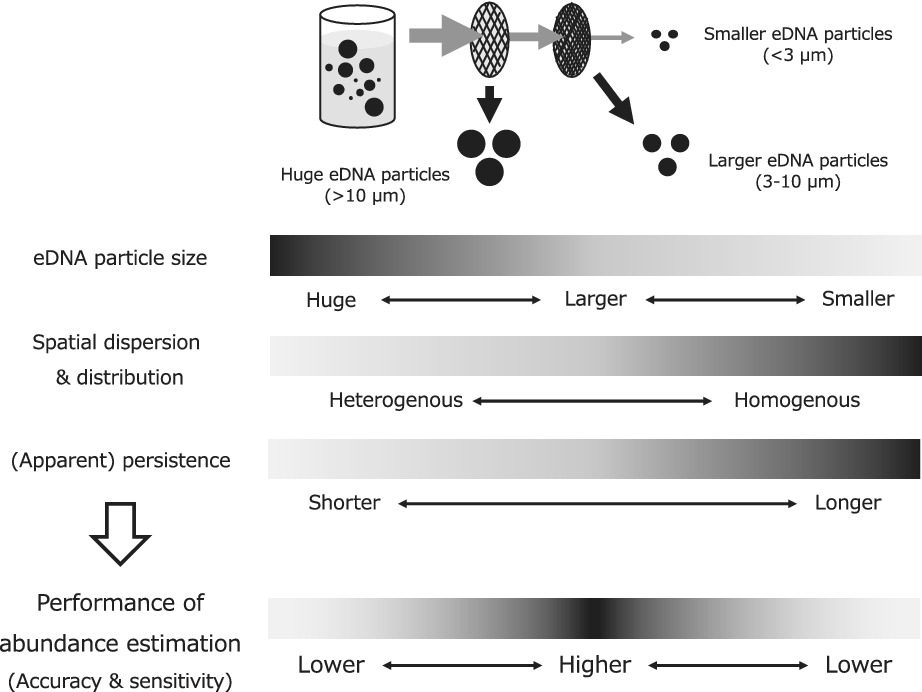
The effects of eDNA particle size and fragment length on the correlation between eDNA and fish abundance were investigated. The result indicated that an “appropriately” larger eDNA particle is vital for improving abundance estimation accuracy and sensitivity. This study proposes that the relationship between eDNA concentration and species abundance relies on the complex interactions between the particle size, persistence, and spatial heterogeneity of eDNA in water.
Seed germination thermal niche differs among nine populations of an annual plant: A modeling approach
- First Published: 26 August 2022
THIS ARTICLE HAS BEEN RETRACTED
Retracted: Distributions of trace elements with long-term grazing exclusion in a semi-arid grassland of inner Mongolia
- First Published: 23 August 2022

The Fe toxicity occurred in the grassland with long-term grazing, and Mn deficiency was observed in the grassland with long-term grazing exclusion. The trace elements were mainly shifted from the green plant and root to soil and litter with 18-year grazing exclusion compared with long-term grazing. The trace elements were mainly shifted from soil and complete decomposed litter to root with continued 39-year grazing exclusion compared with grazing exclusion for 18 years.
RESEARCH ARTICLES
Laboratory measures of boldness correlate with ecological niche in threespine stickleback
- First Published: 23 August 2022
A new index for quantifying the ornamentational complexity of animals with shells
- First Published: 26 August 2022
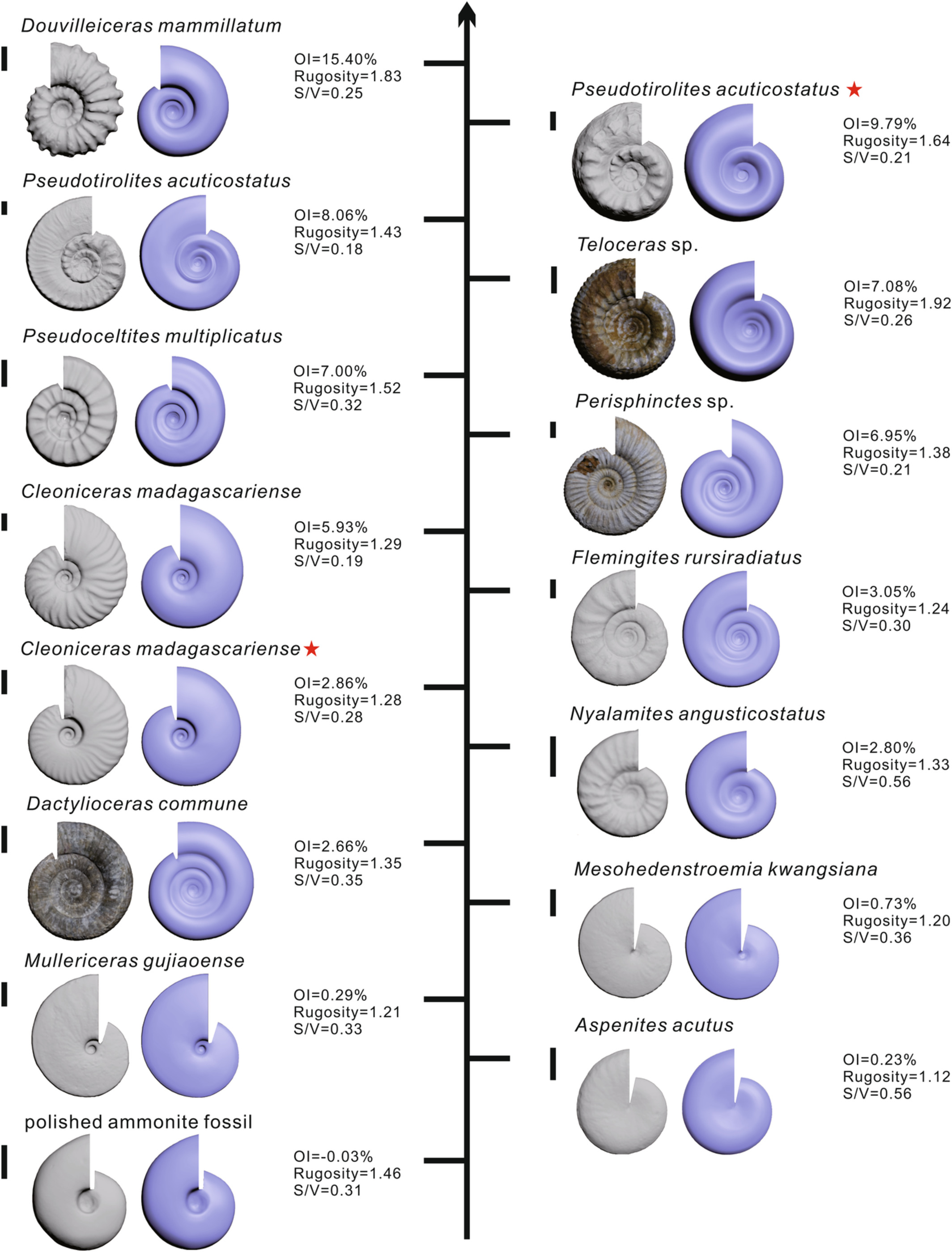
We proposed an ornamentation index (OI) derived from 3D scanning technology and a virtual model for quantifying ornamentation complexity. This index is designed to measure the extent of folding associated with ornamentation, regardless of shape and size. The OI can enhance our understanding of fossil morphology evolution and shelled organisms, irrespective of environmental events or ecological system changes.
Assisted dispersal and reproductive success in an ant species with matchmaking
- First Published: 23 August 2022

The paternity analyses of workers produced by transported female sexuals in a matchmaking ant species show that females can mate multiply. However, if polyandry can be beneficial, it appears, here, to be correlated with a decrease in colony growth rate. This study proposes evolutionary explanations for the persistence of polyandry in Cardiocondyla elegans.
The role of nocturnal fishes on coral reefs: A quantitative functional evaluation
- First Published: 26 August 2022
The performance of field sampling for parasite detection in a wild passerine
- First Published: 23 August 2022
Occupancy data improves parameter precision in spatial capture–recapture models
- First Published: 26 August 2022
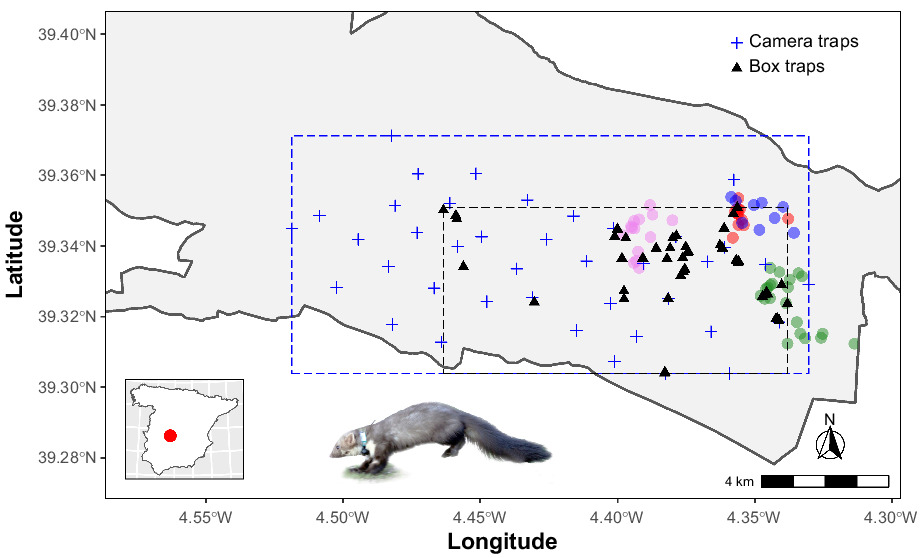
We fitted a spatial capture–recapture integrated model (SCR-IM) to stone marten (Martes foina) data, and estimate population size based on integration of three submodels: (1) individual capture histories from live capture and transponder tagging; (2) detection/nondetection or “occupancy” data using camera traps in a bigger area to extend the geographic scope of capture–recapture data; and (3) telemetry data from a set of tagged individuals. The SCR-IM density estimation improved the precision by 37% when compared to the standard SCR model.
Molting phenology of a lacustrine ringed seal, Pusa hispida saimensis
- First Published: 23 August 2022
Relationship between diversity and stability of a karst plant community
- First Published: 26 August 2022
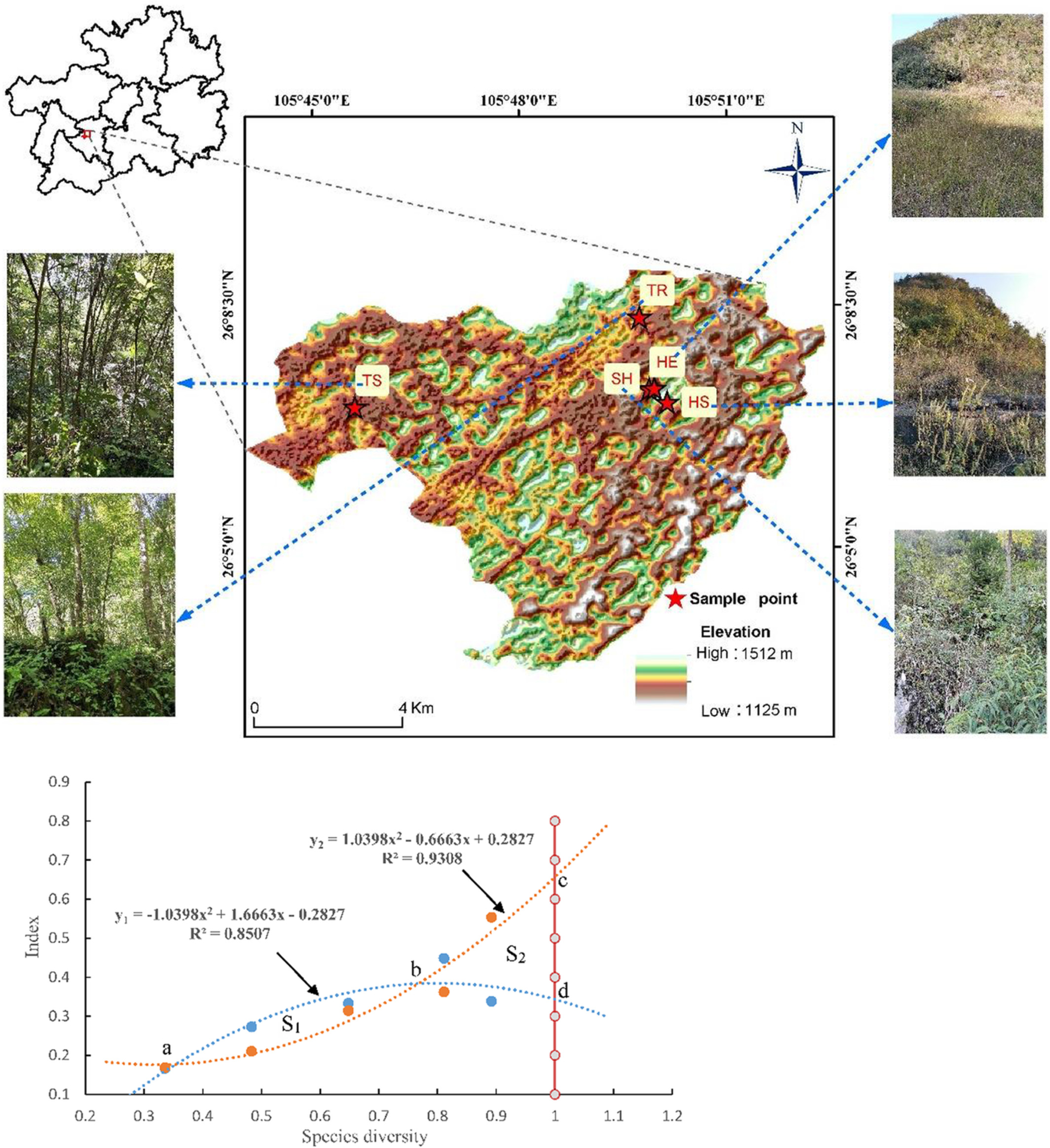
This paper examines plant communities at different stages of vegetation restoration in the Guizhou karst plateau to study the relationship among functional diversity, functional redundancy, and stability of plant communities. The most important results include the following. (1) Species diversity (SD), functional redundancy (FR), and stability (STB) gradually increased with restoration, and there were significant differences among the different stages; (2) During the community recovery, FD and FR interacted to maintain stability. In the early and late stages of recovery, the effect of functional redundancy on stability was greater than that of functional diversity, but it was the opposite in the middle stages; (3) The tree and shrub trasiti stage is the likely point at which the functional diversity of plant communities in karst areas reached saturation.
Habitat selection in a fluctuating ground squirrel population: Density-dependence and fitness consequences
- First Published: 29 August 2022
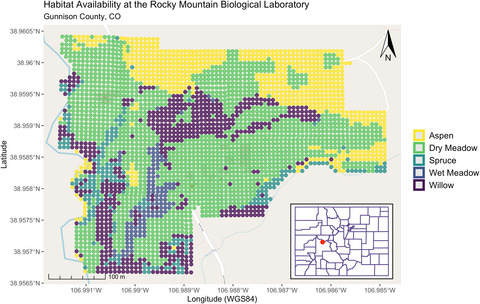
We quantified habitat selection in golden-mantled ground squirrels (Callospermophilus lateralis) across two spatial scales (home range placement, and occurrence within the home range) by using 11 consecutive years of data on individual space use, and we used resource selection functions and multilevel modeling to address how habitat preferences may be influenced by density or linked to fitness outcomes. Surprisingly, squirrels maintained their preference for dry meadow as density increased, and they experienced reduced survival as a result. This work furthers our understanding about the causes and consequences of changes in habitat use, providing insight to wildlife management and conservation.
The genome and diet of a 35,000-year-old Canis lupus specimen from the Paleolithic painted cave, Chauvet-Pont d'Arc, France
- First Published: 23 August 2022
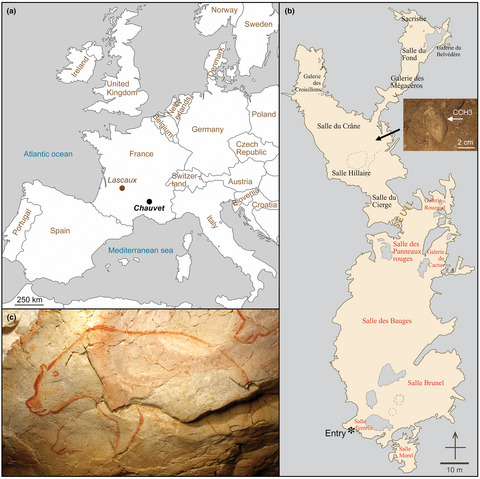
We analyzed a coprolite (fossil feces) from the Paleolithic painted cave of Chauvet-Pont d'Arc (Ardèche, France). AMS radiocarbon dated yielded an age of 30,450 ± 550 radiocarbon yr. BP (36,150–34,000 cal BP), similar to ages assigned to Paleolithic artwork from the same cave sector. Using high-throughput ancient DNA sequencing, we demonstrate that the coprolite corresponds to feces produced by a female gray wolf that had consumed cave bear tissue; the Chauvet wolf specimen is more related to Eurasian gray wolves than to domestic dogs, especially ancient Western Eurasian wolves that delineate an extinct lineage.




